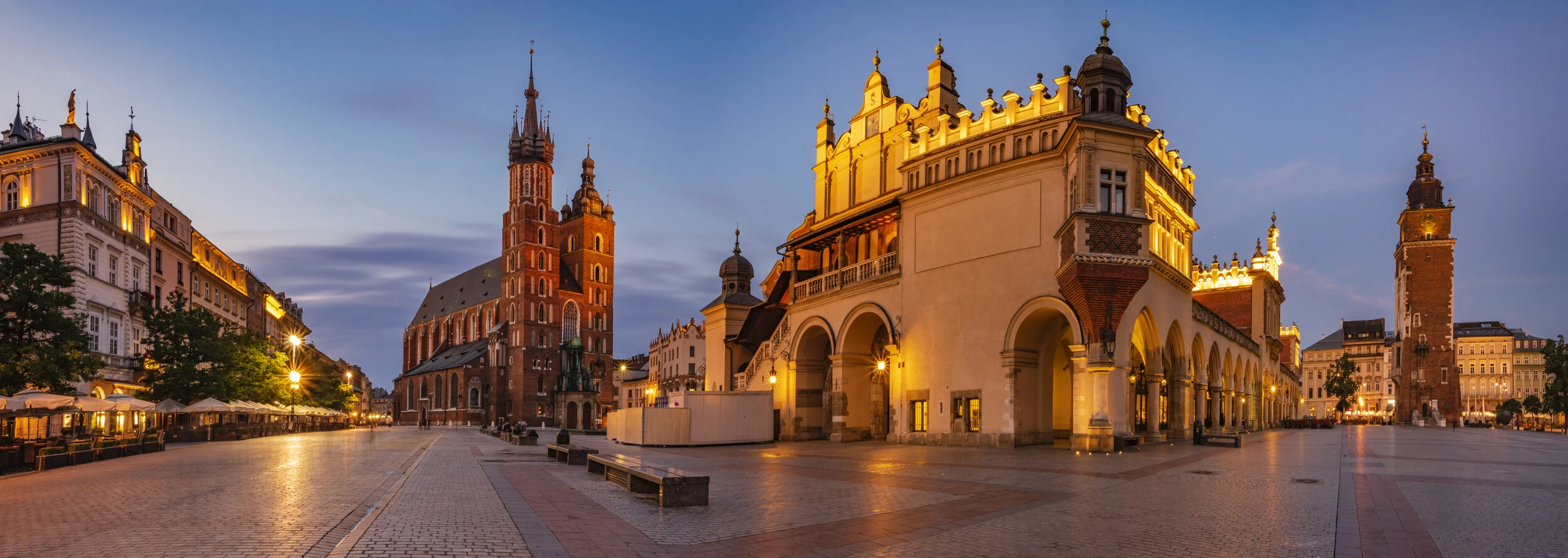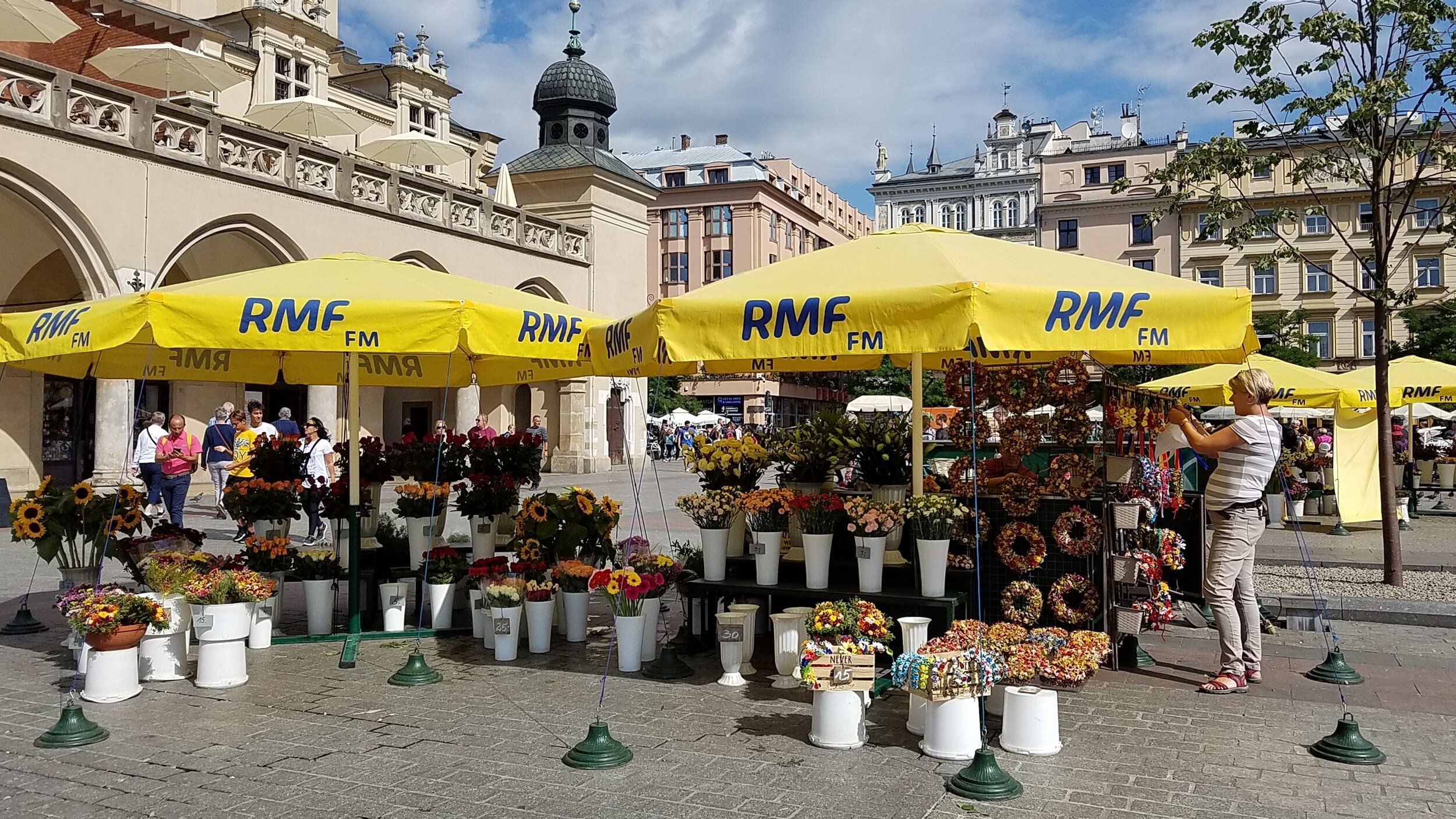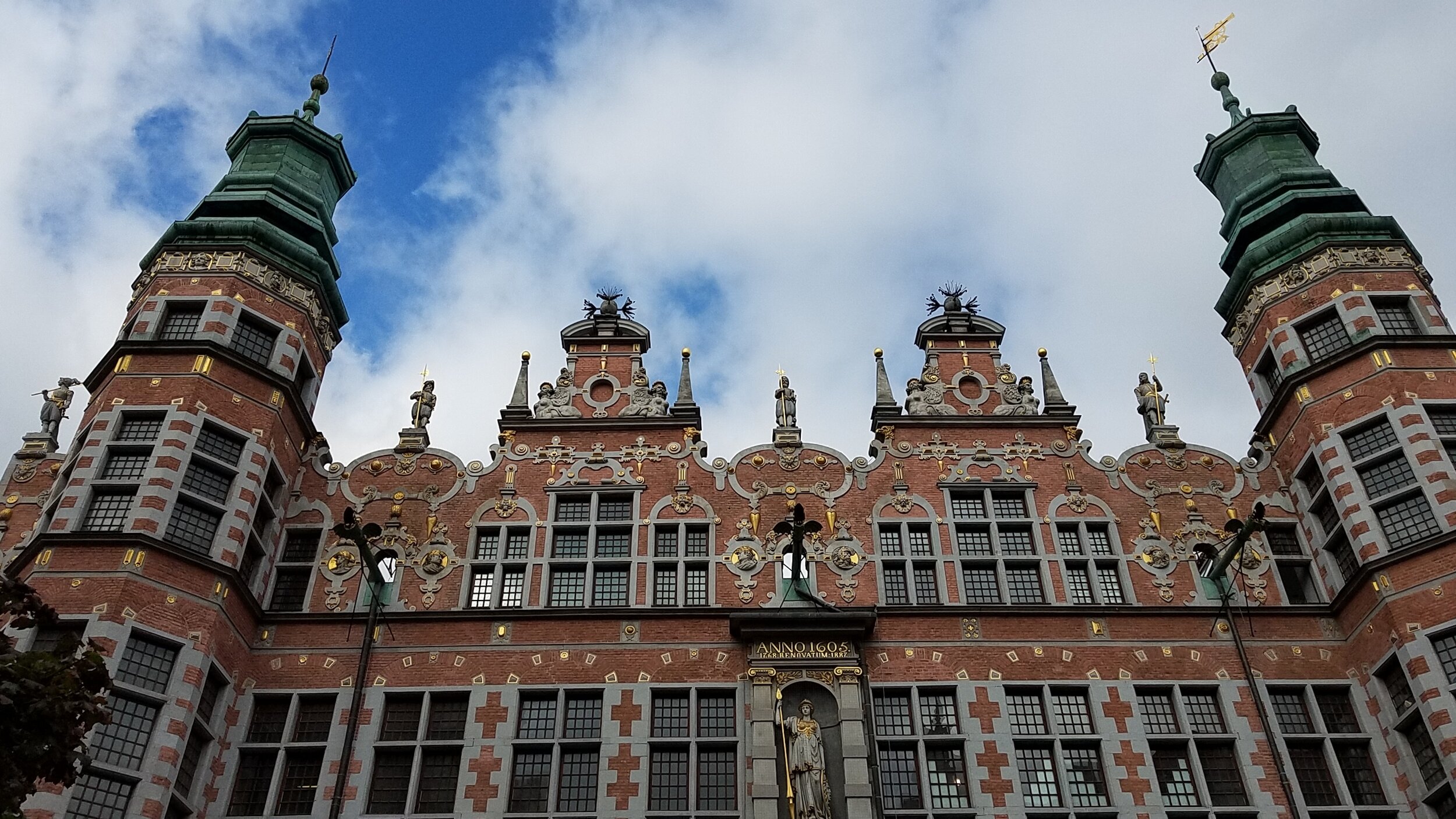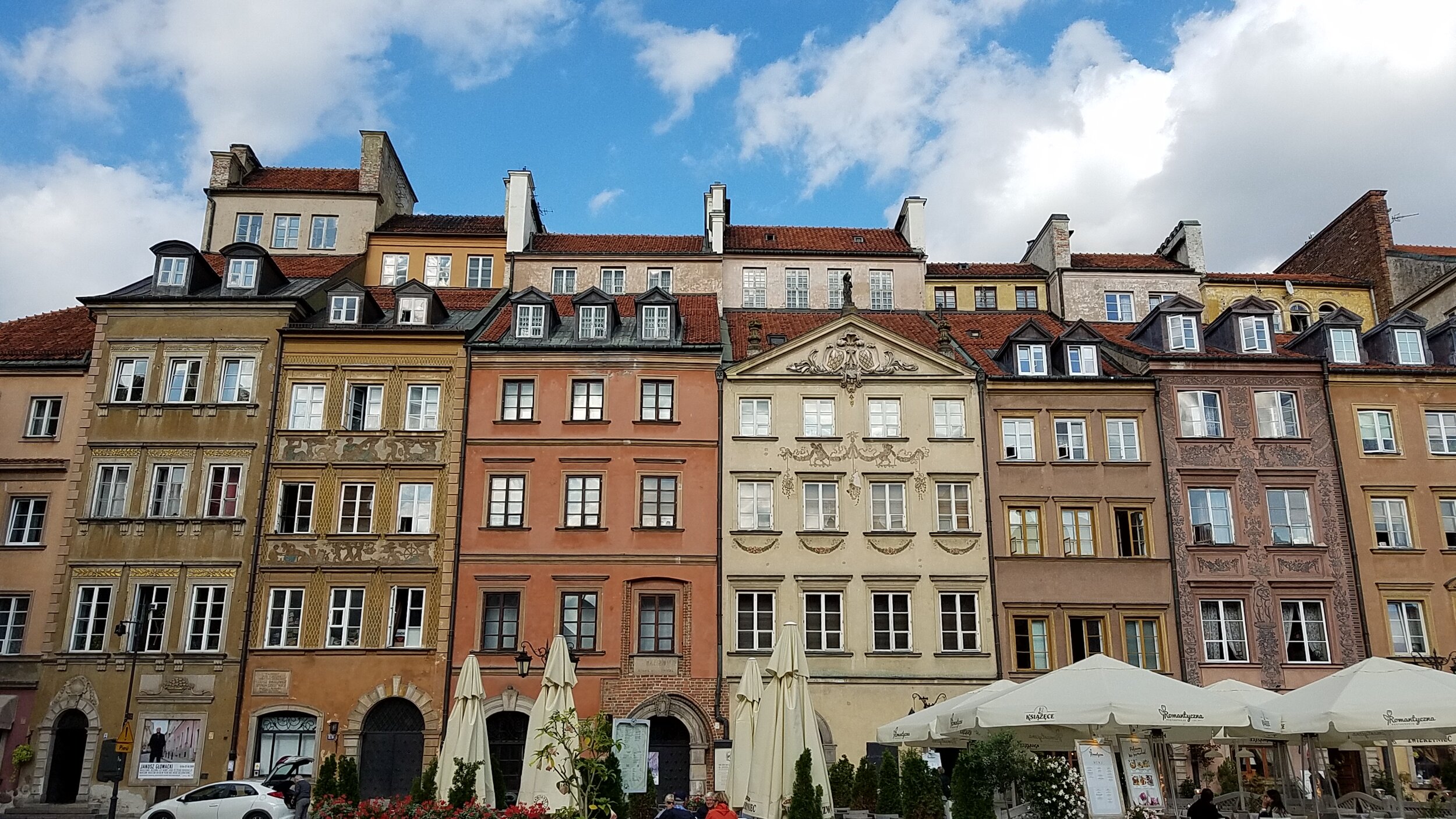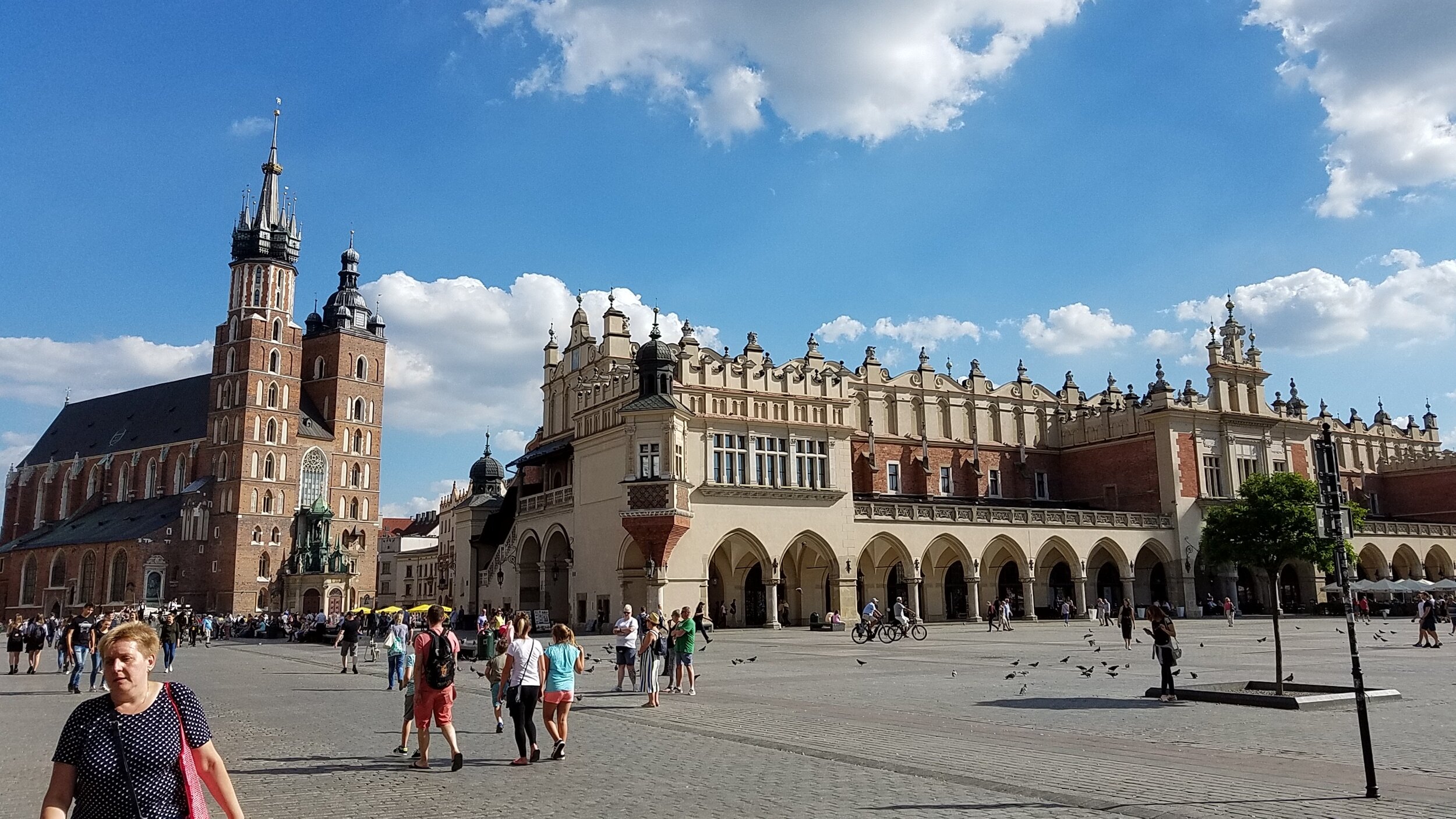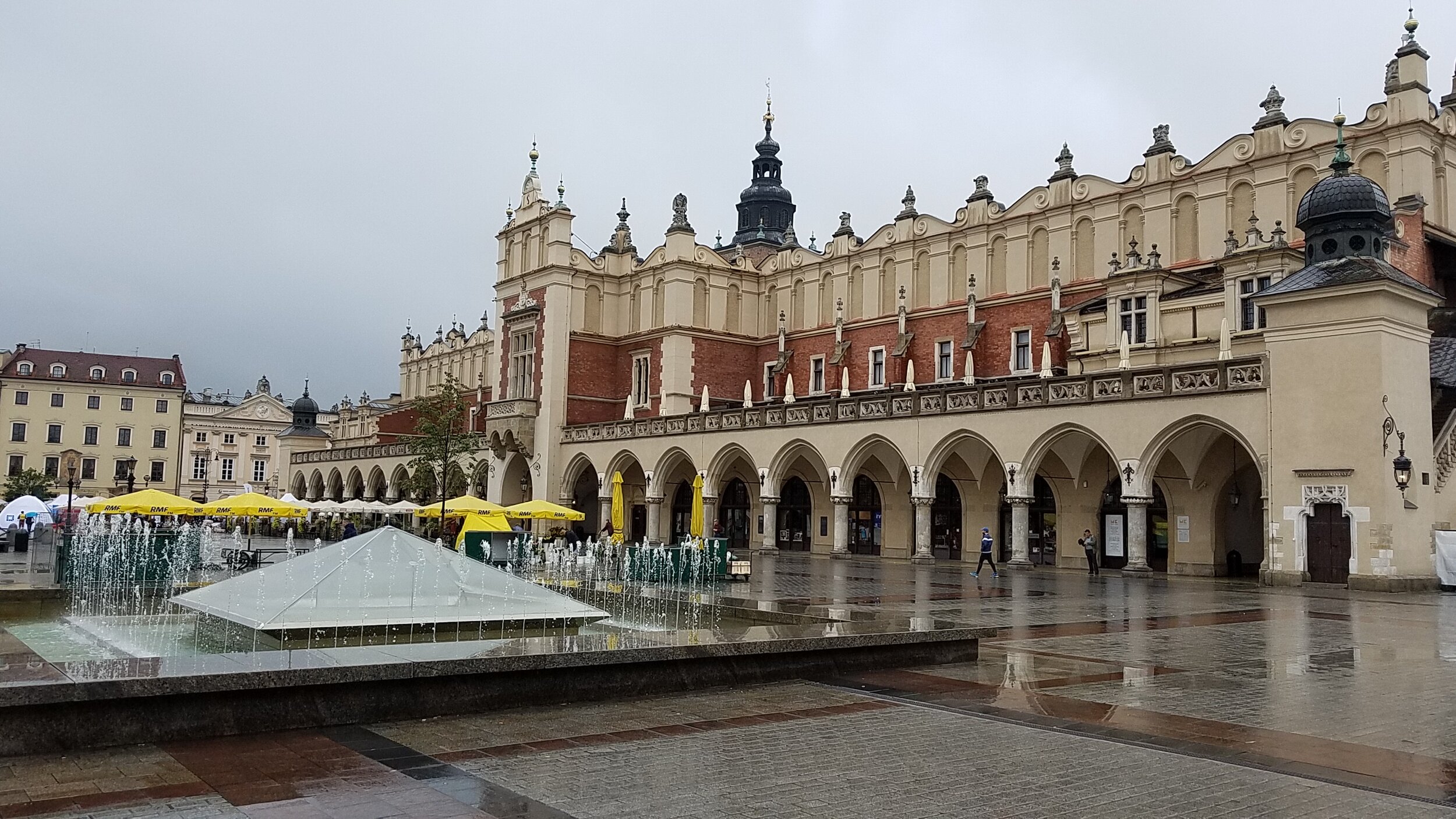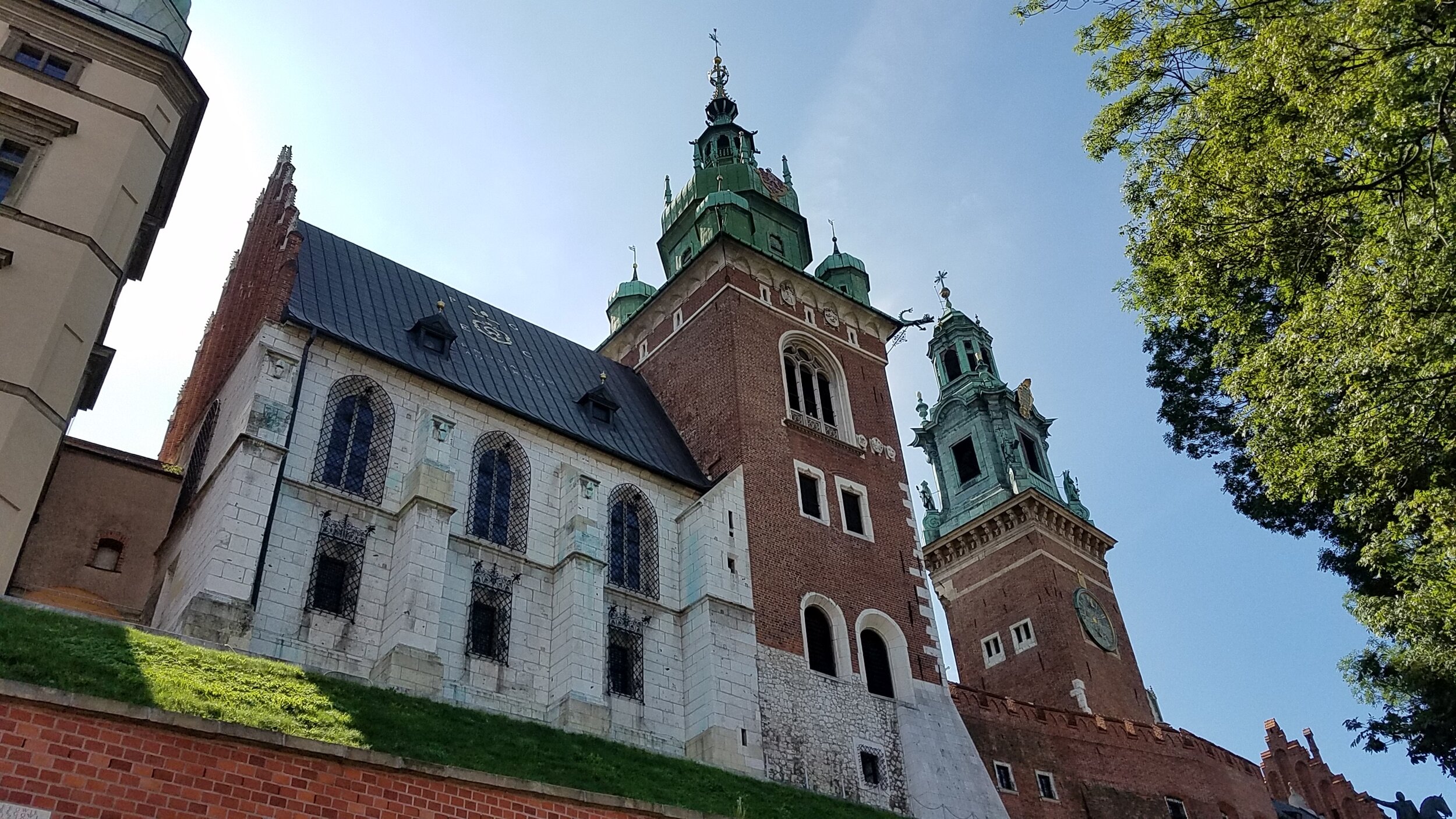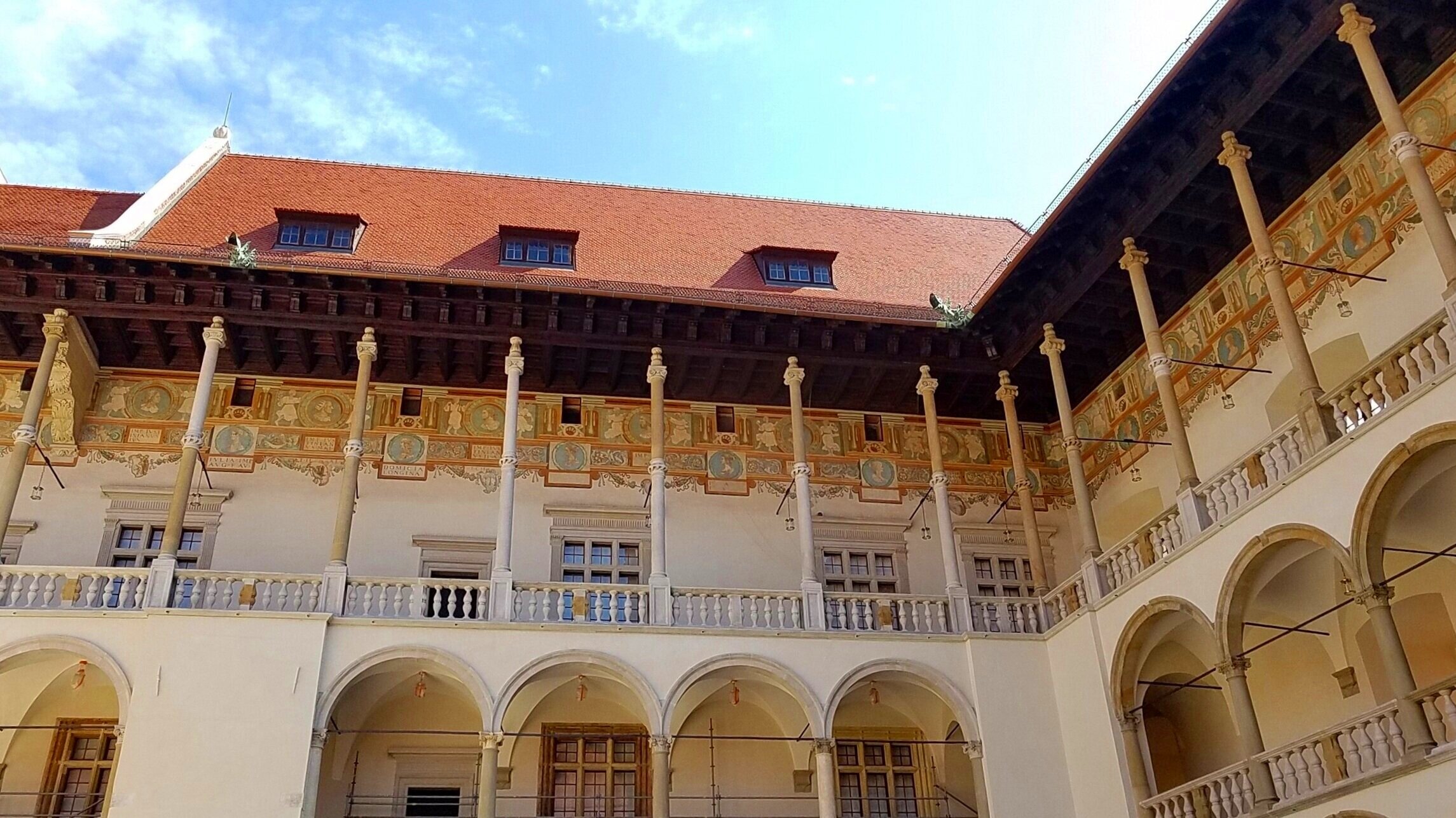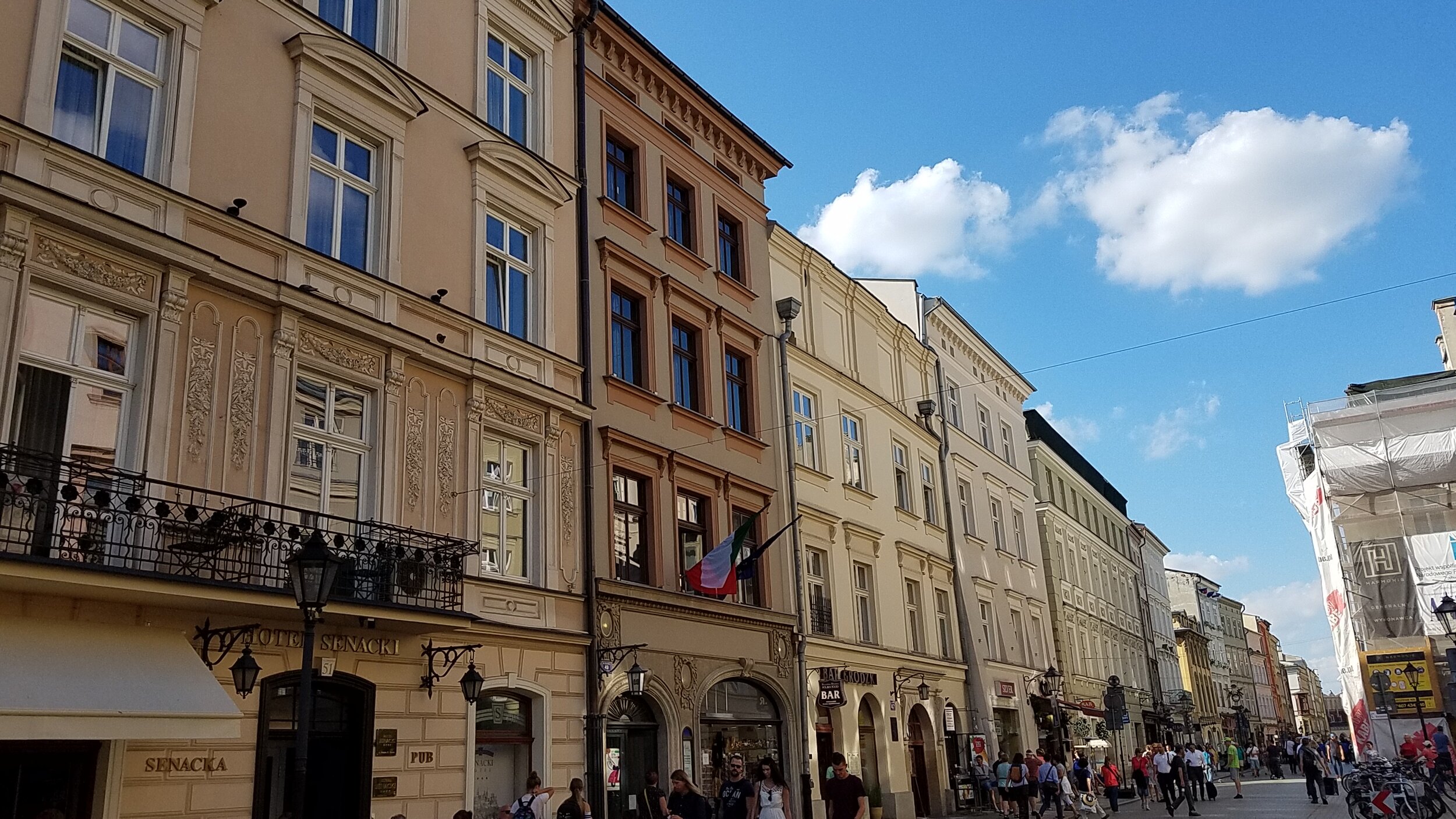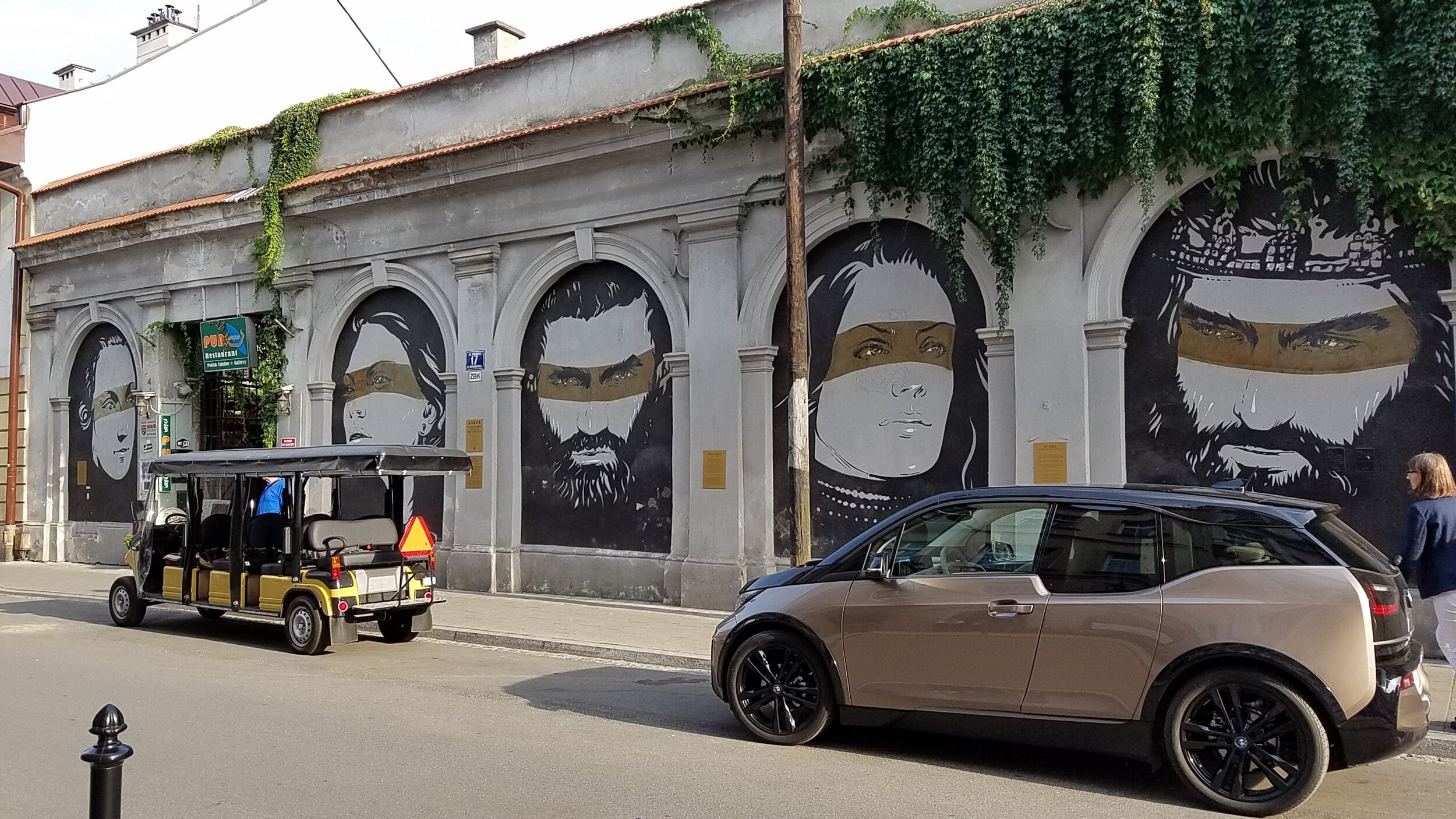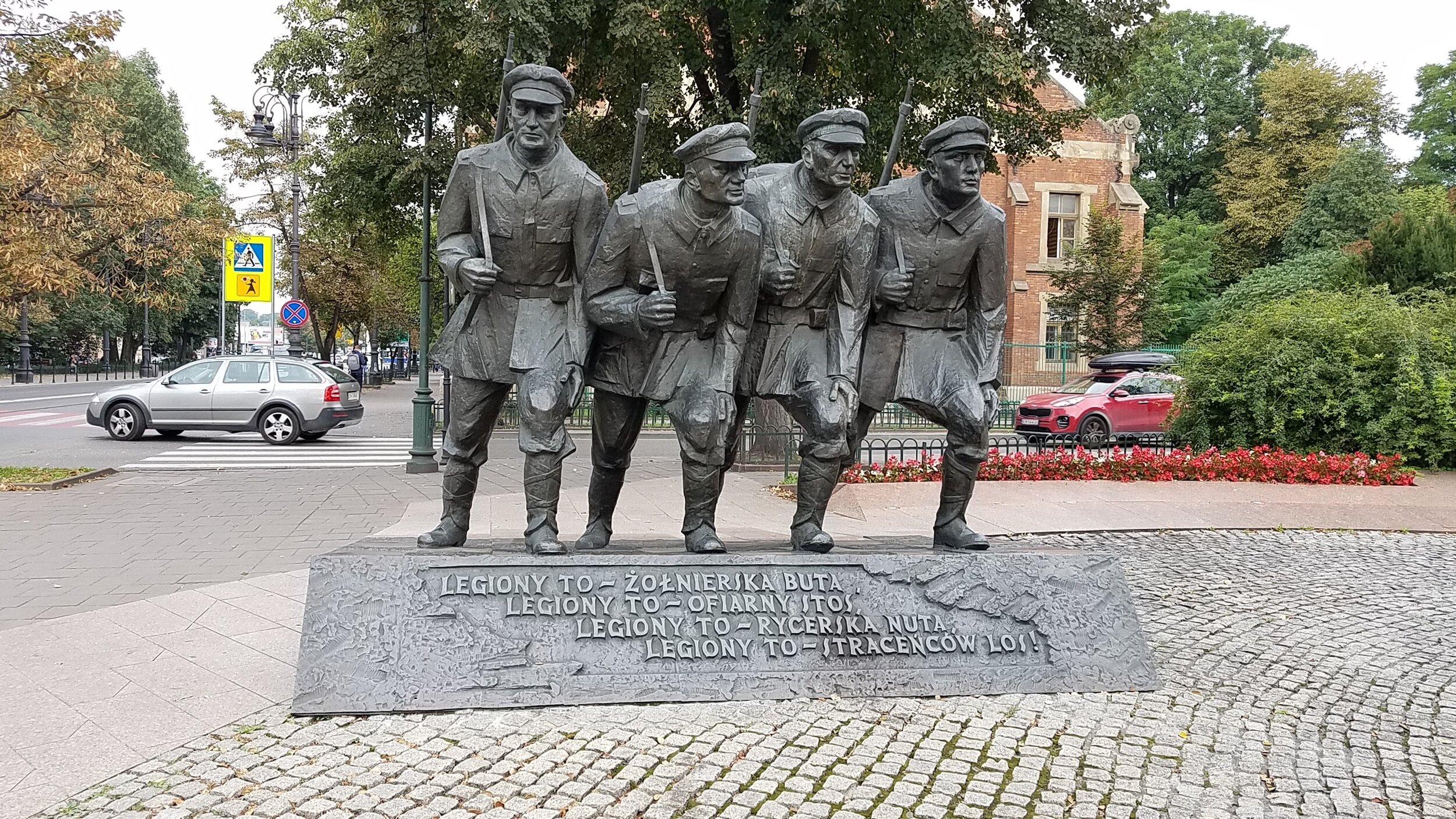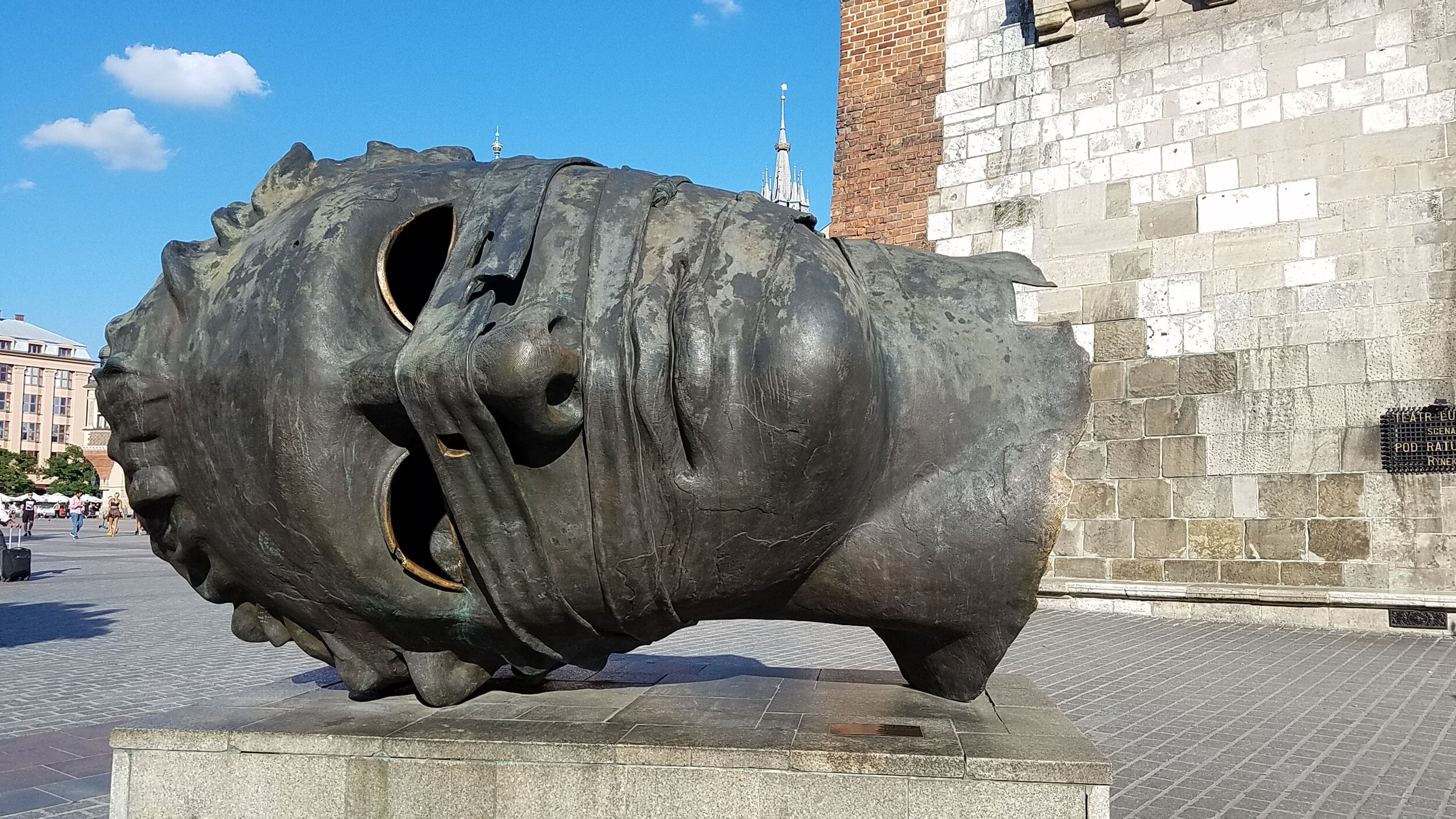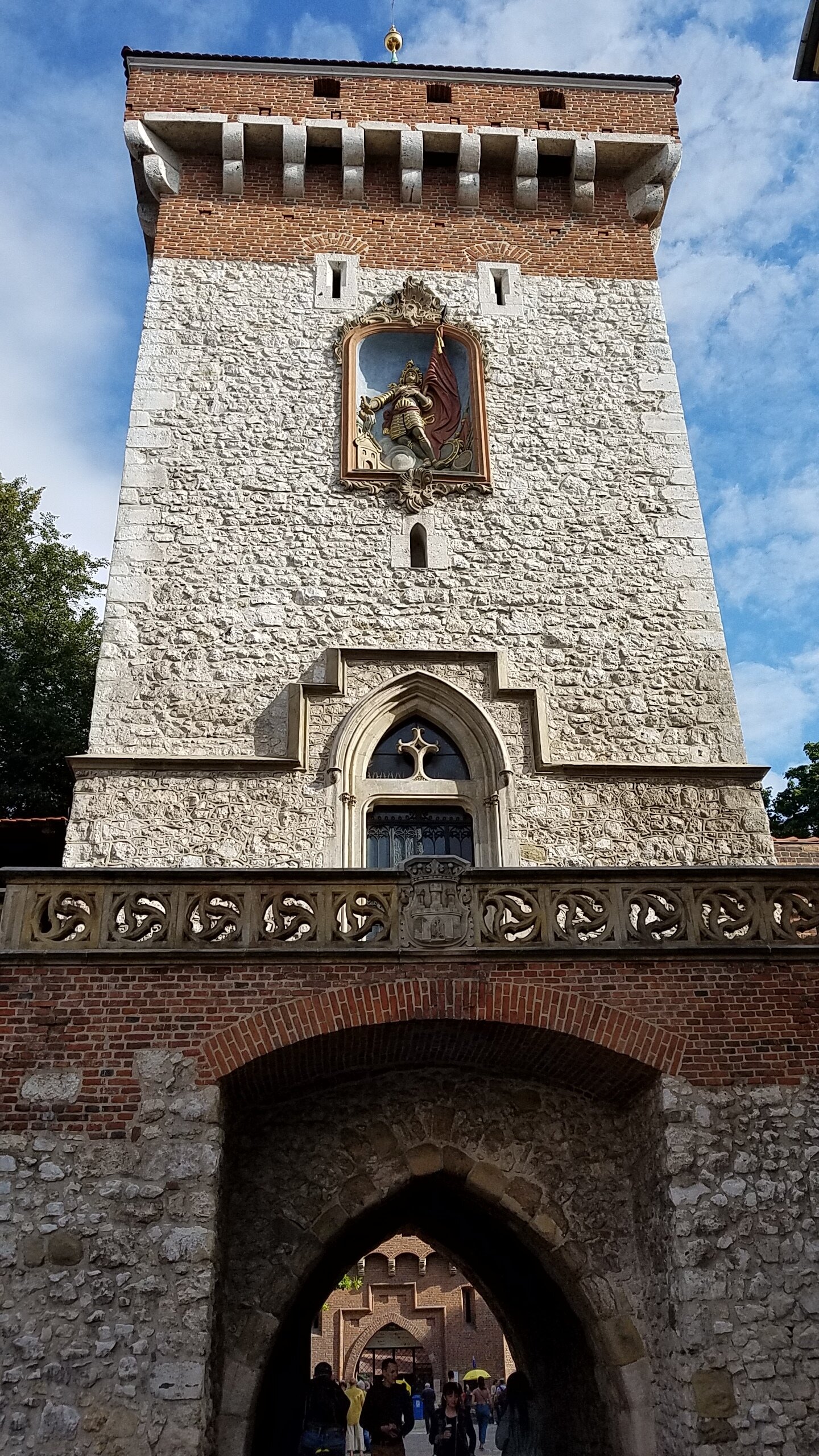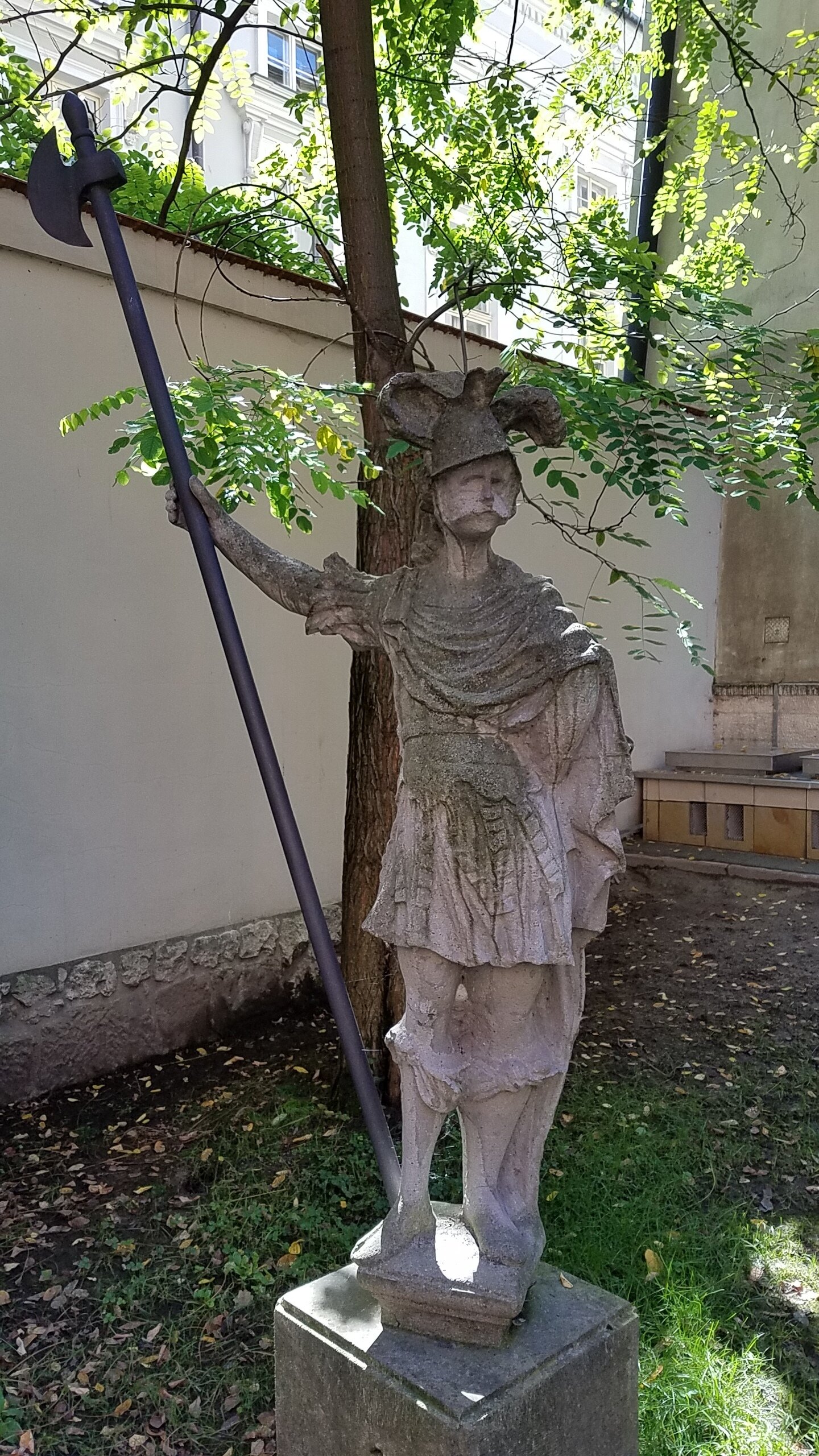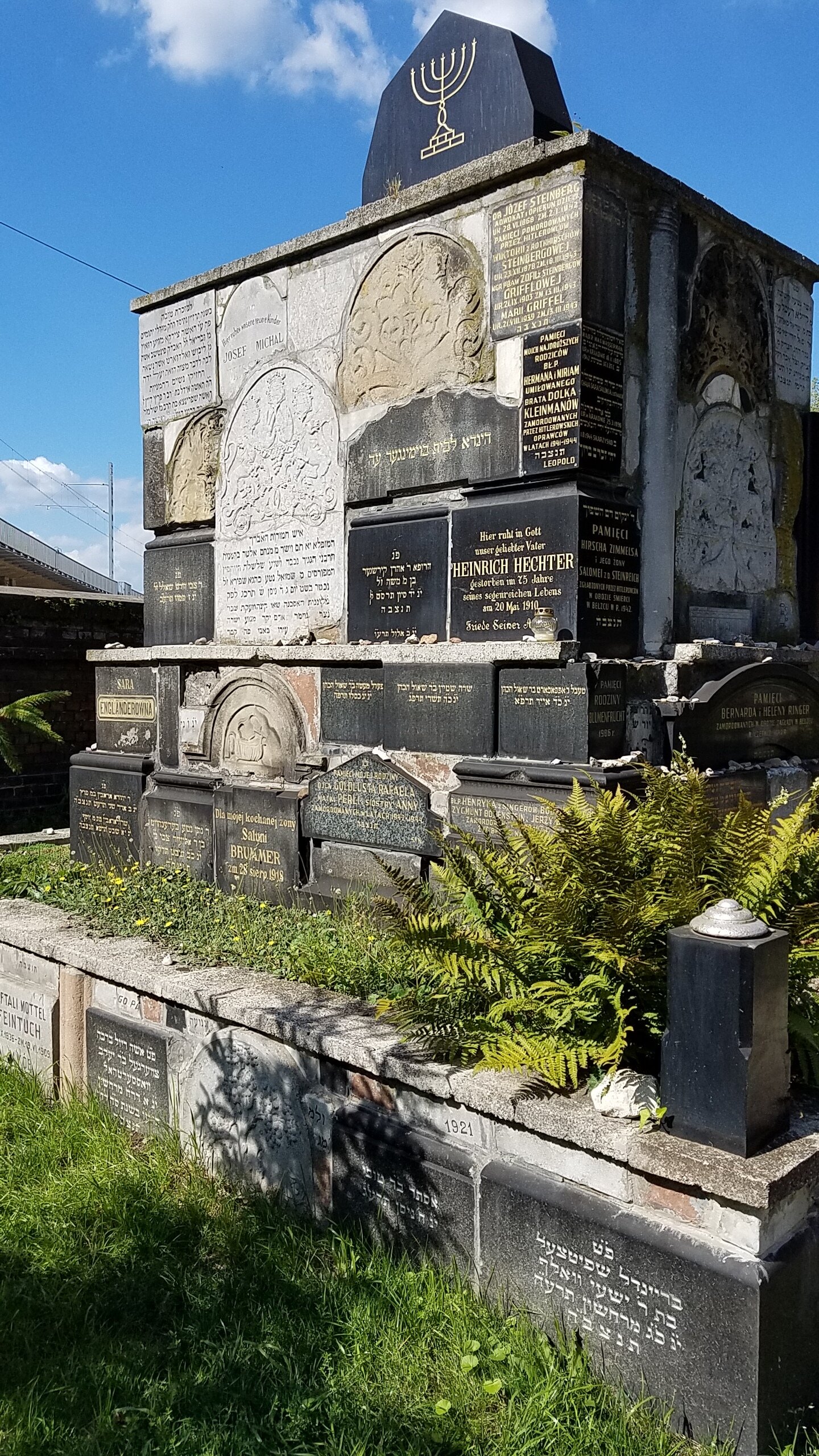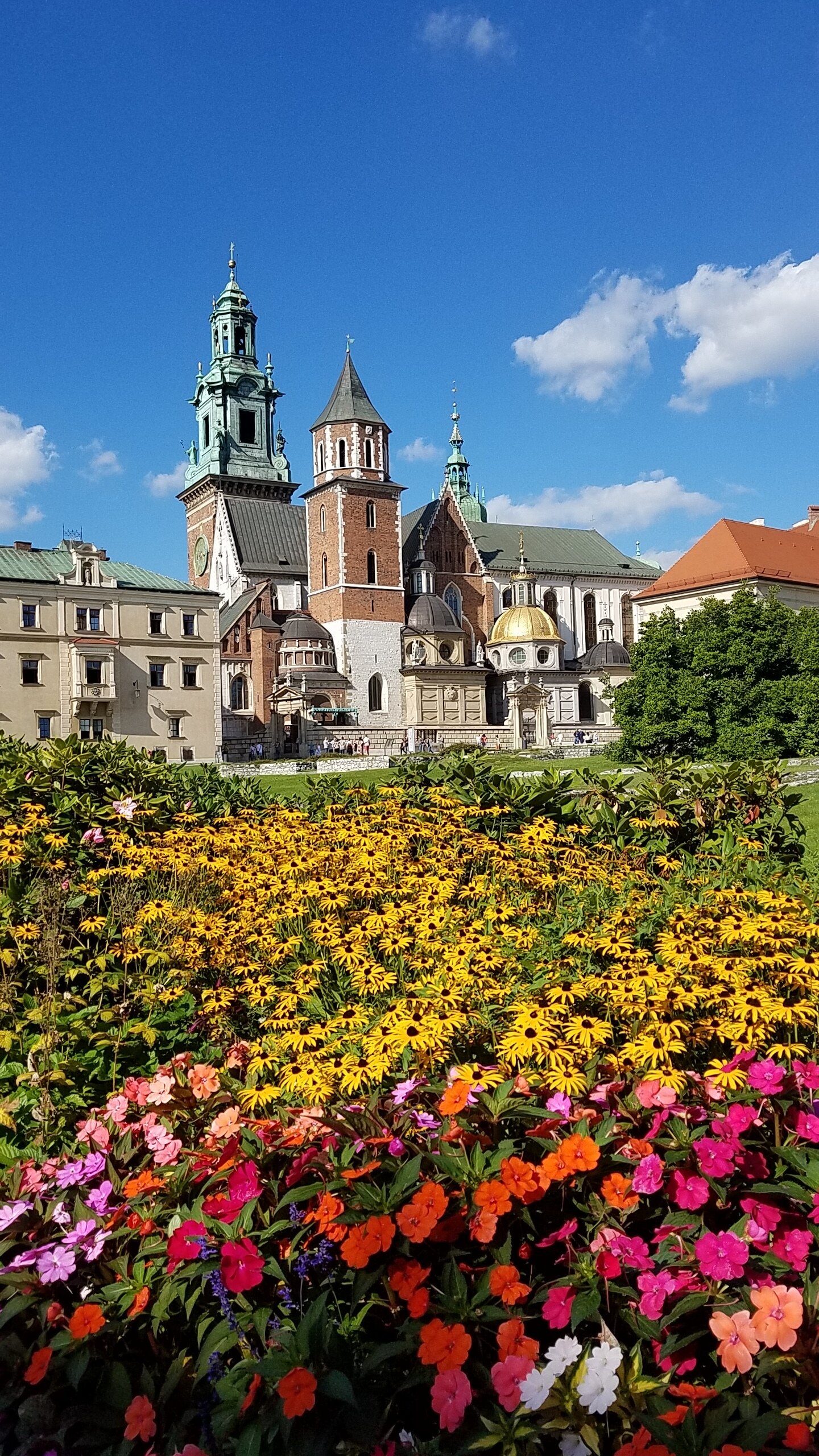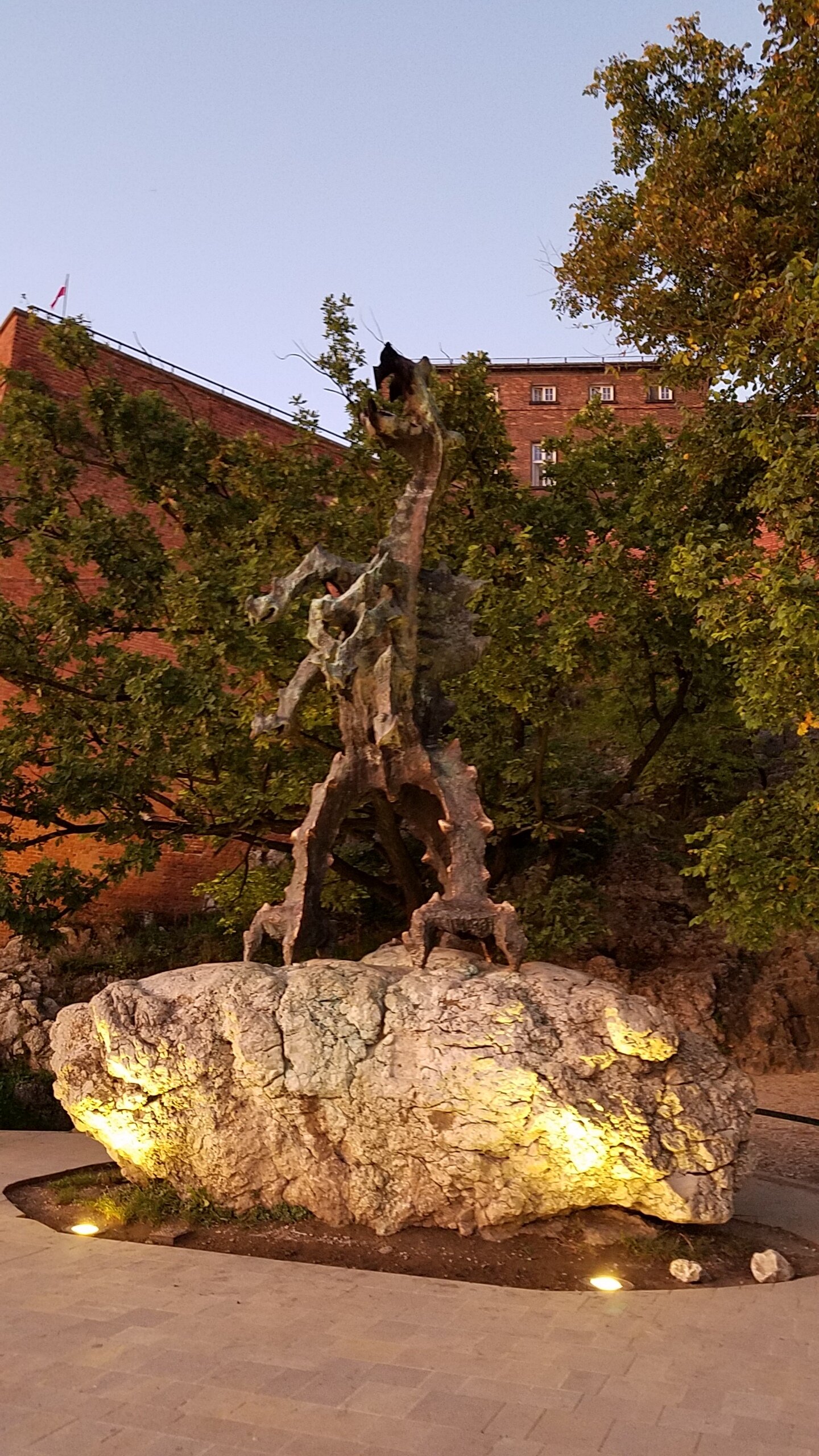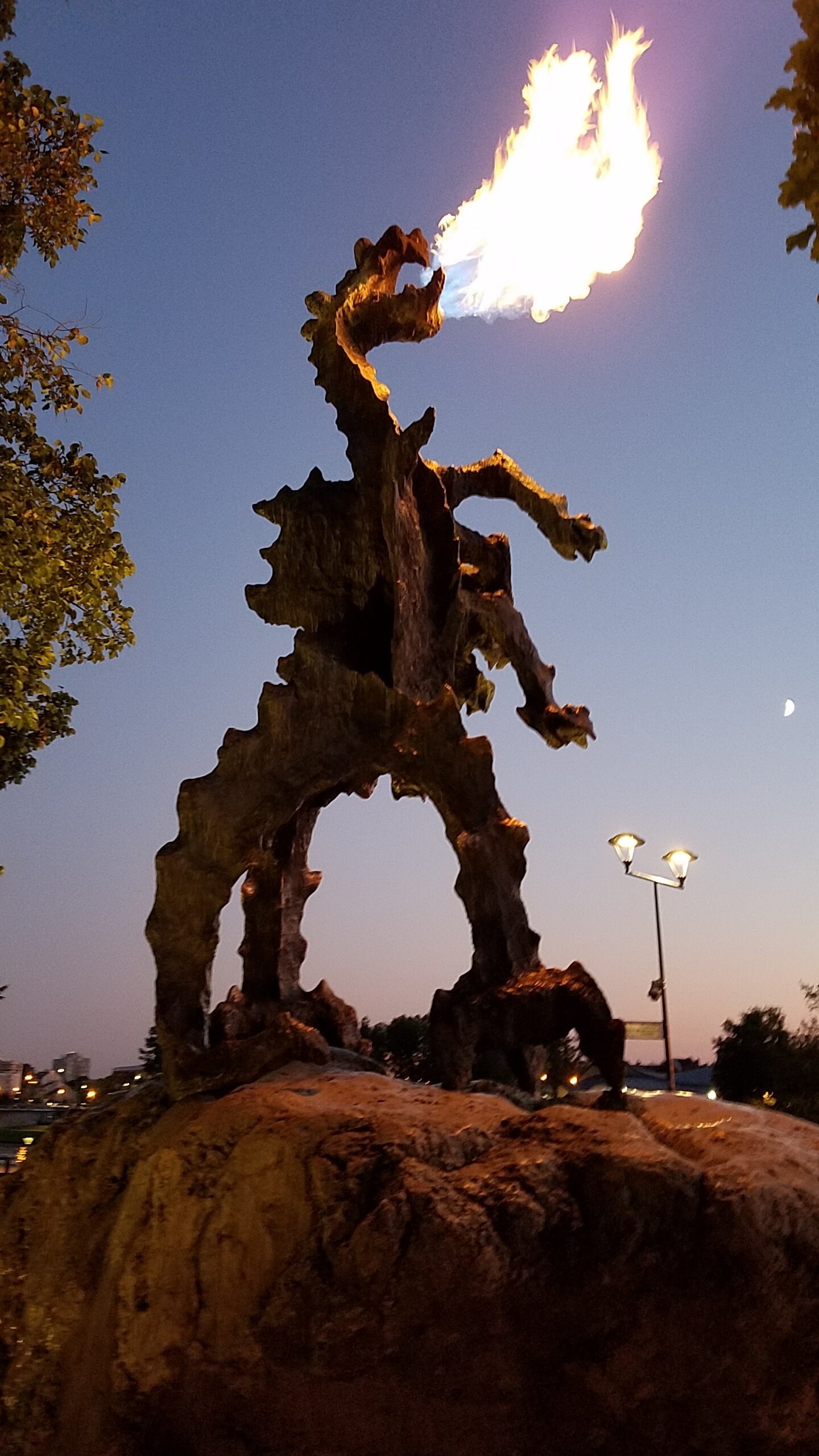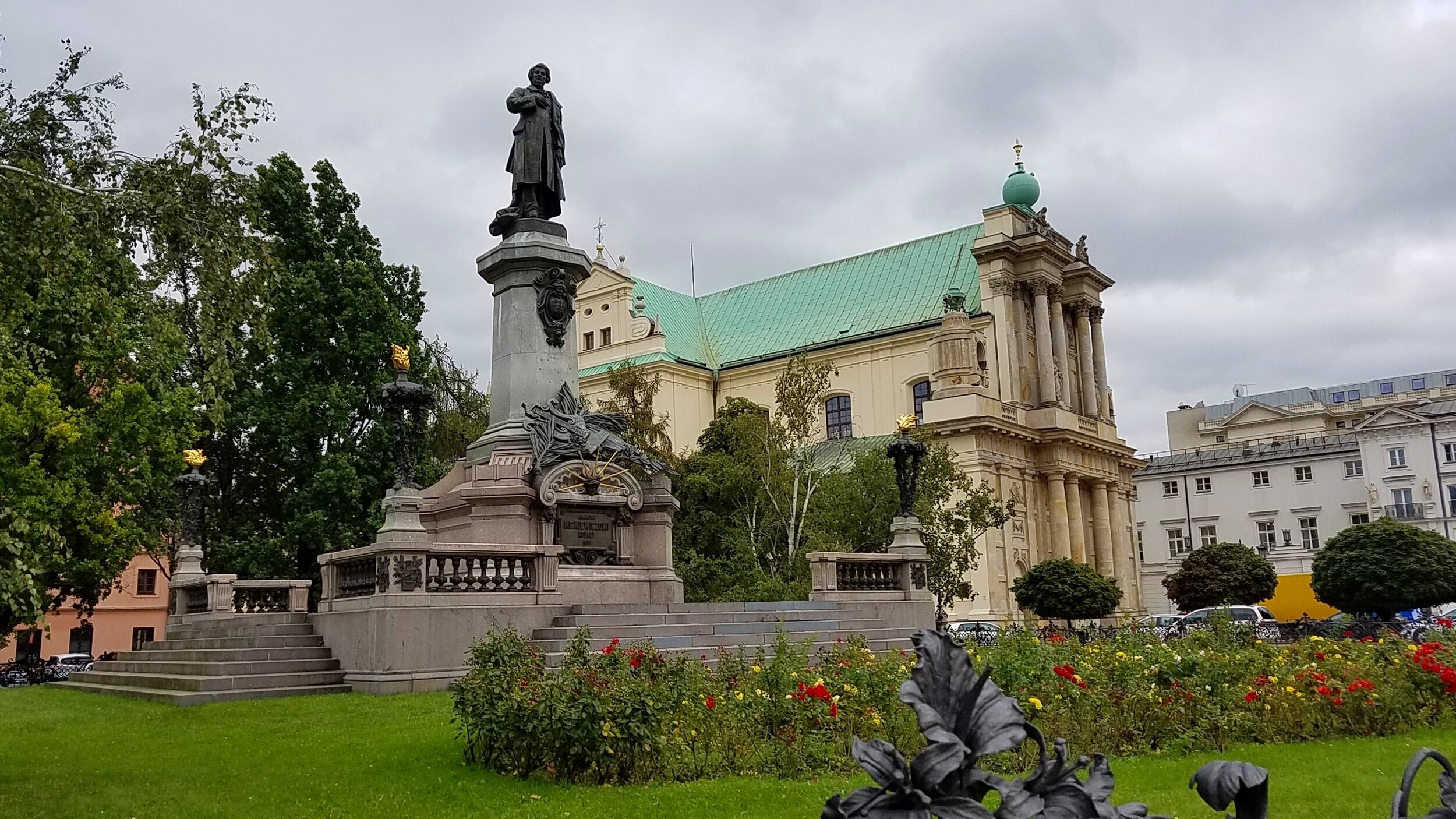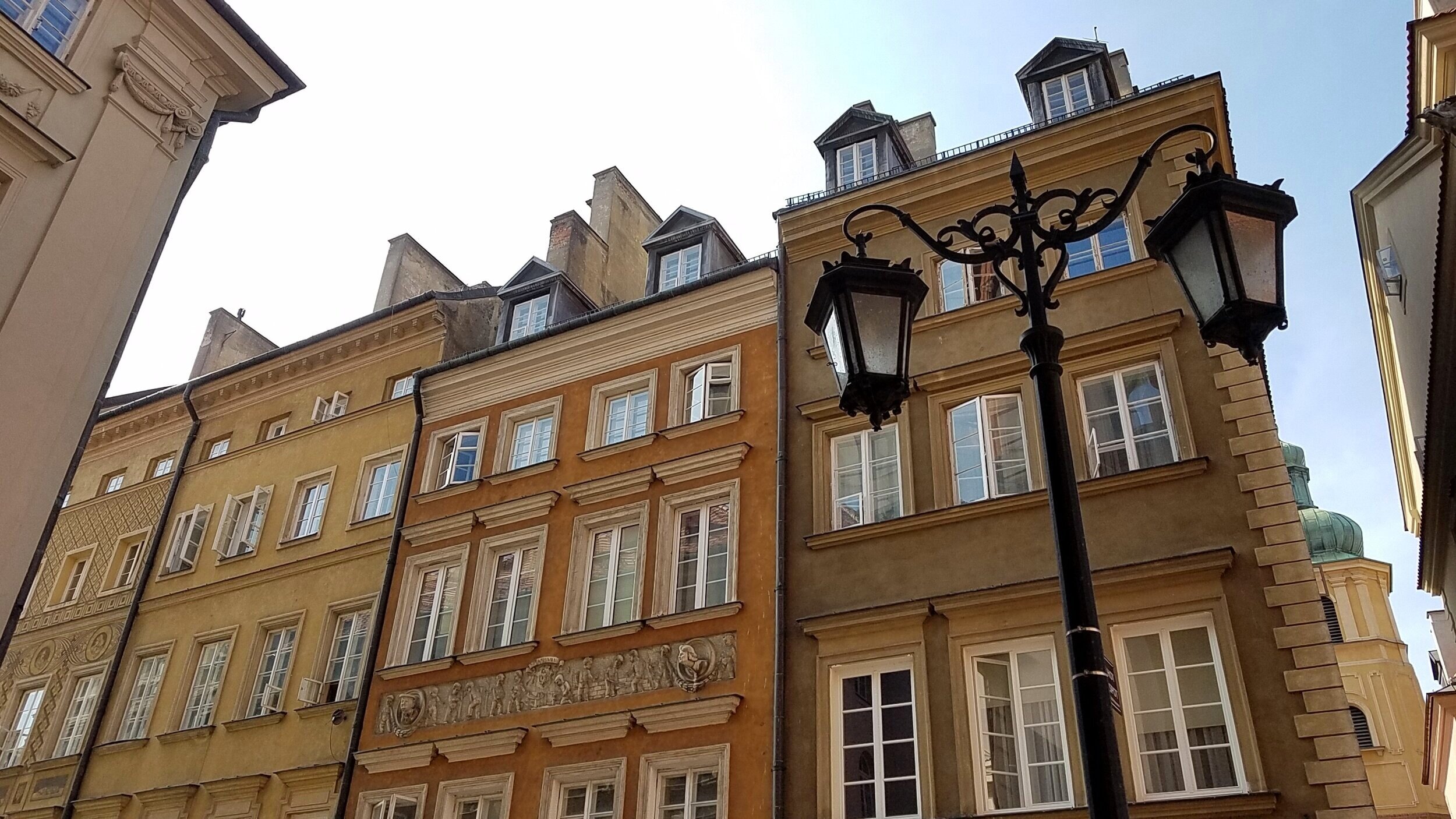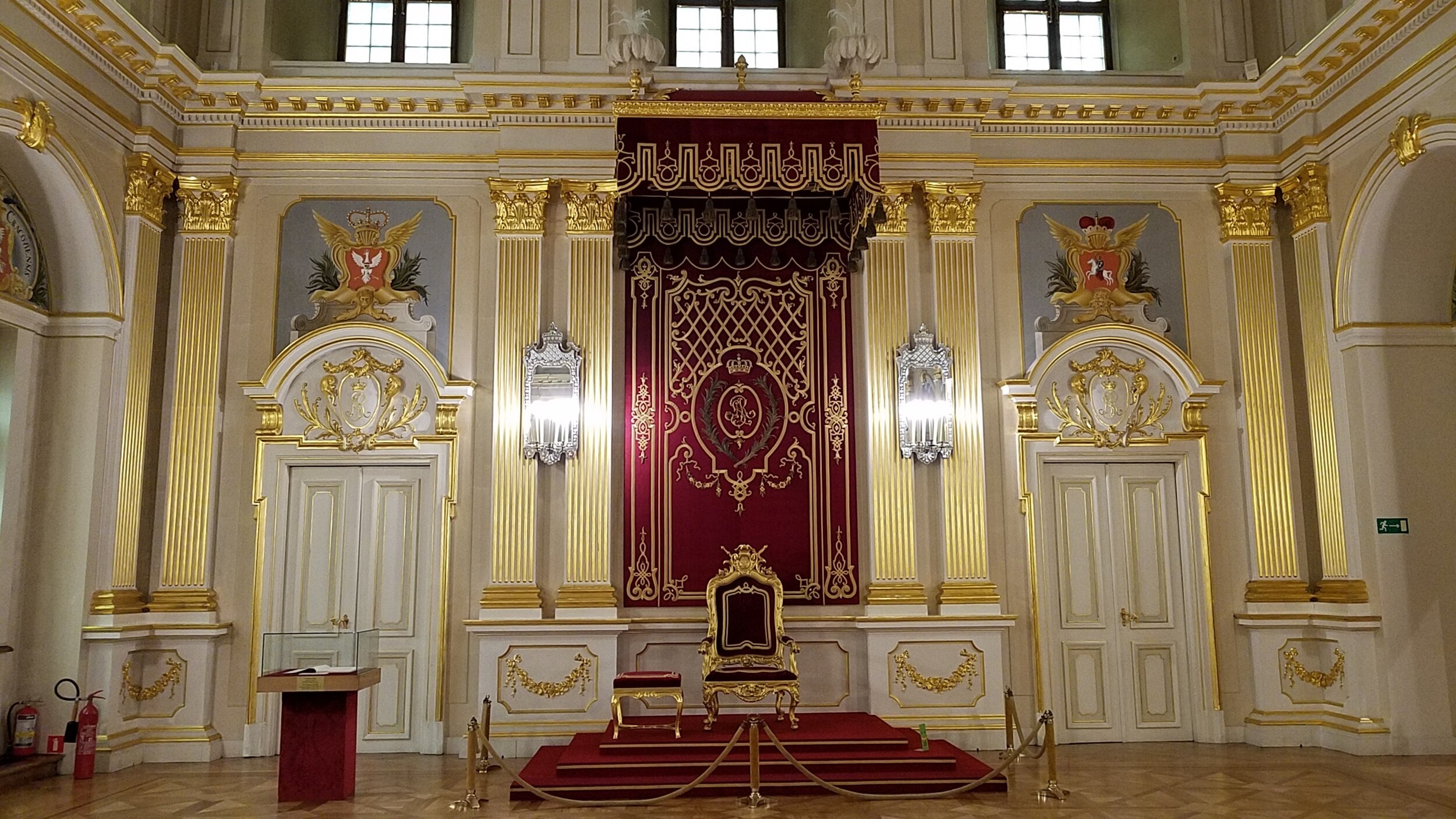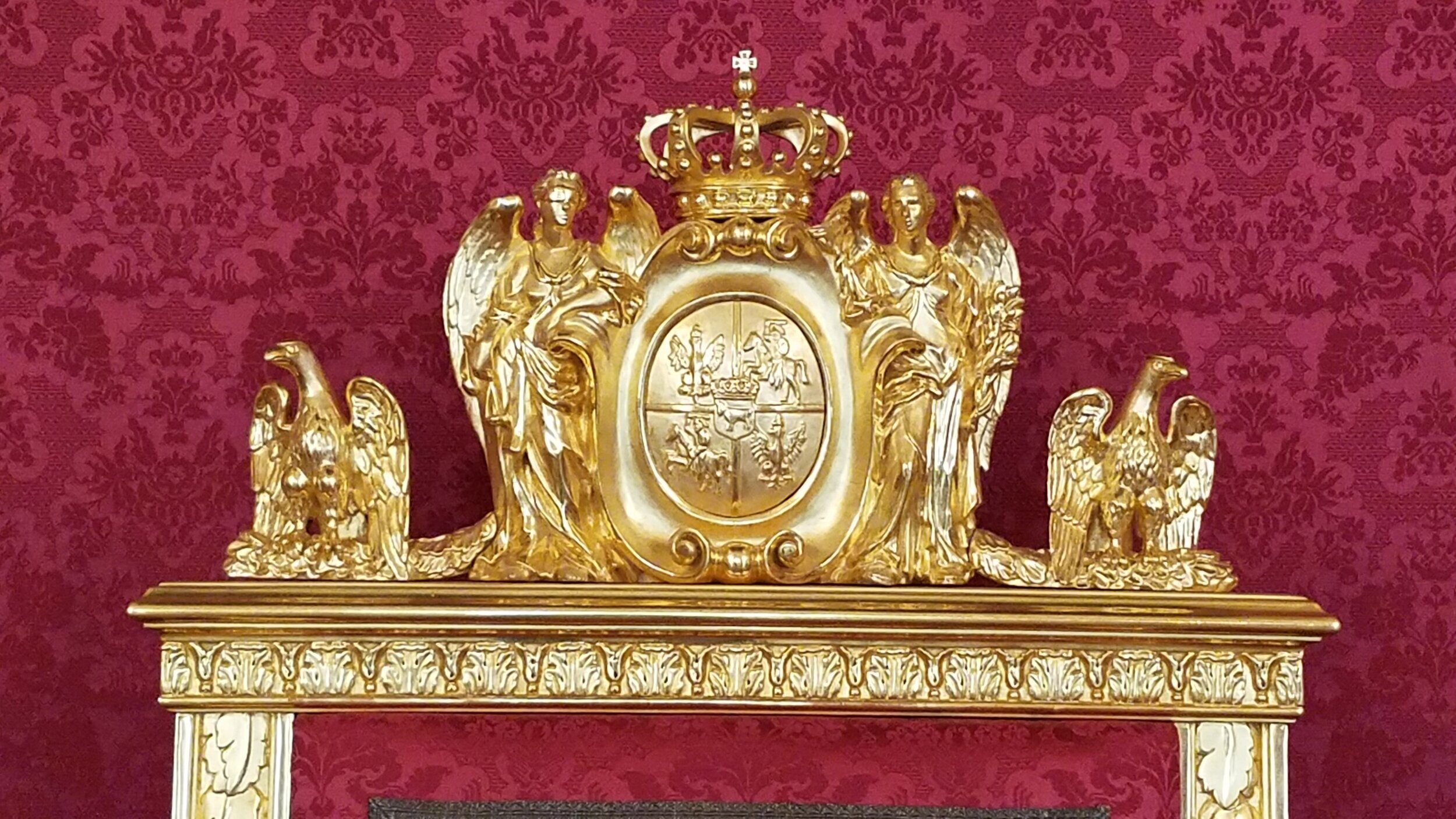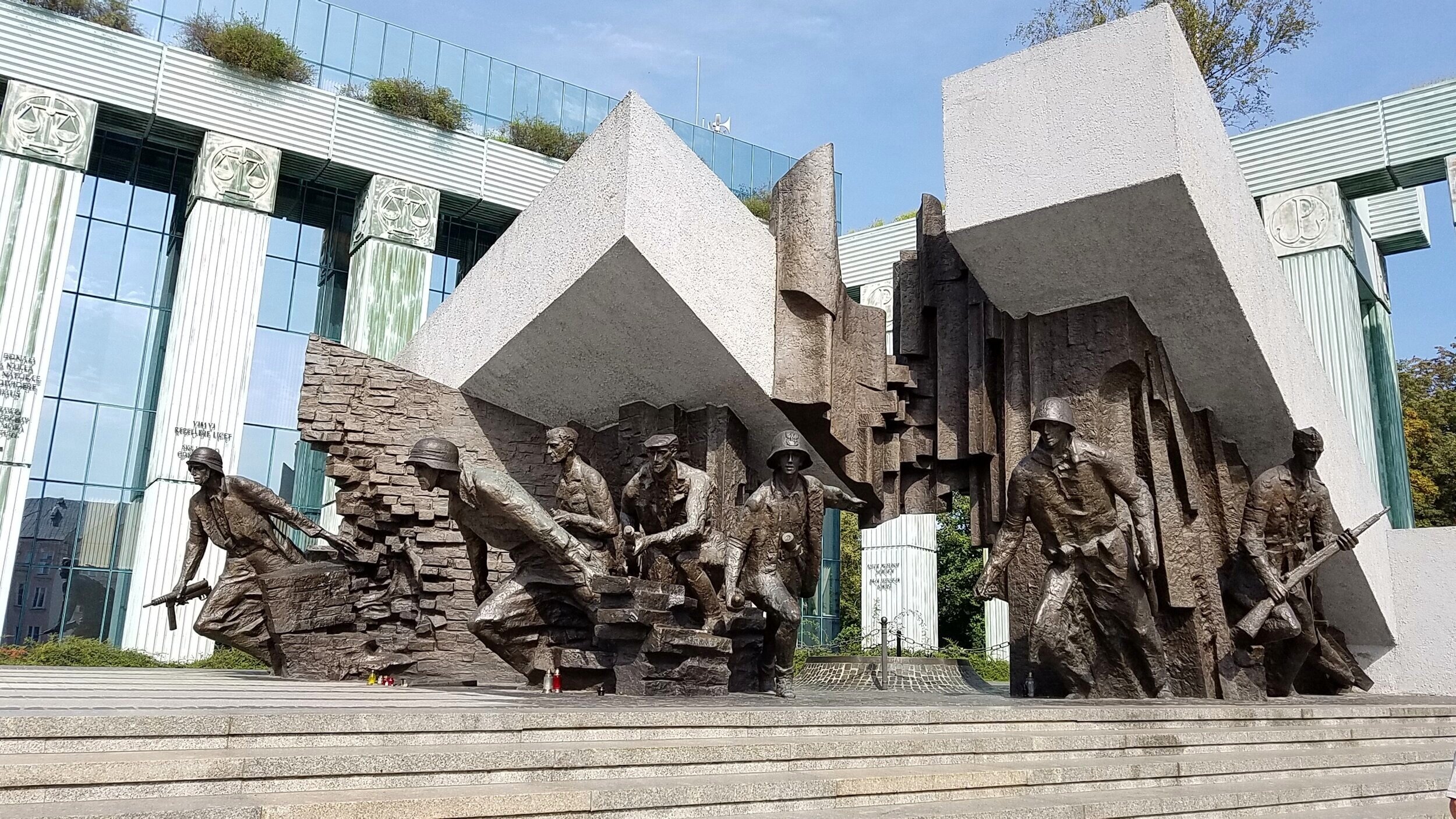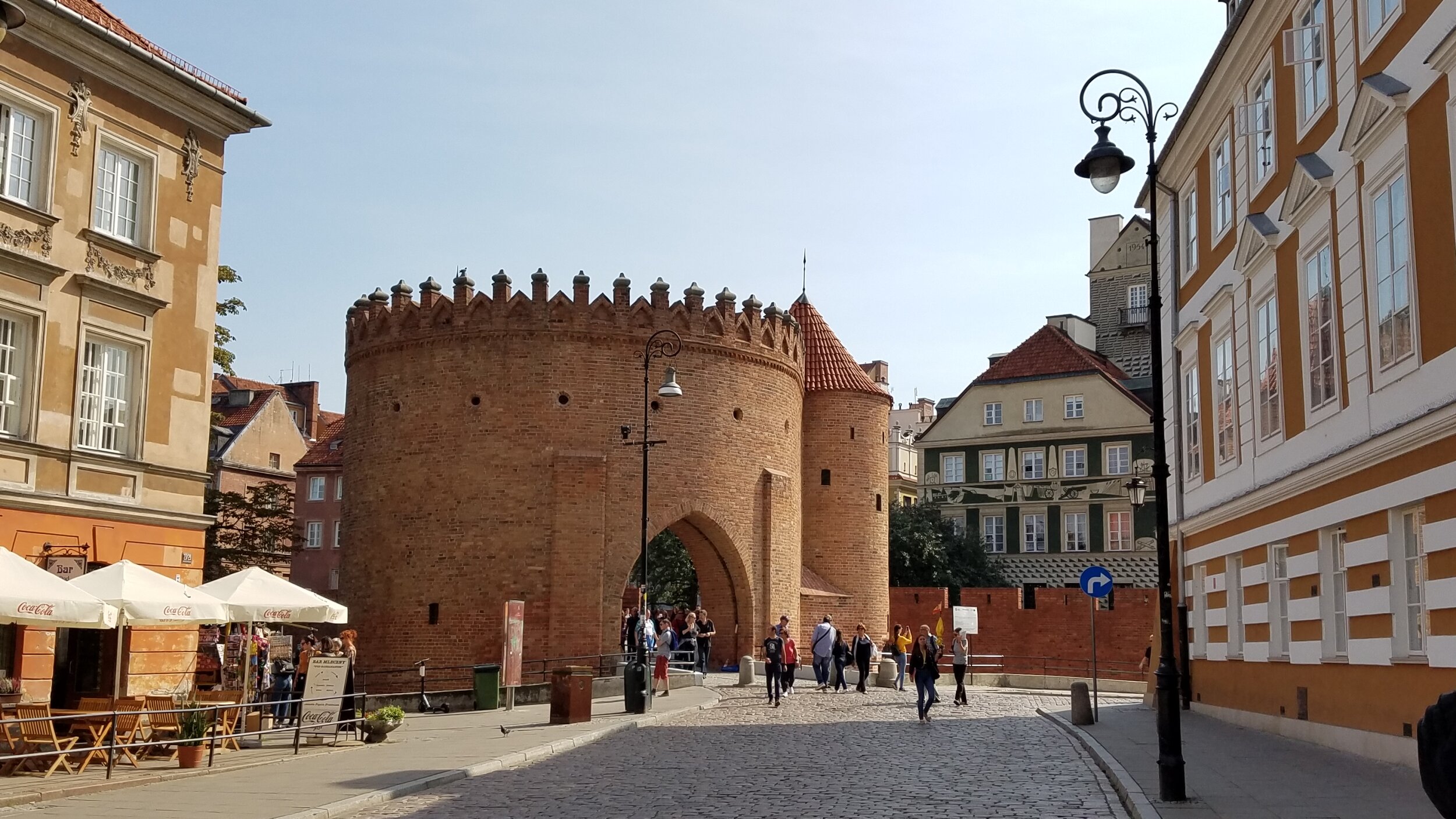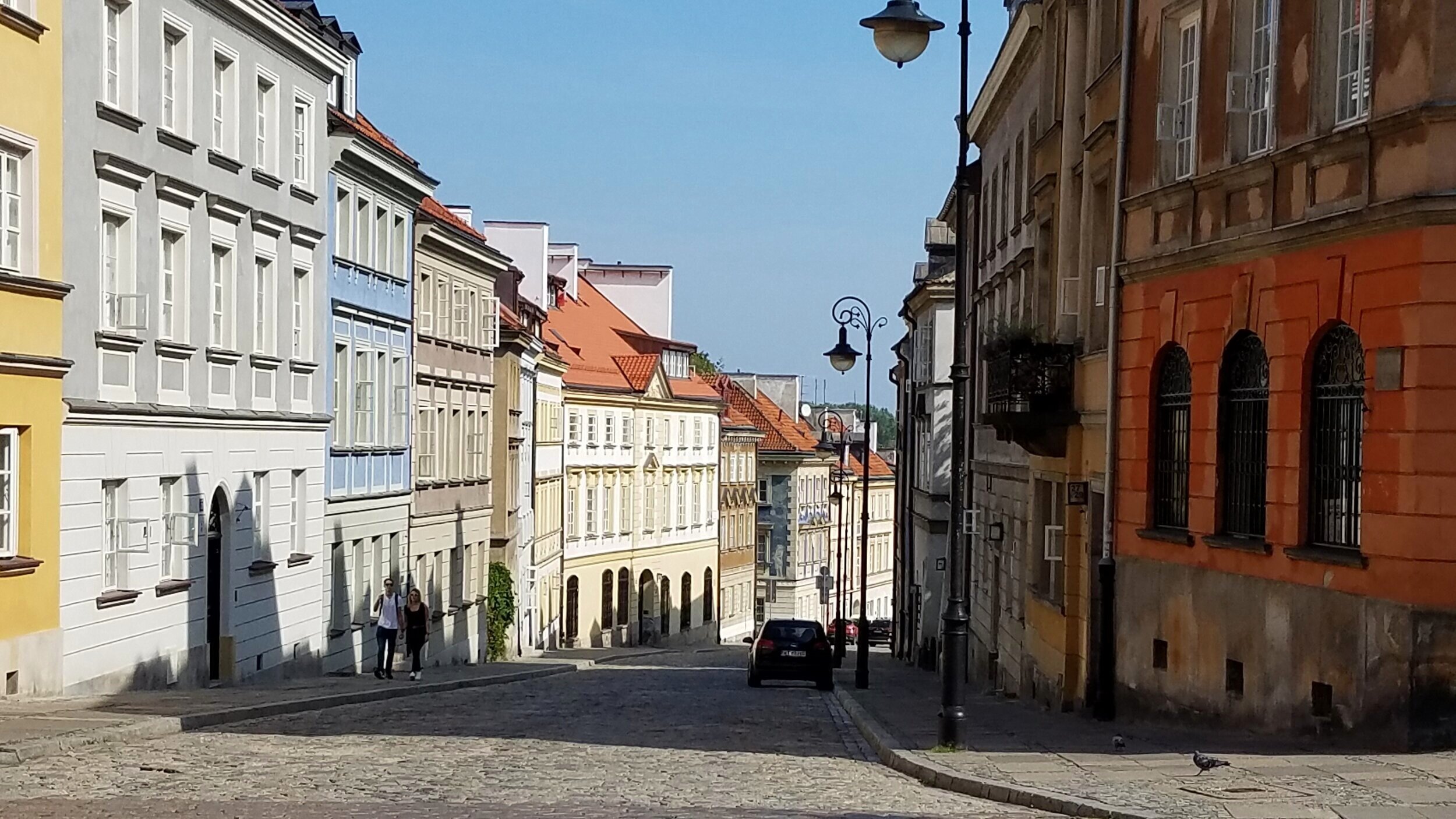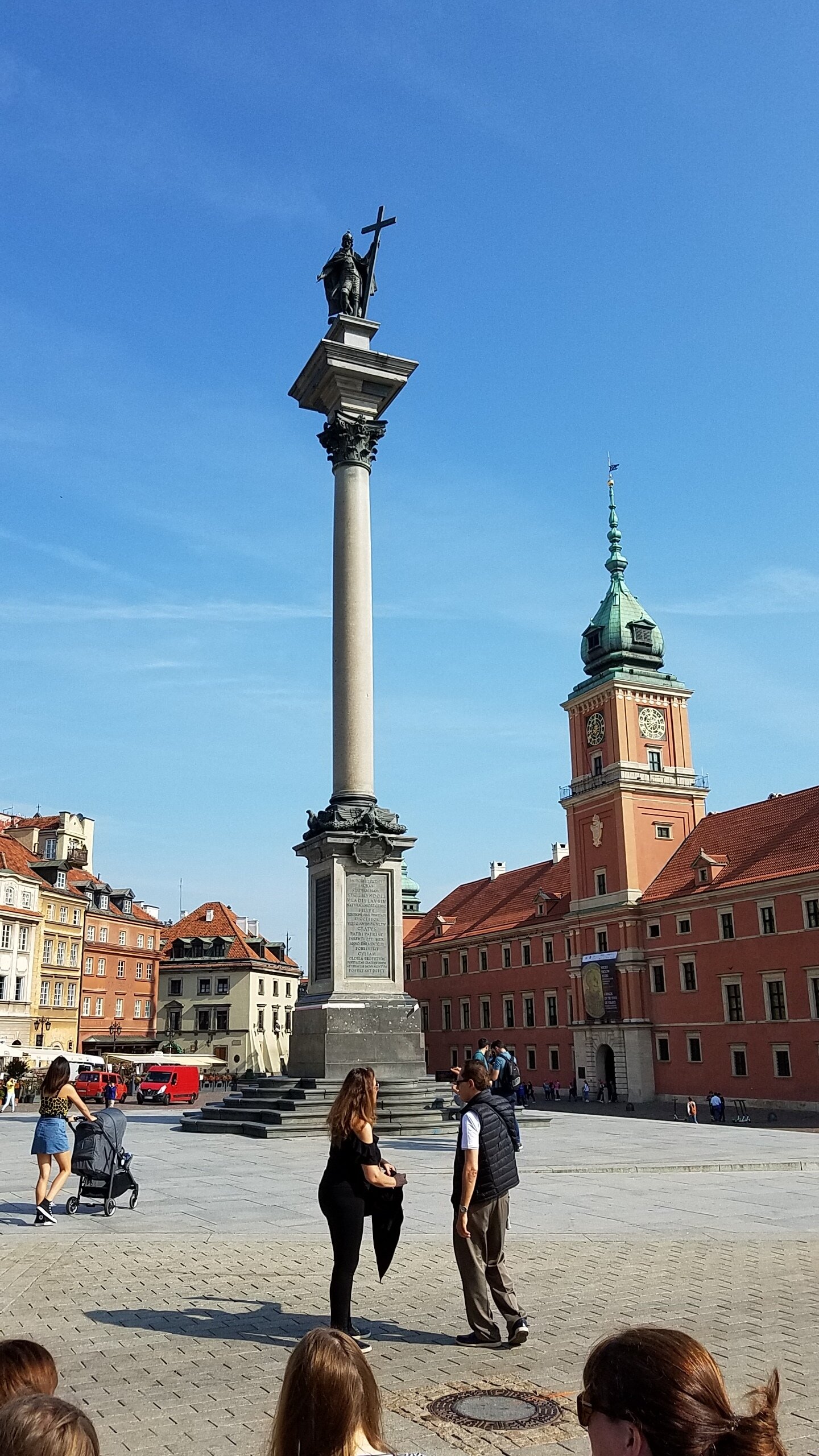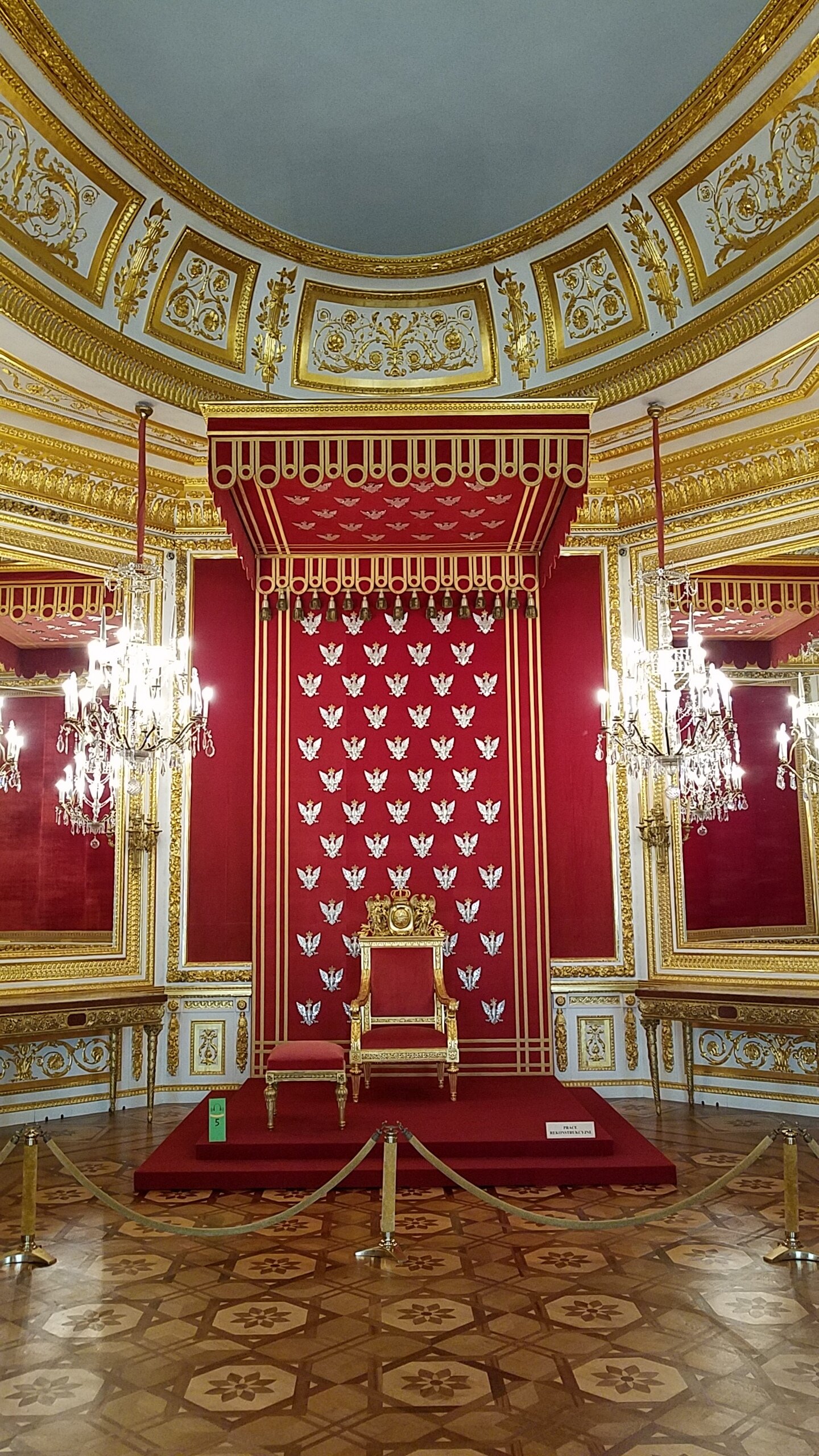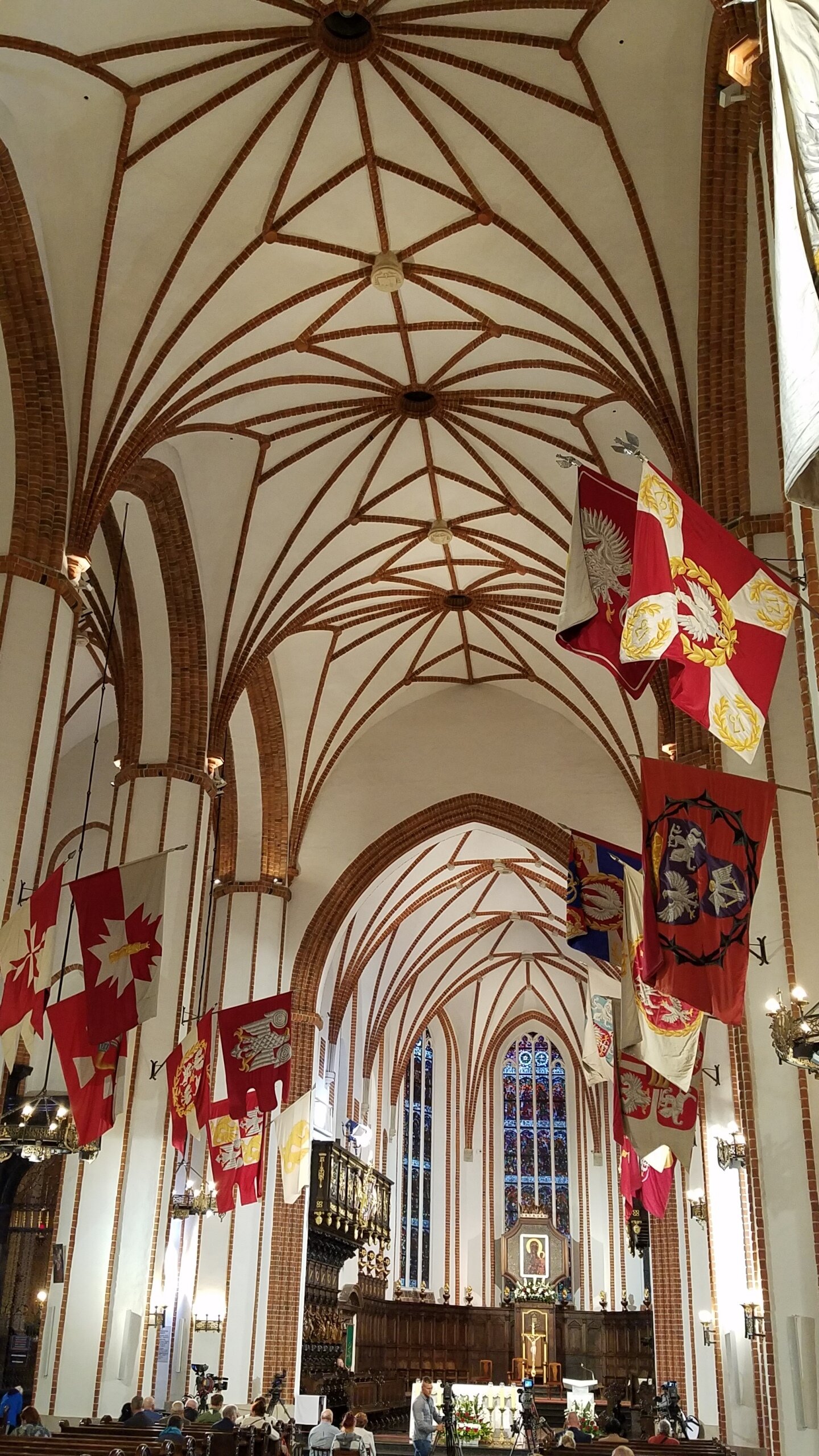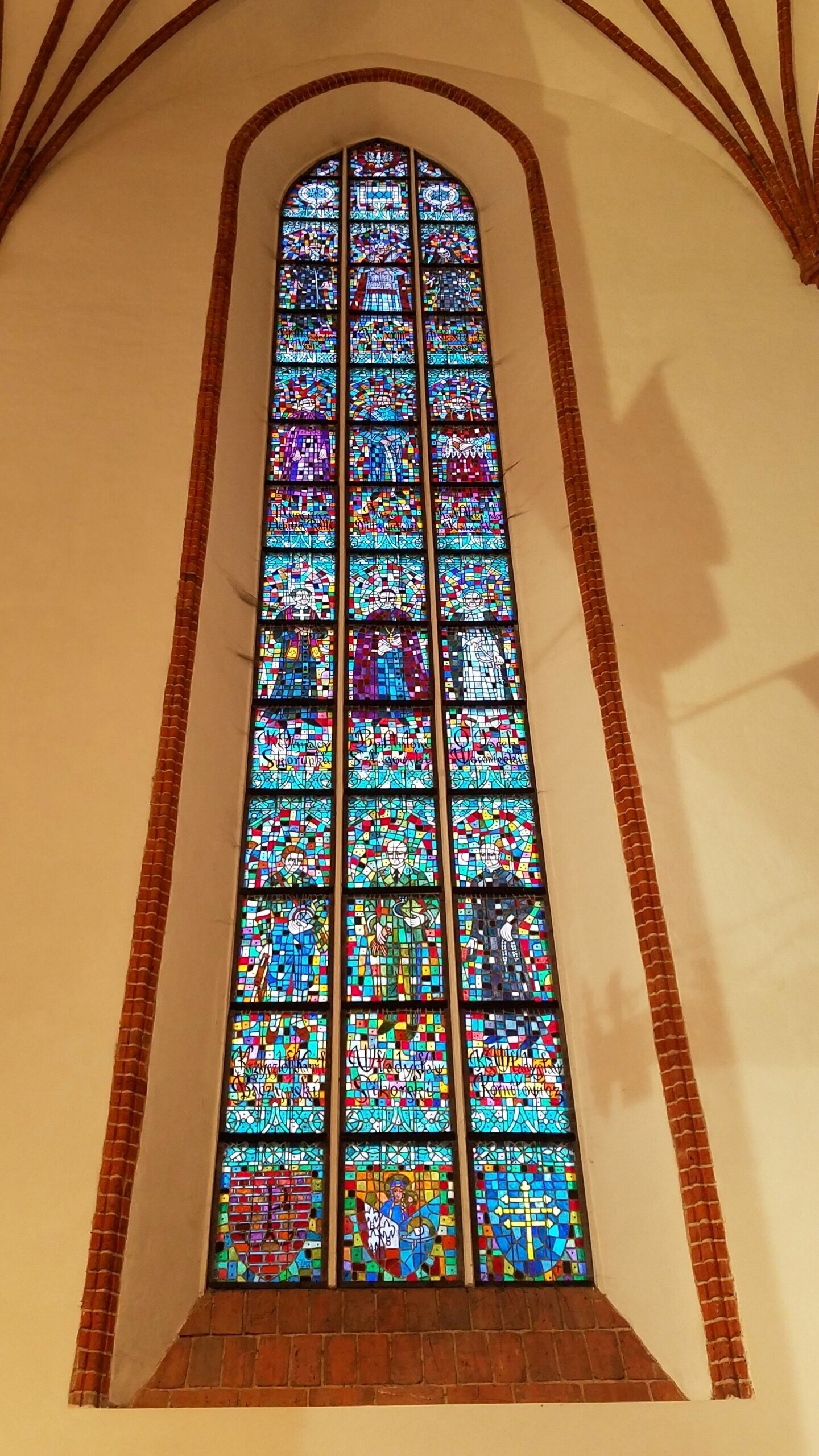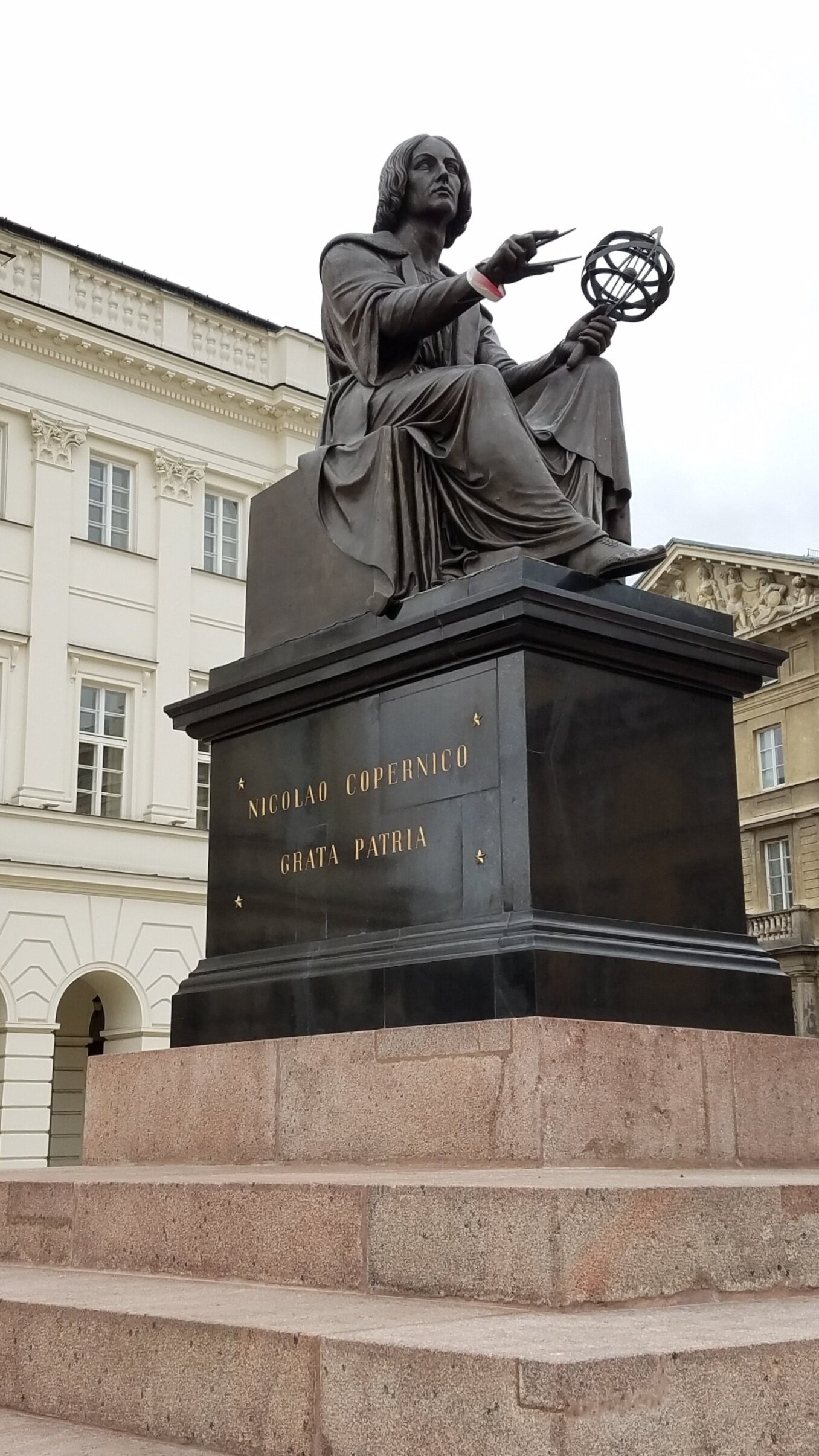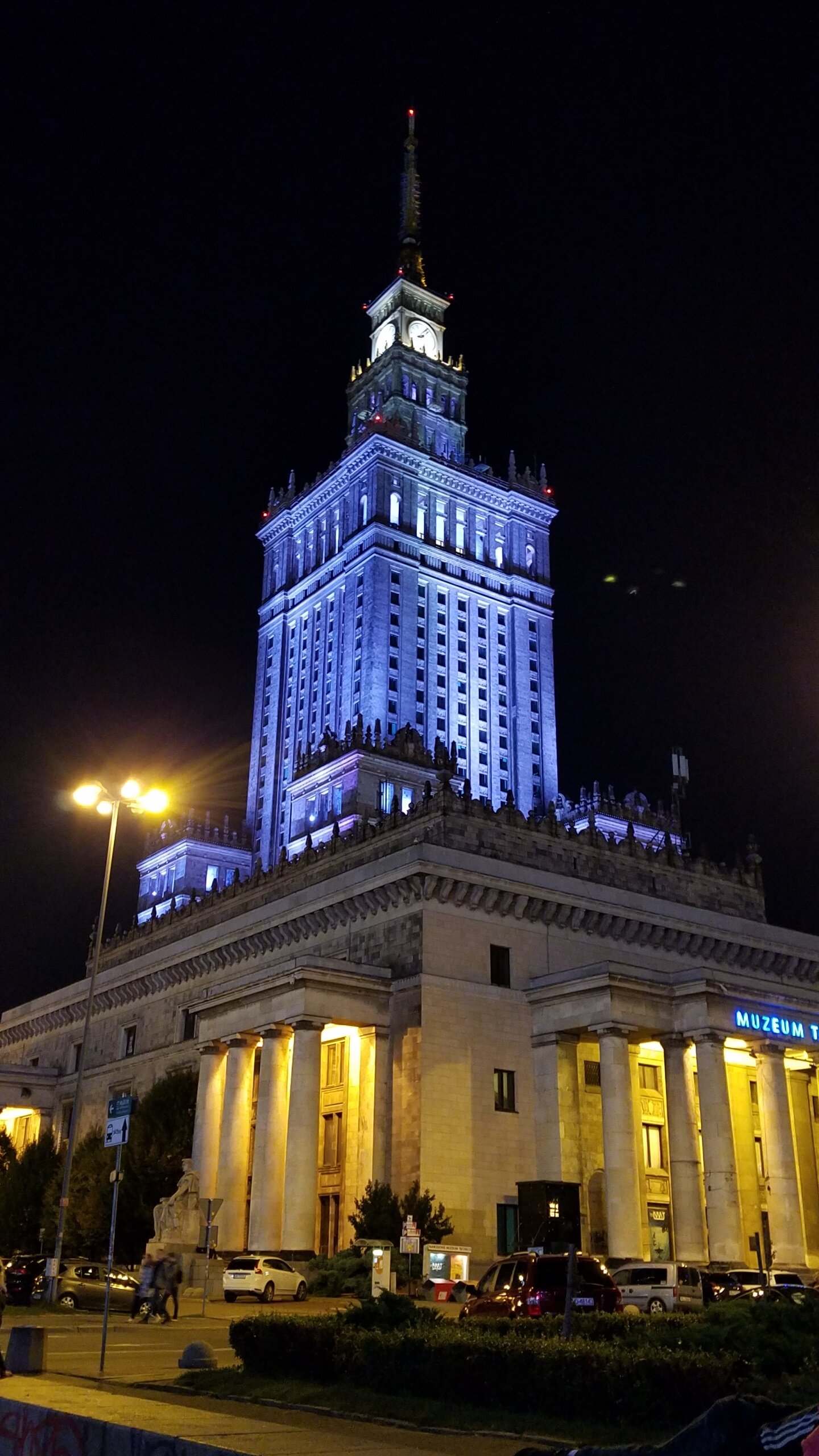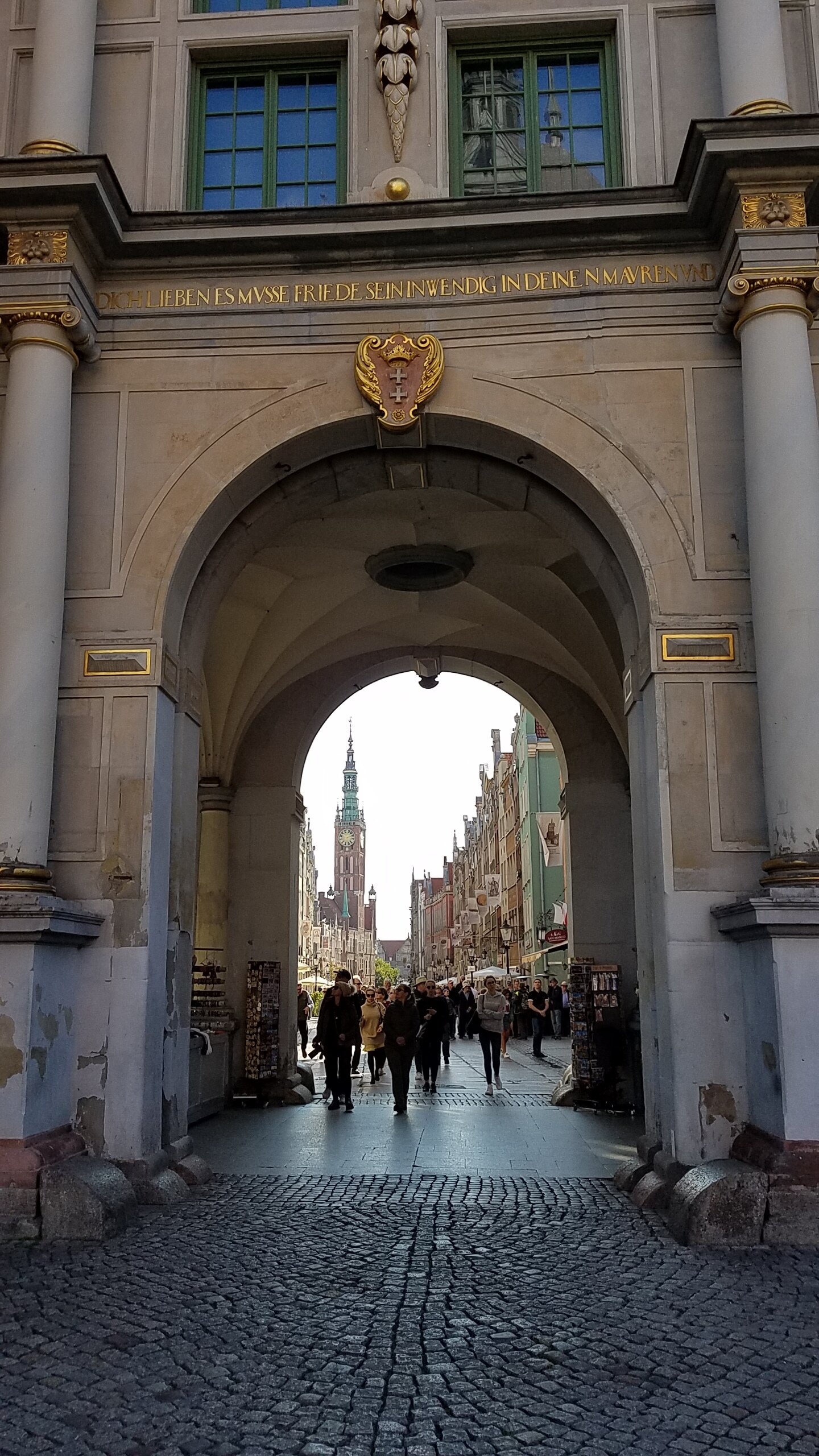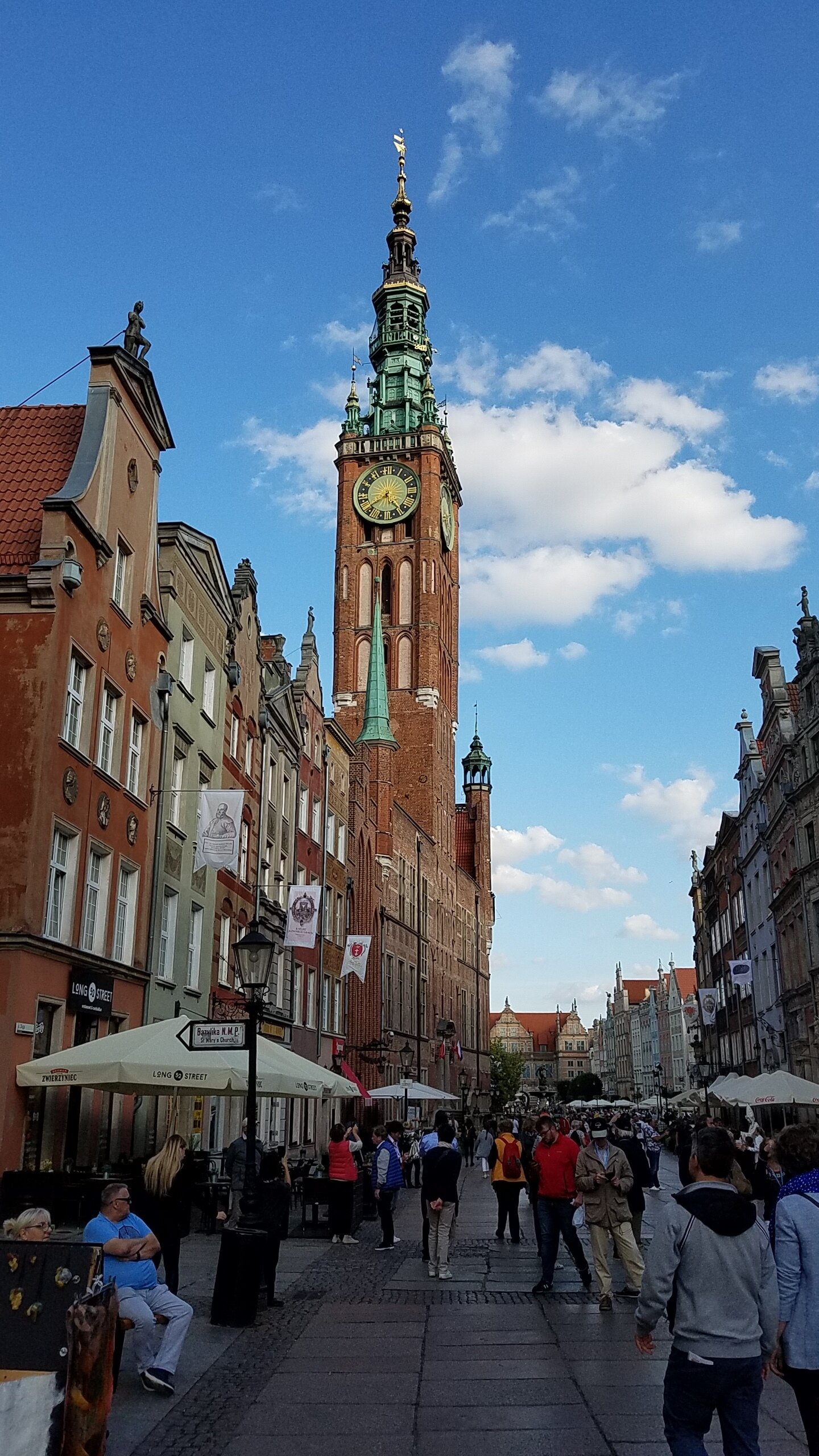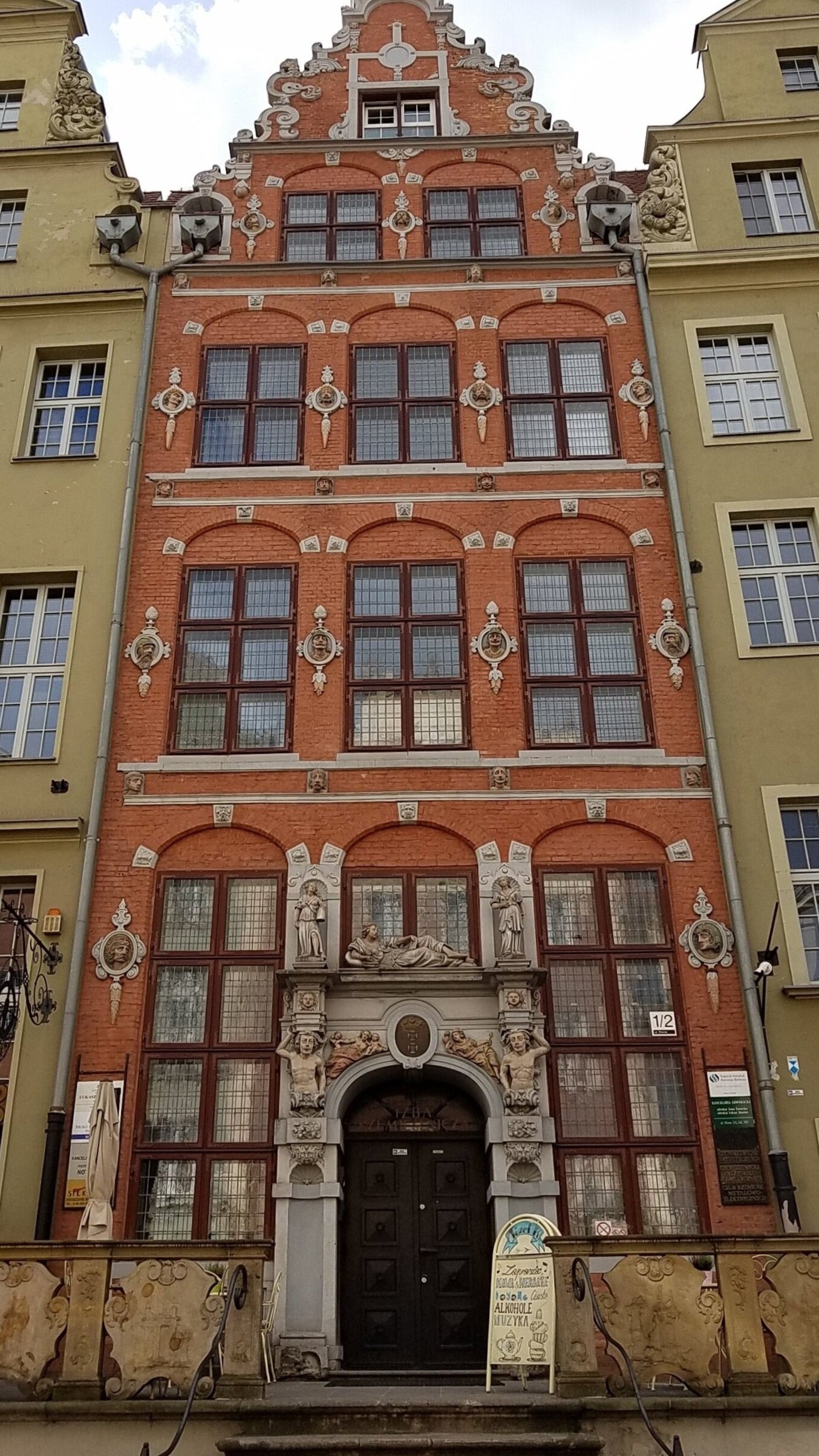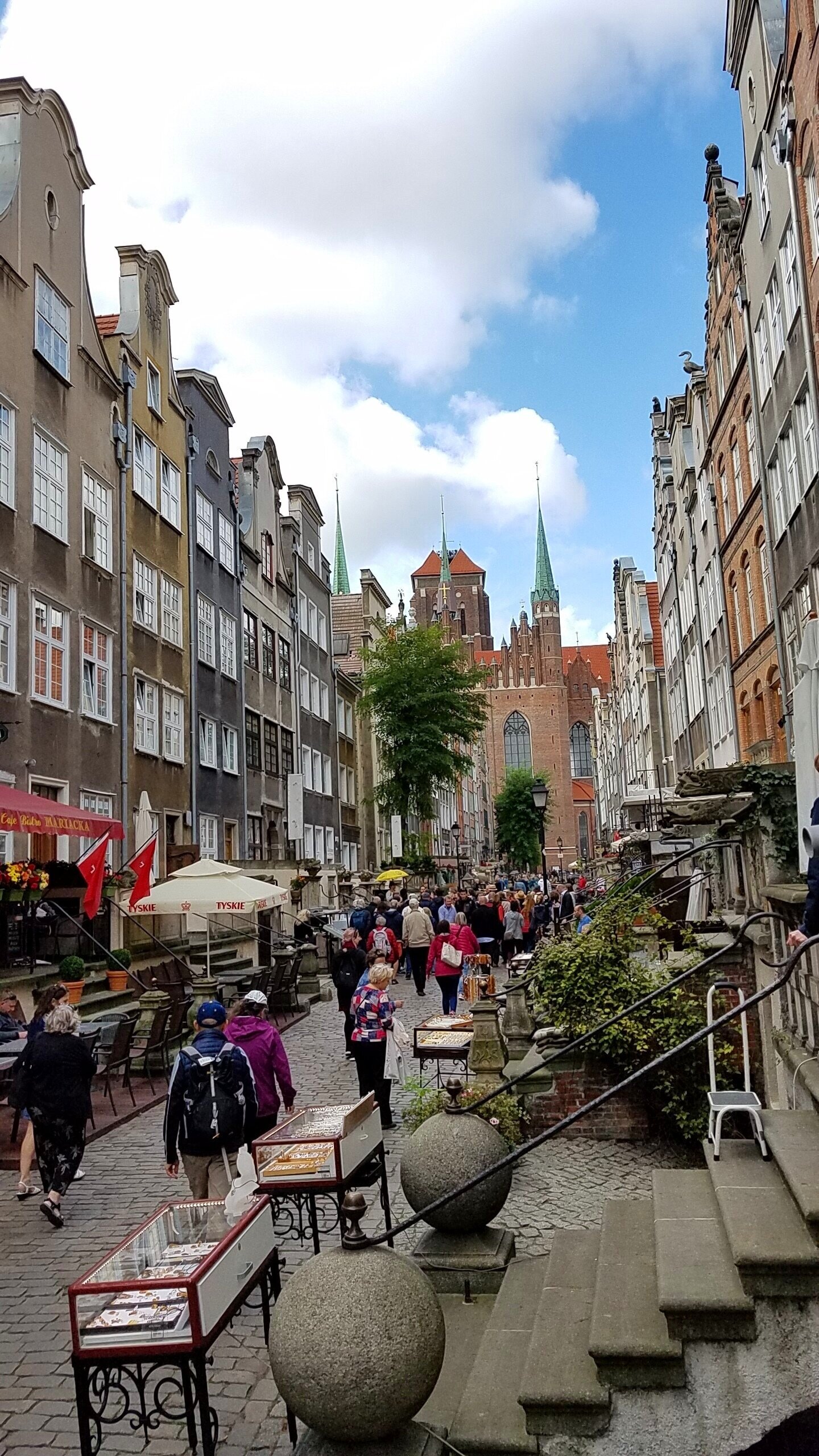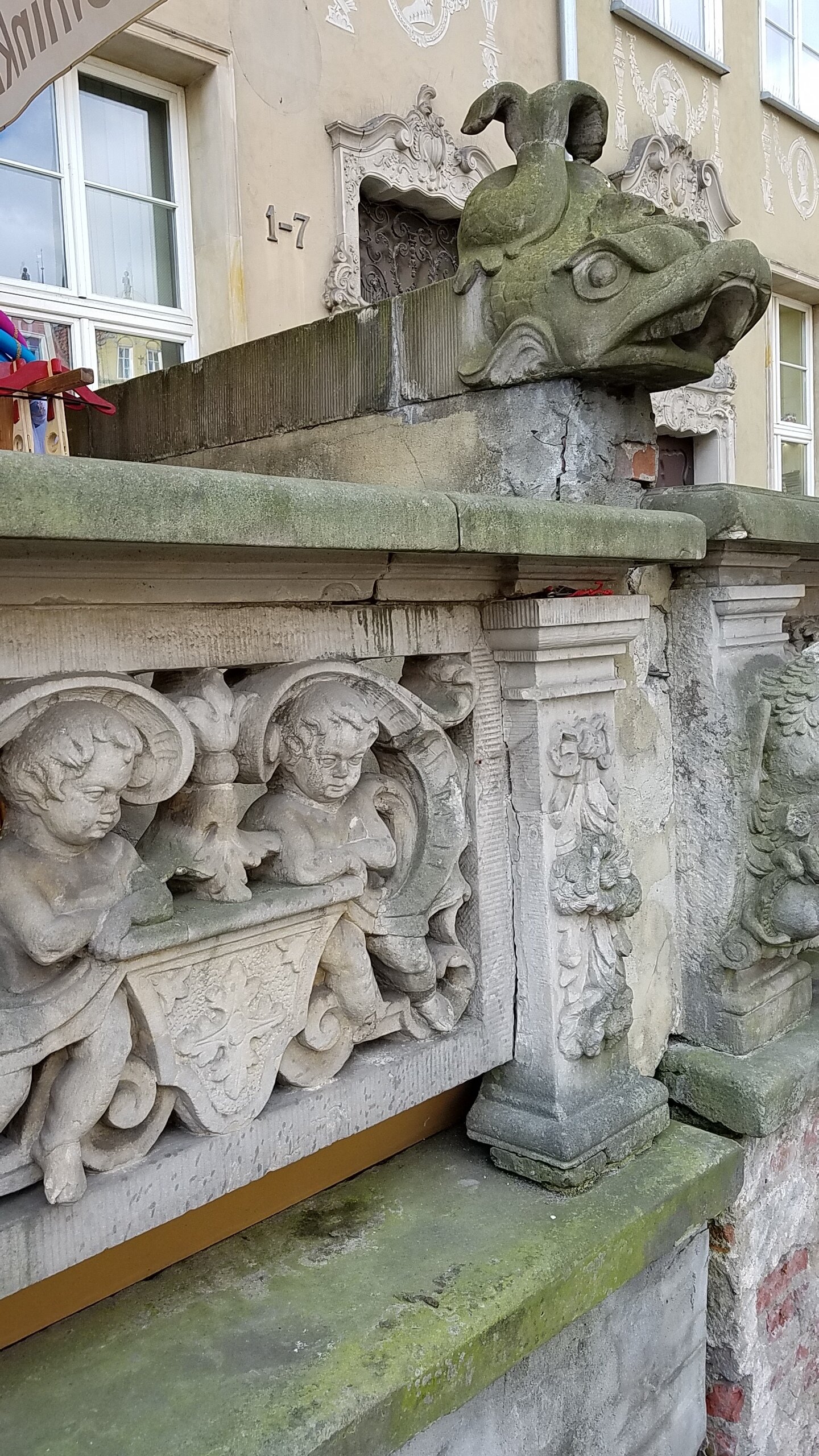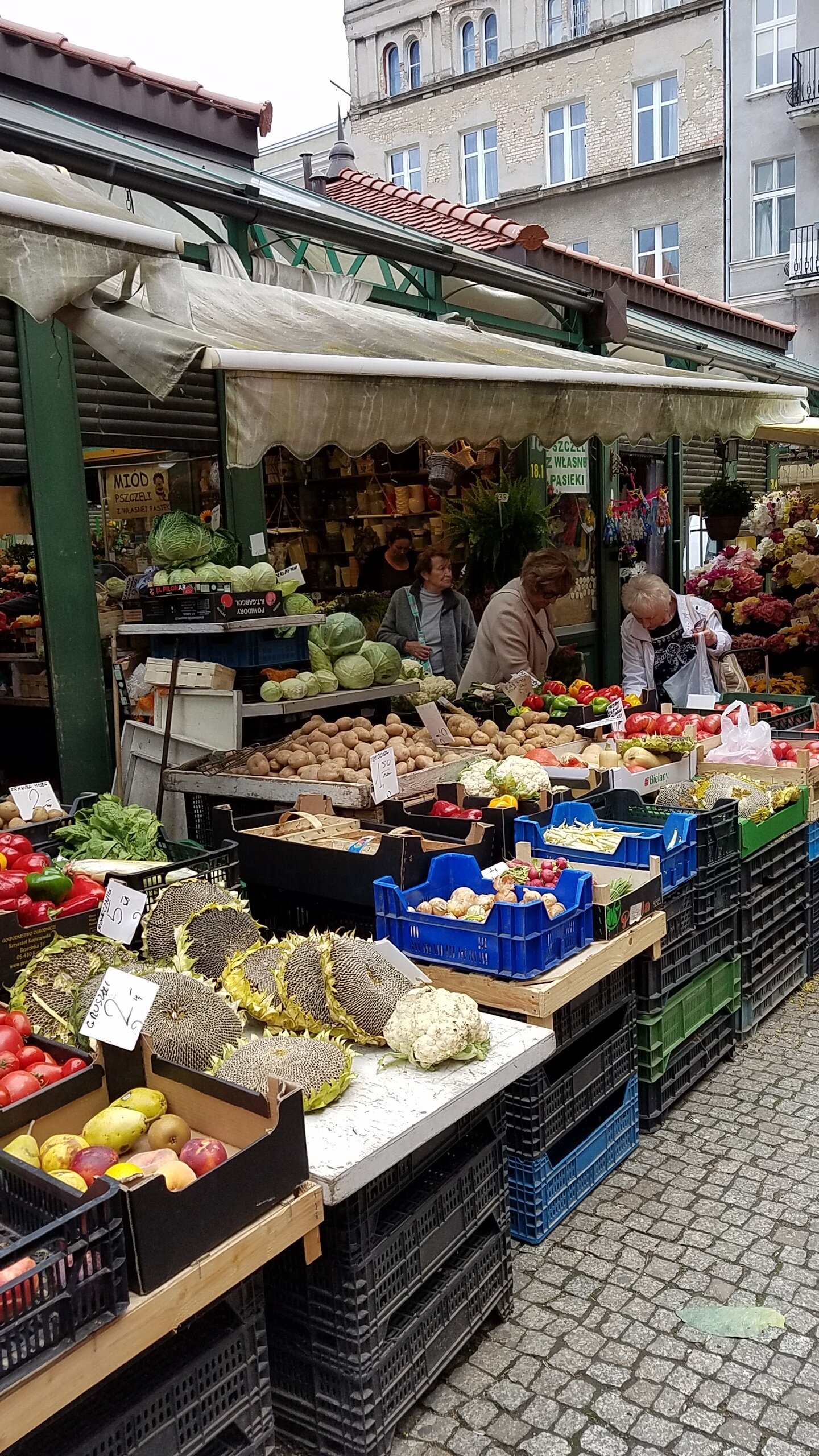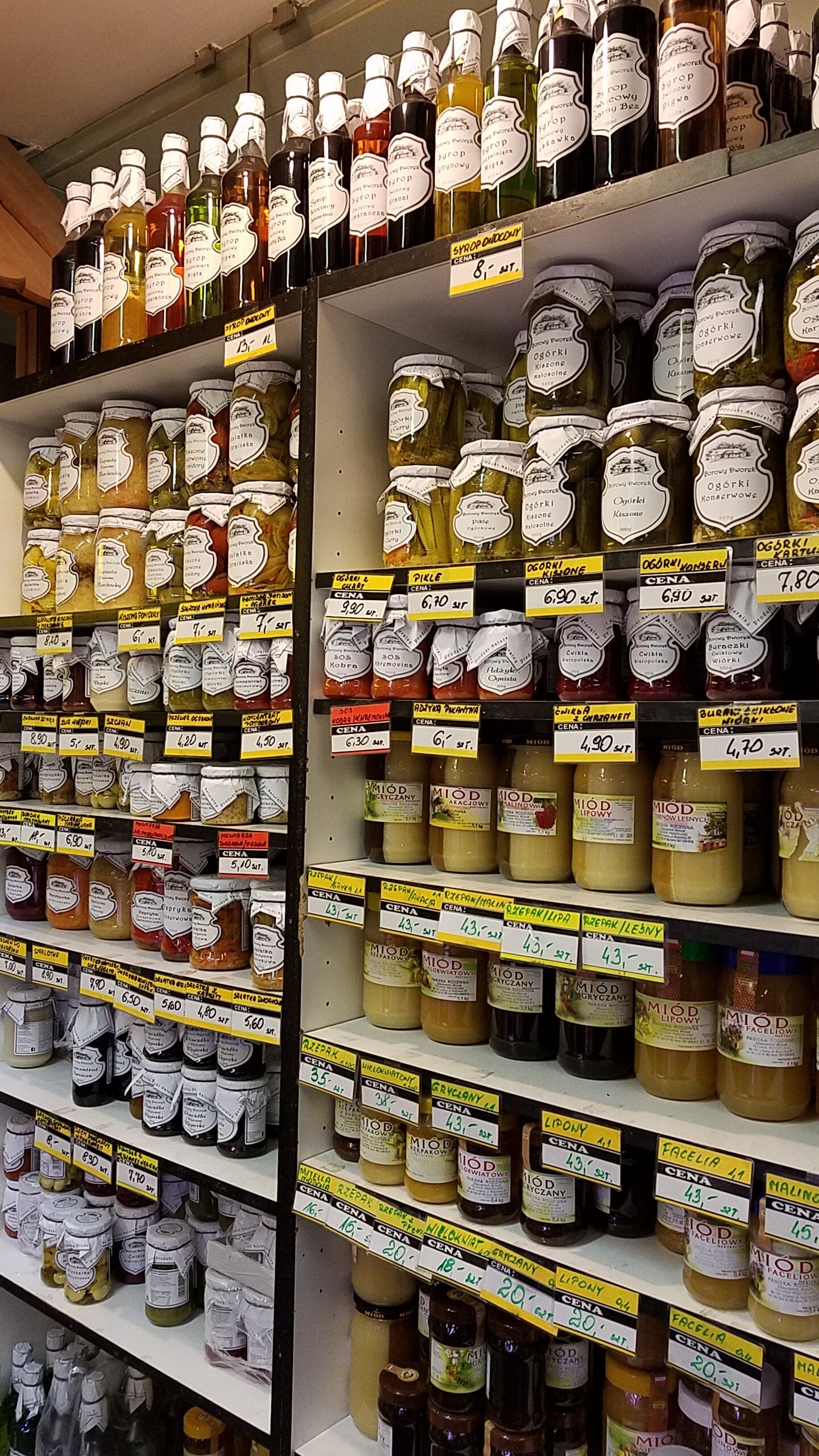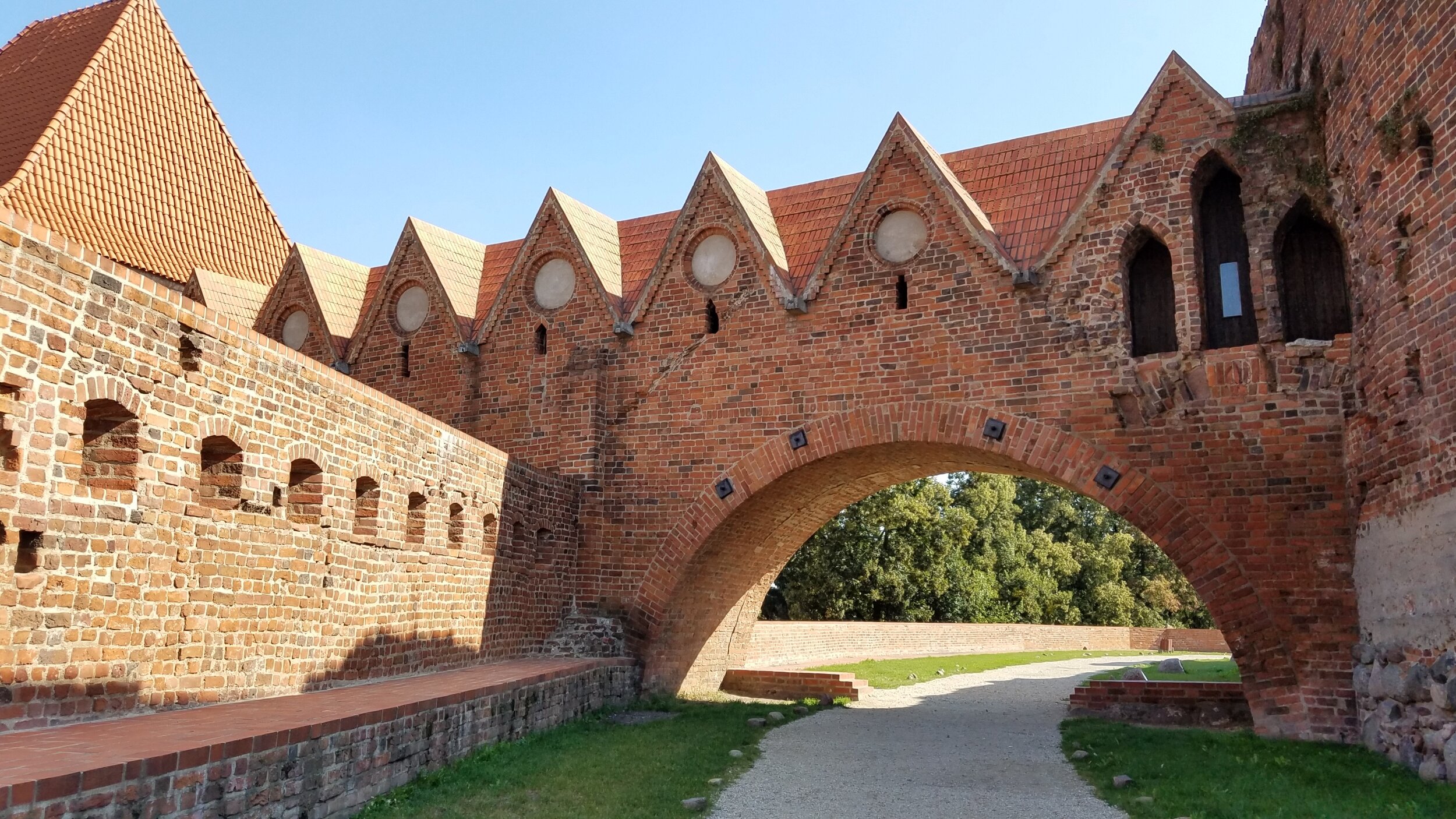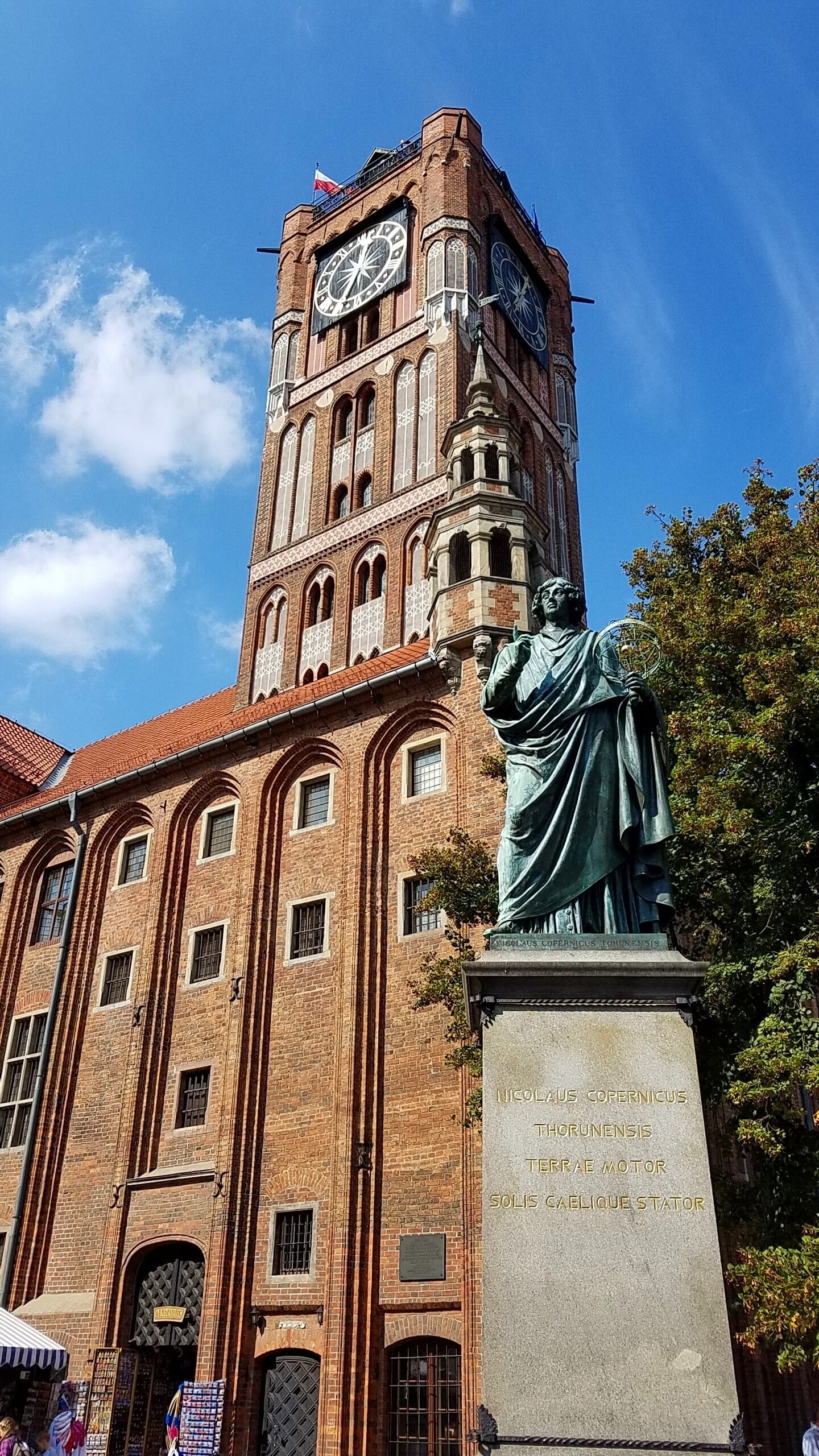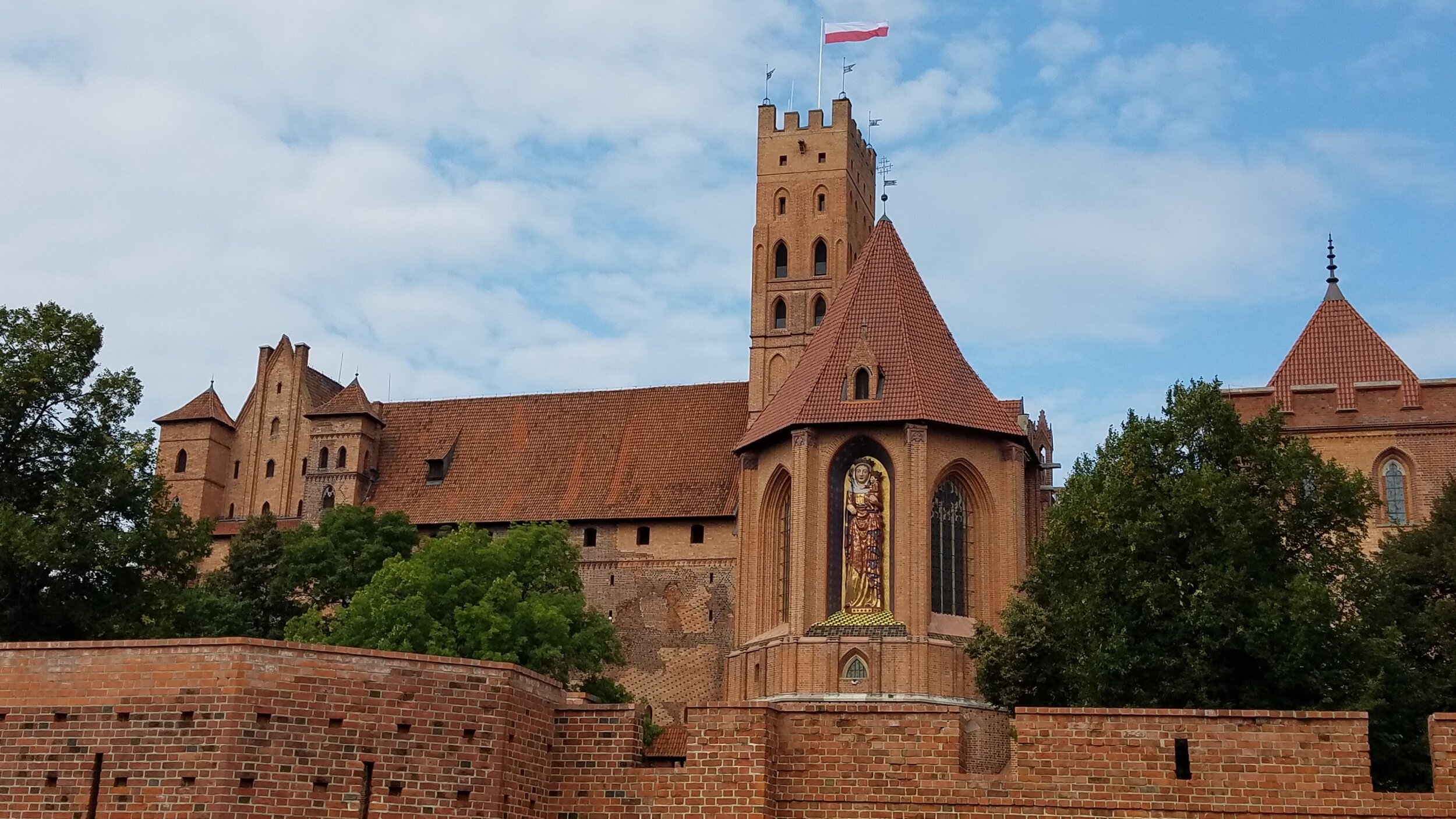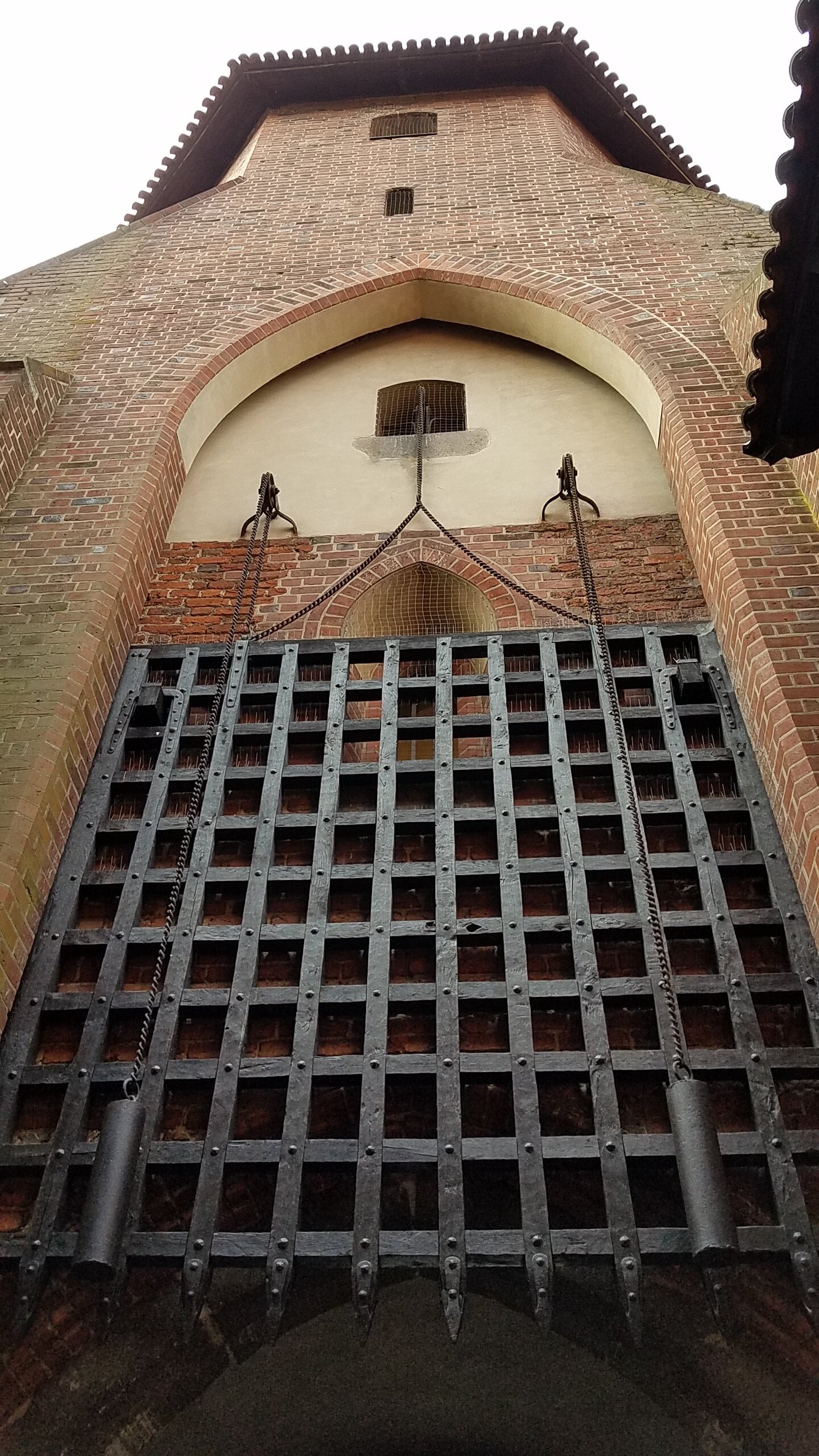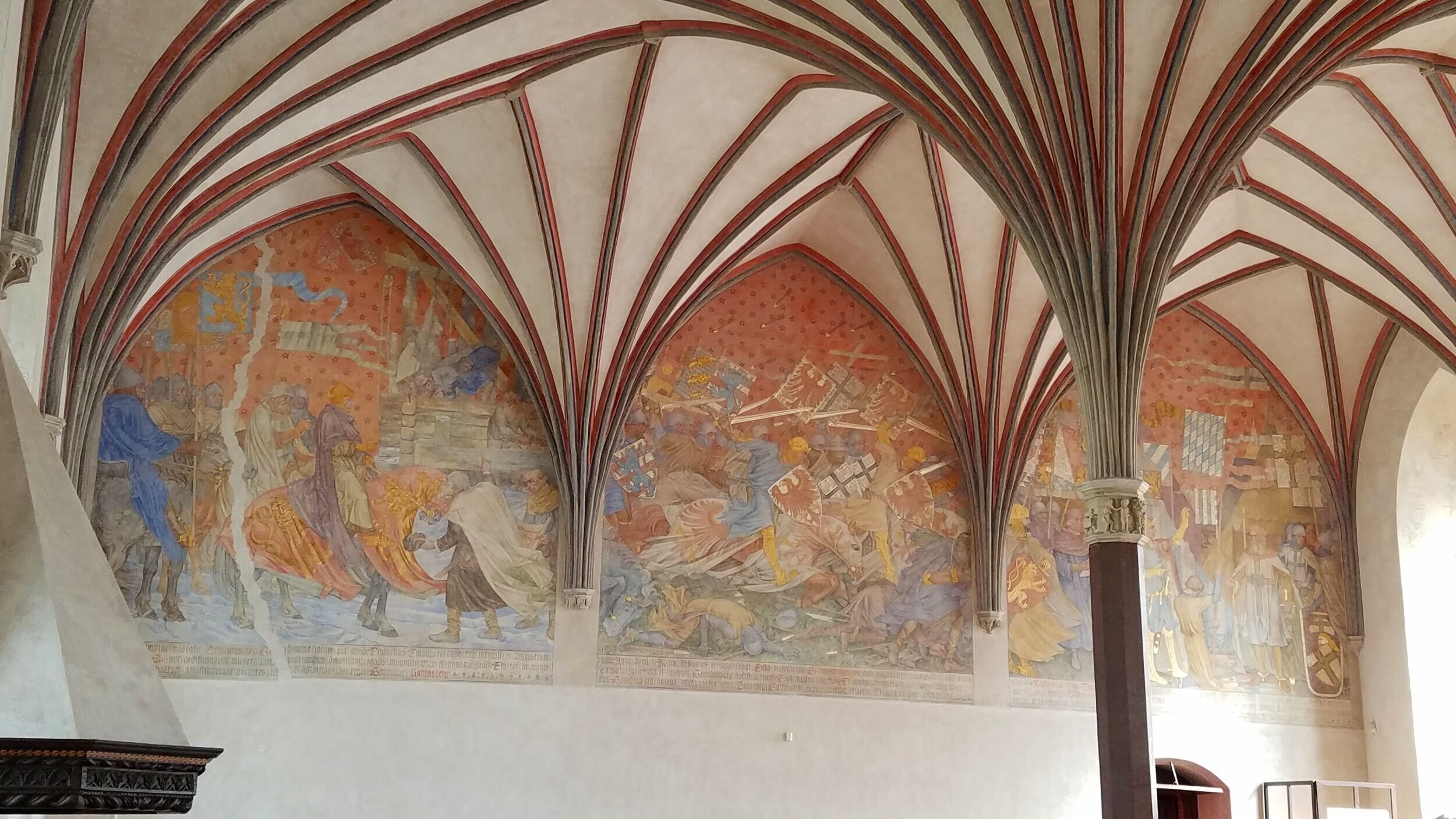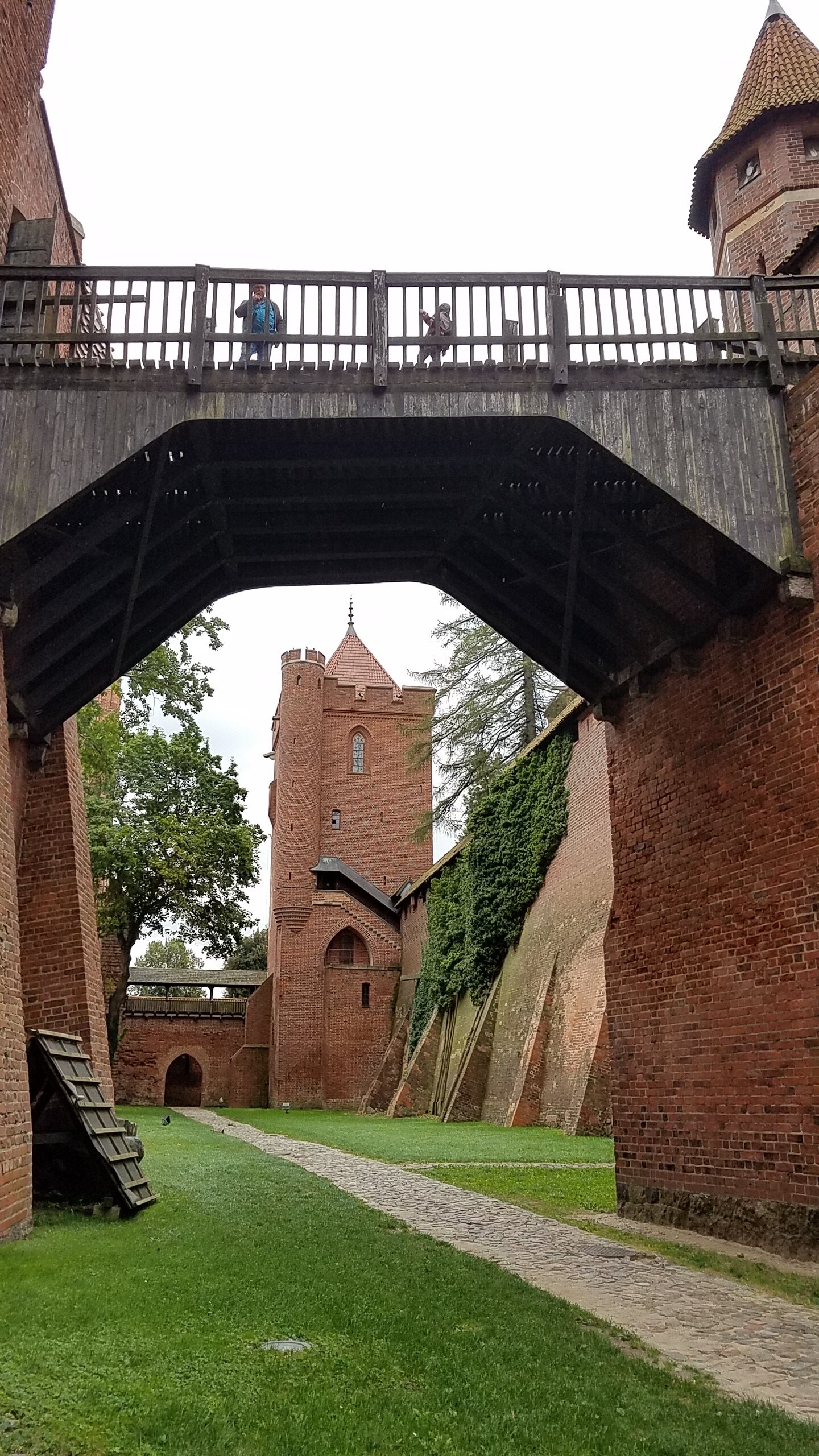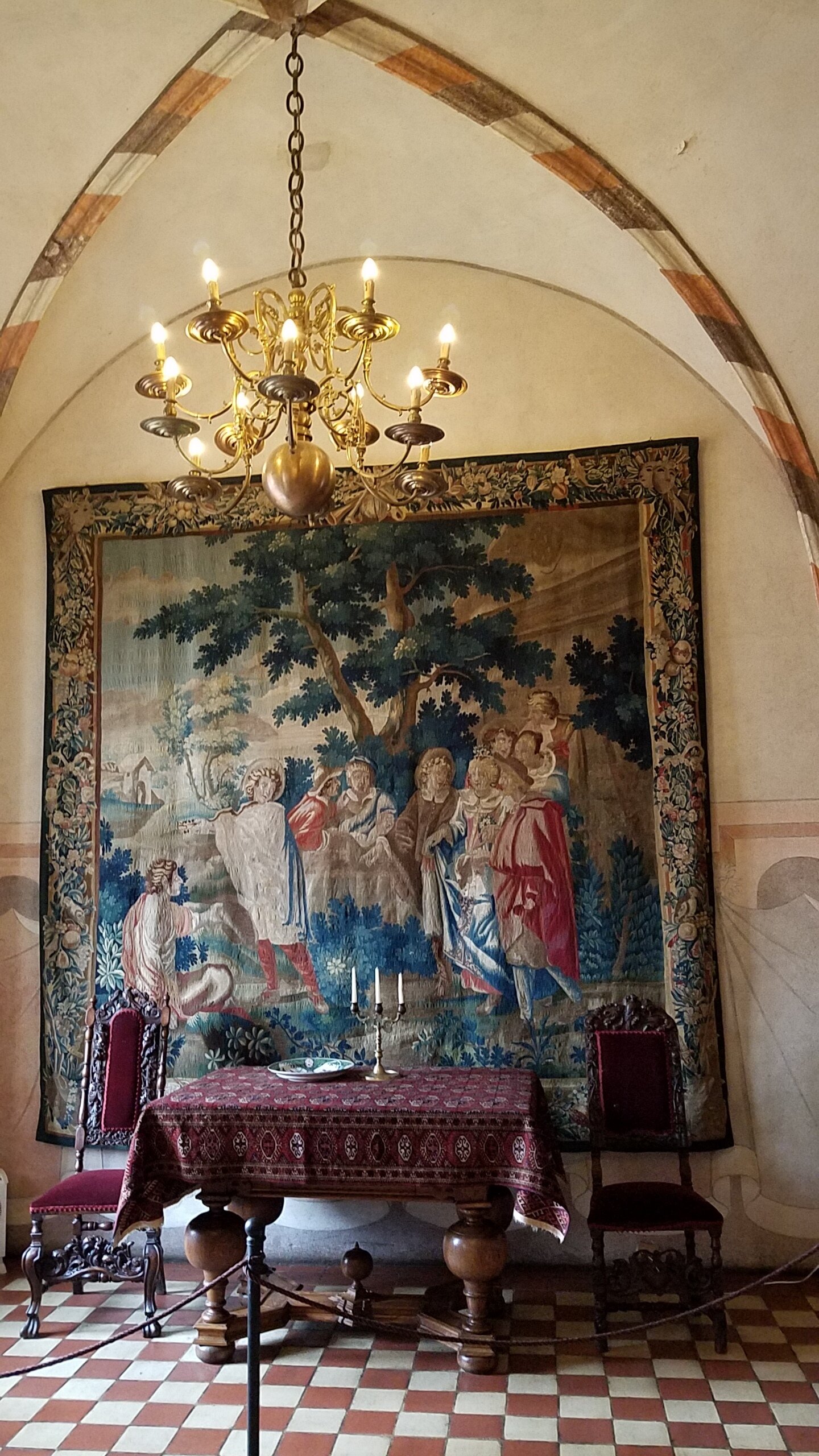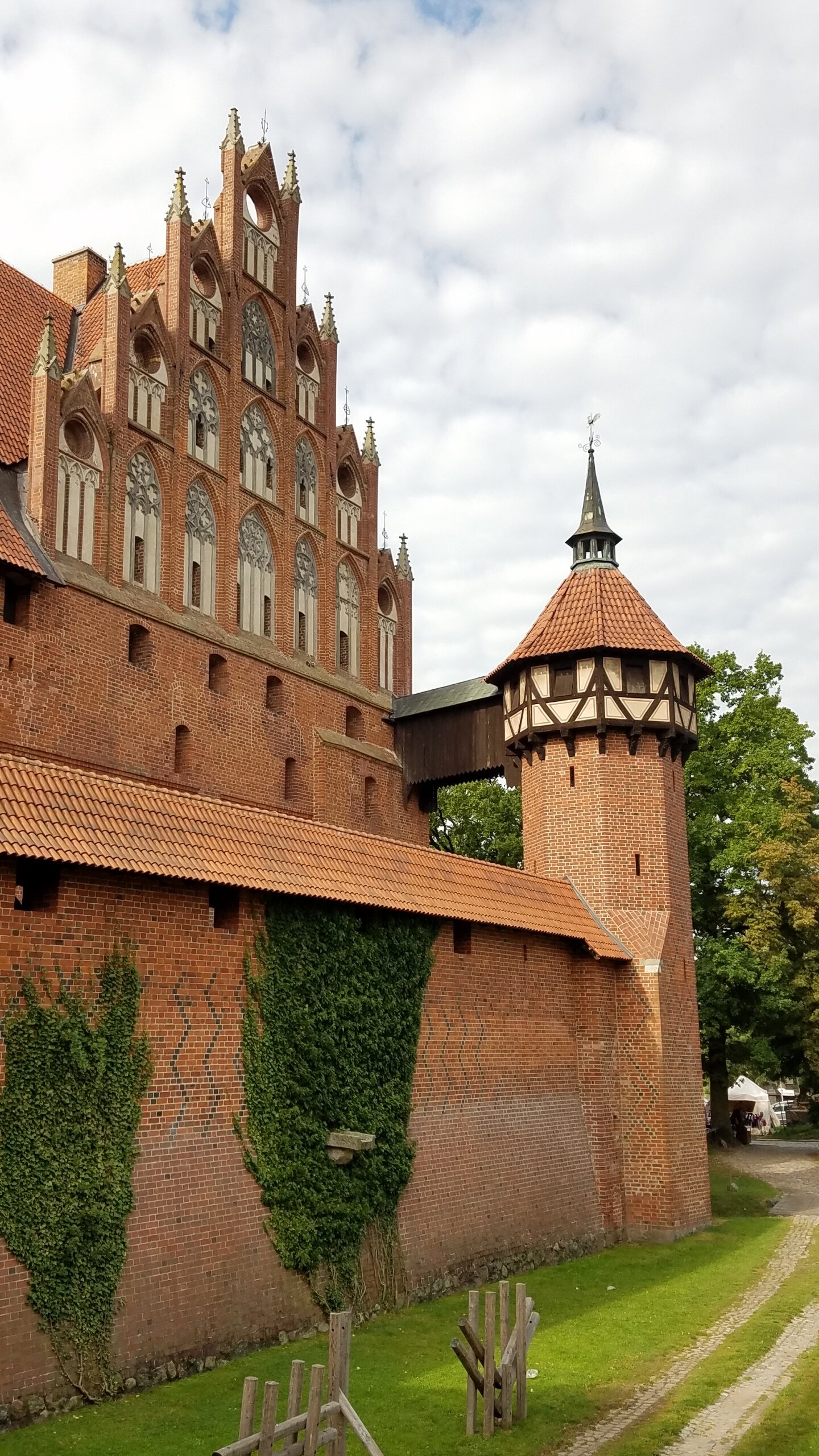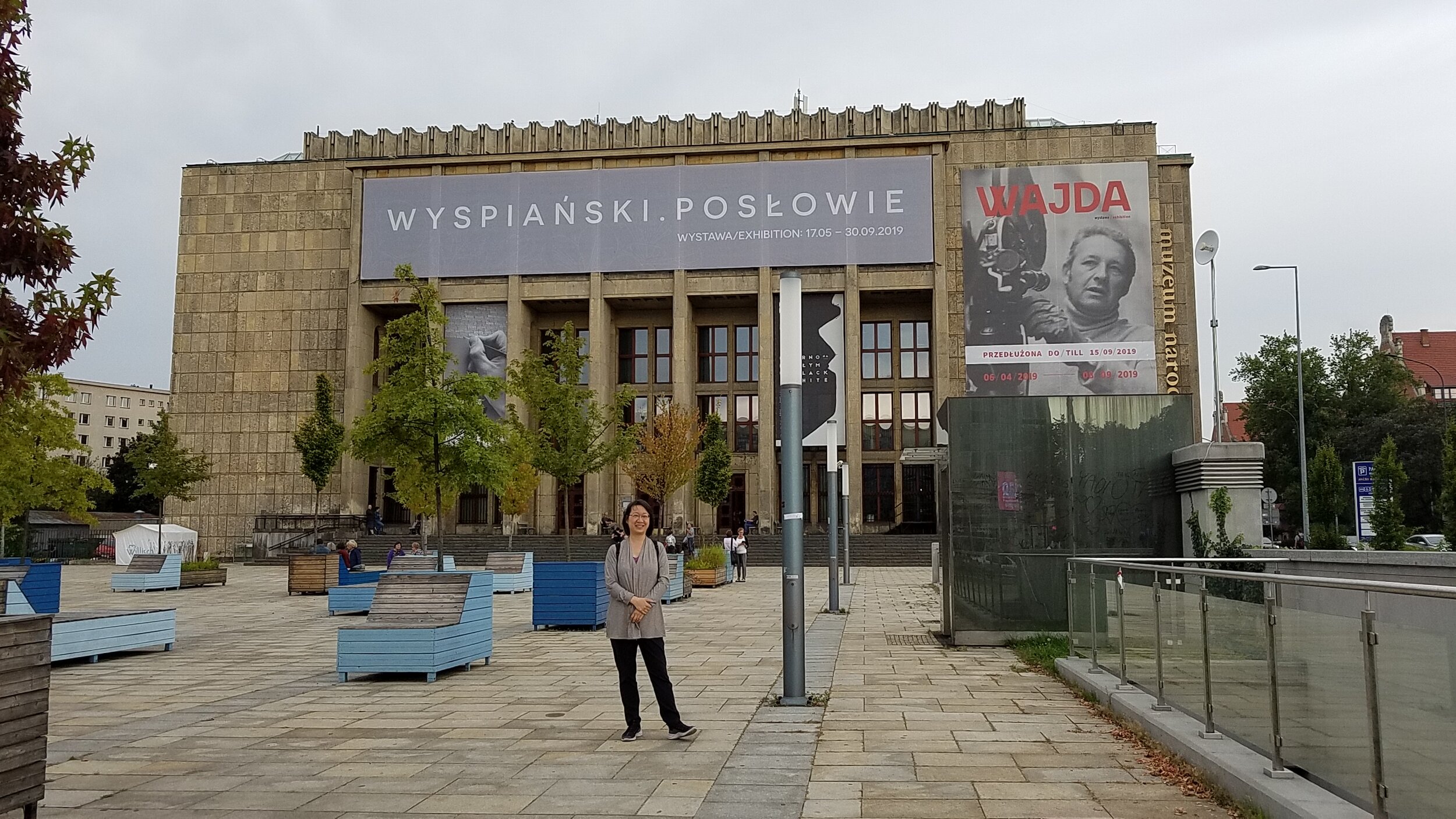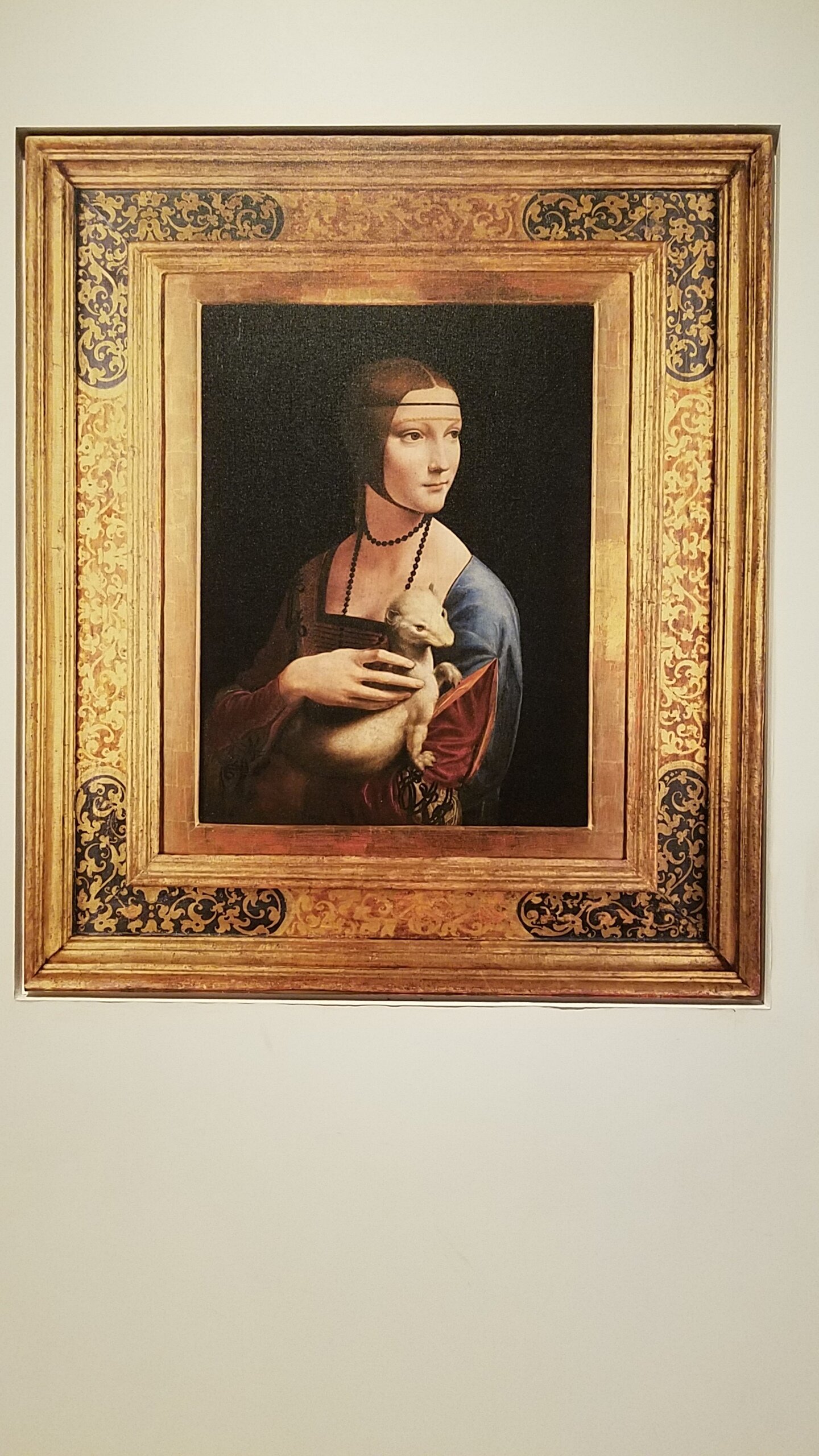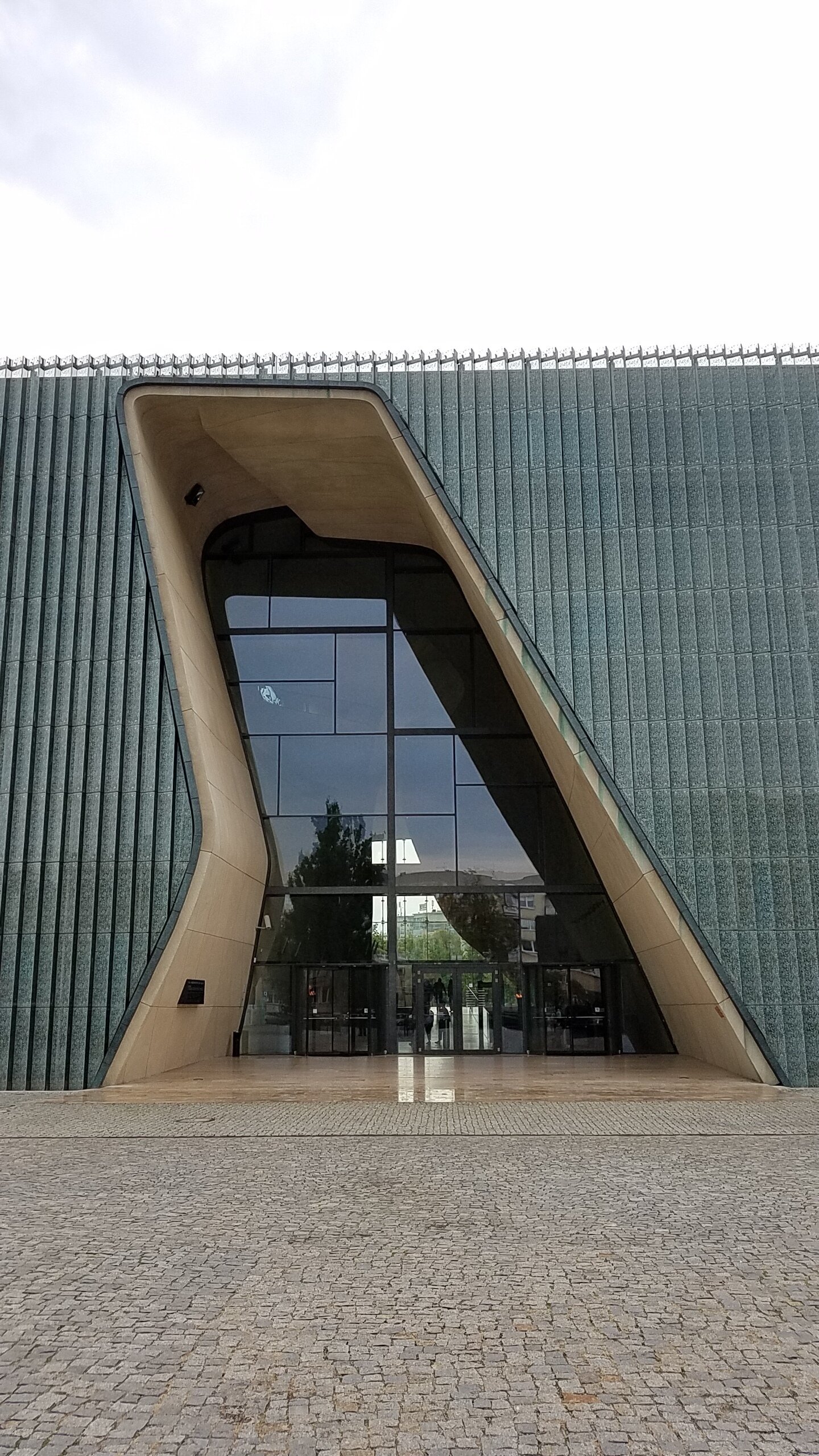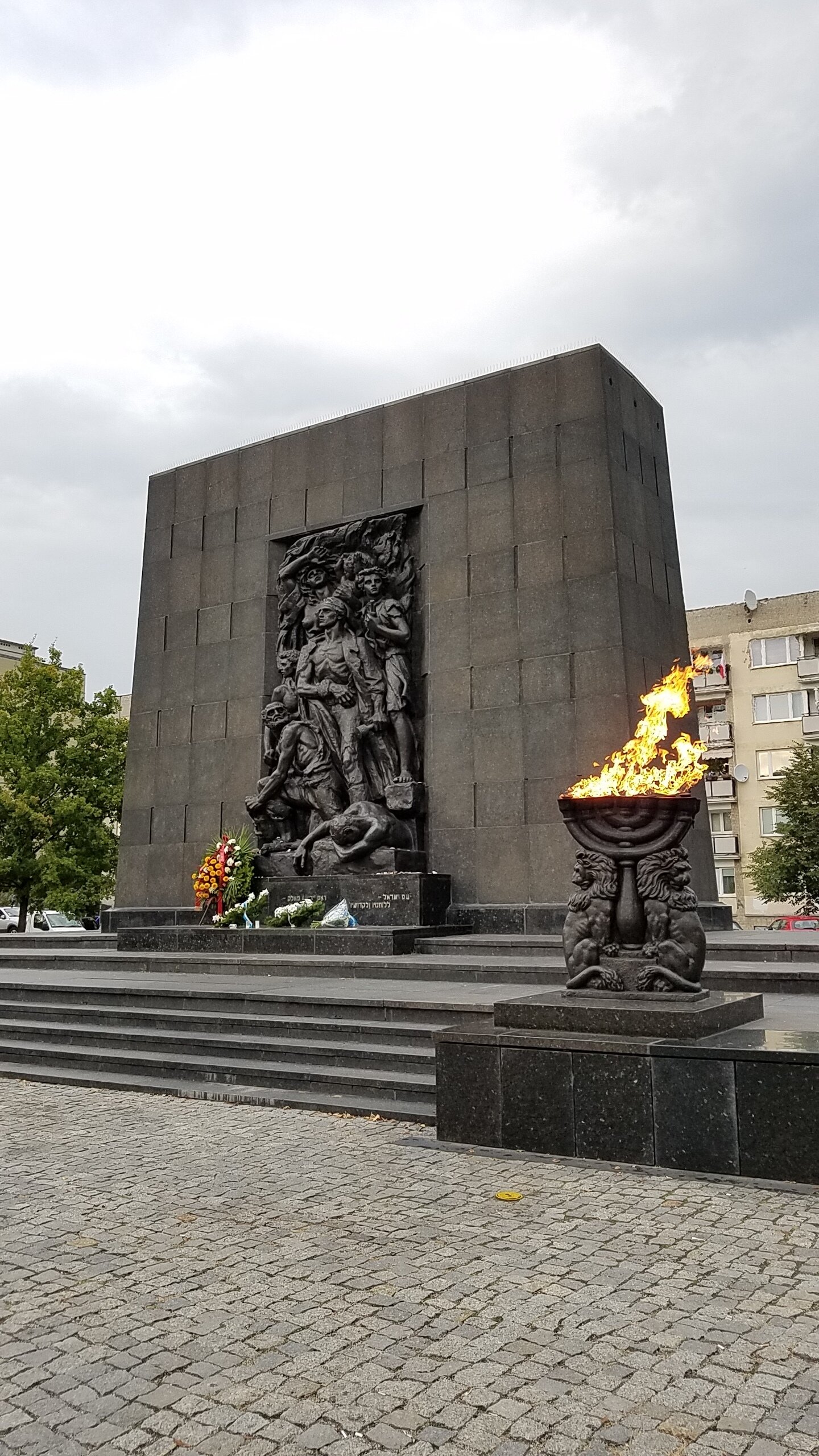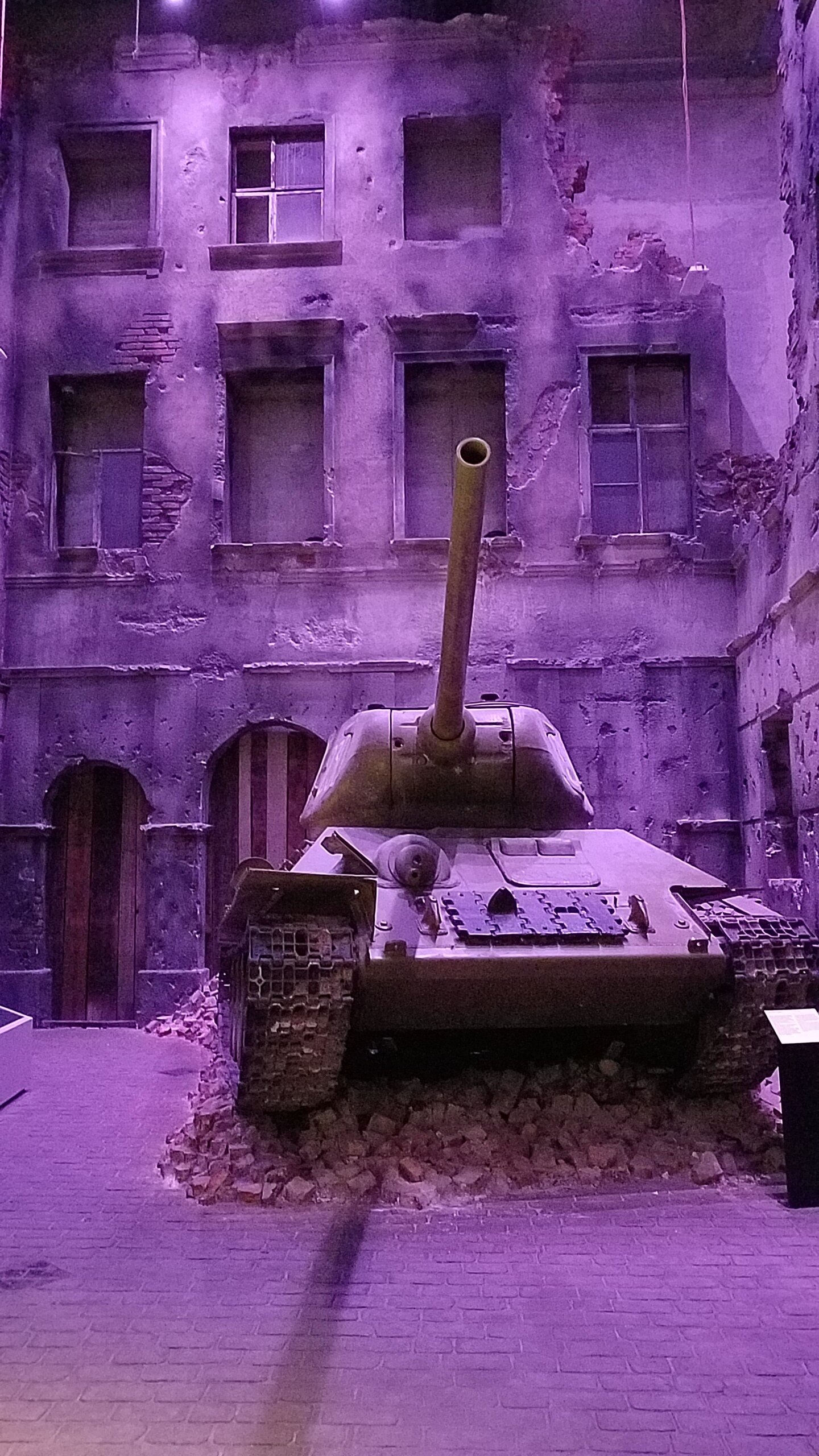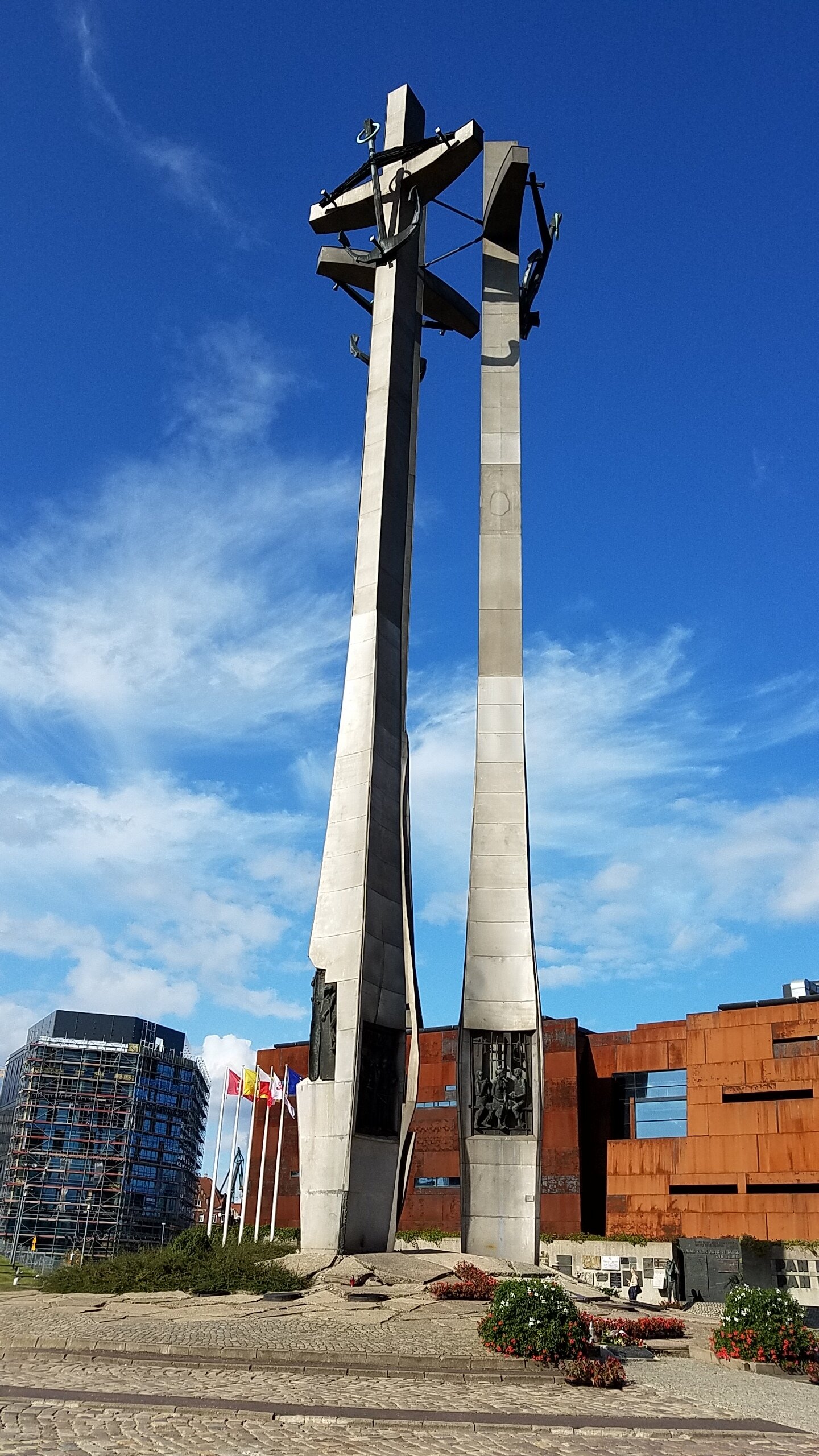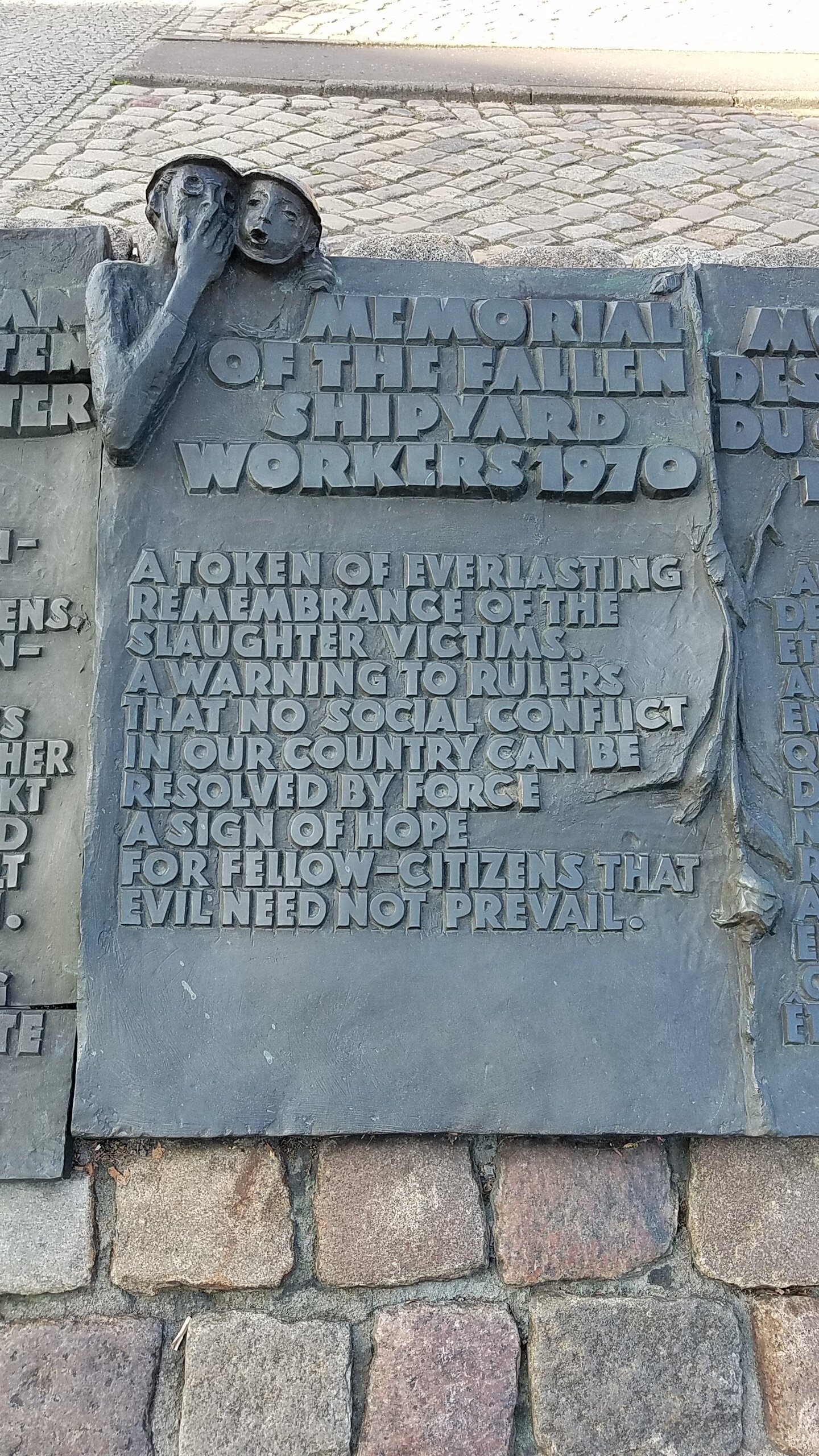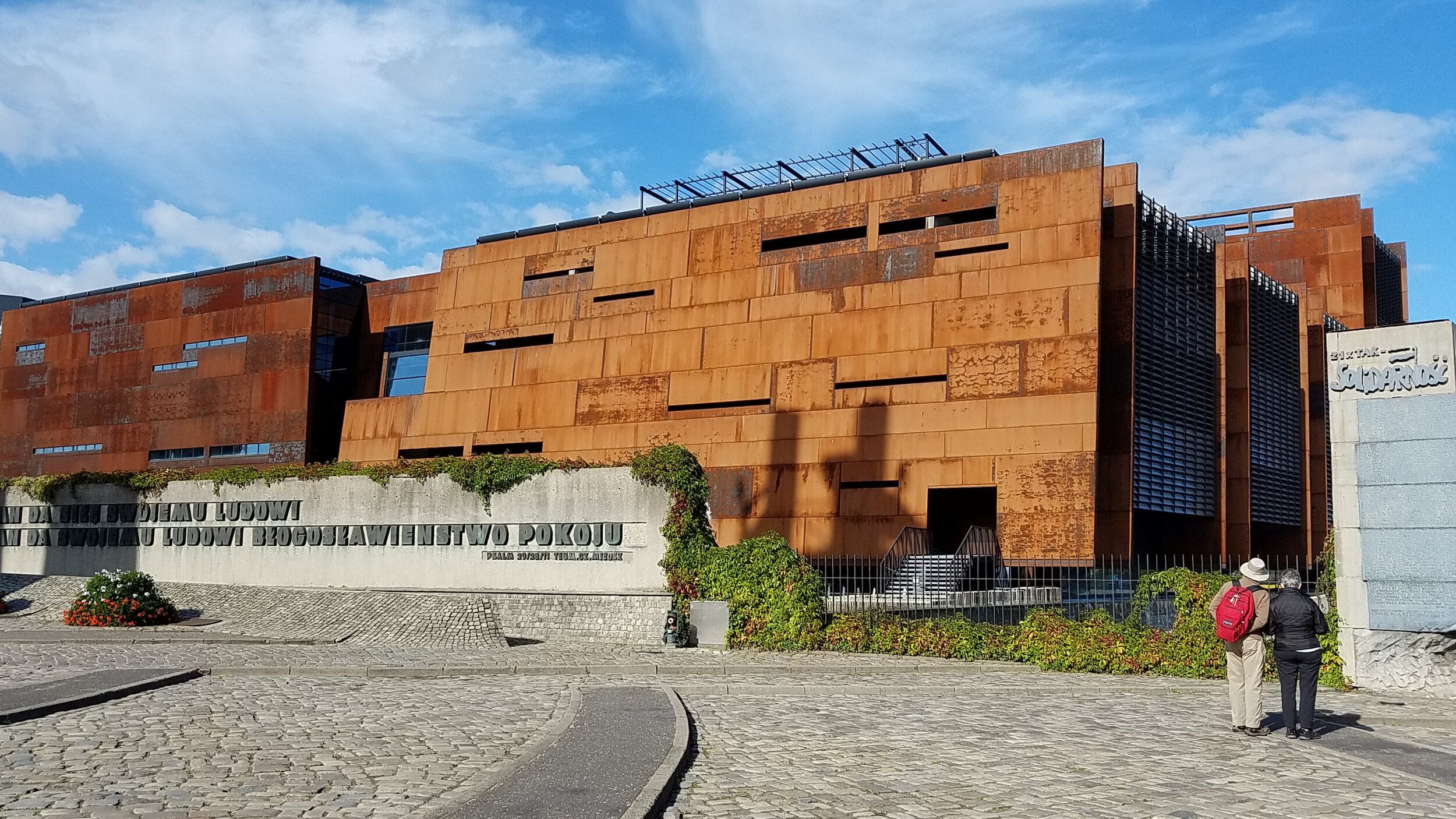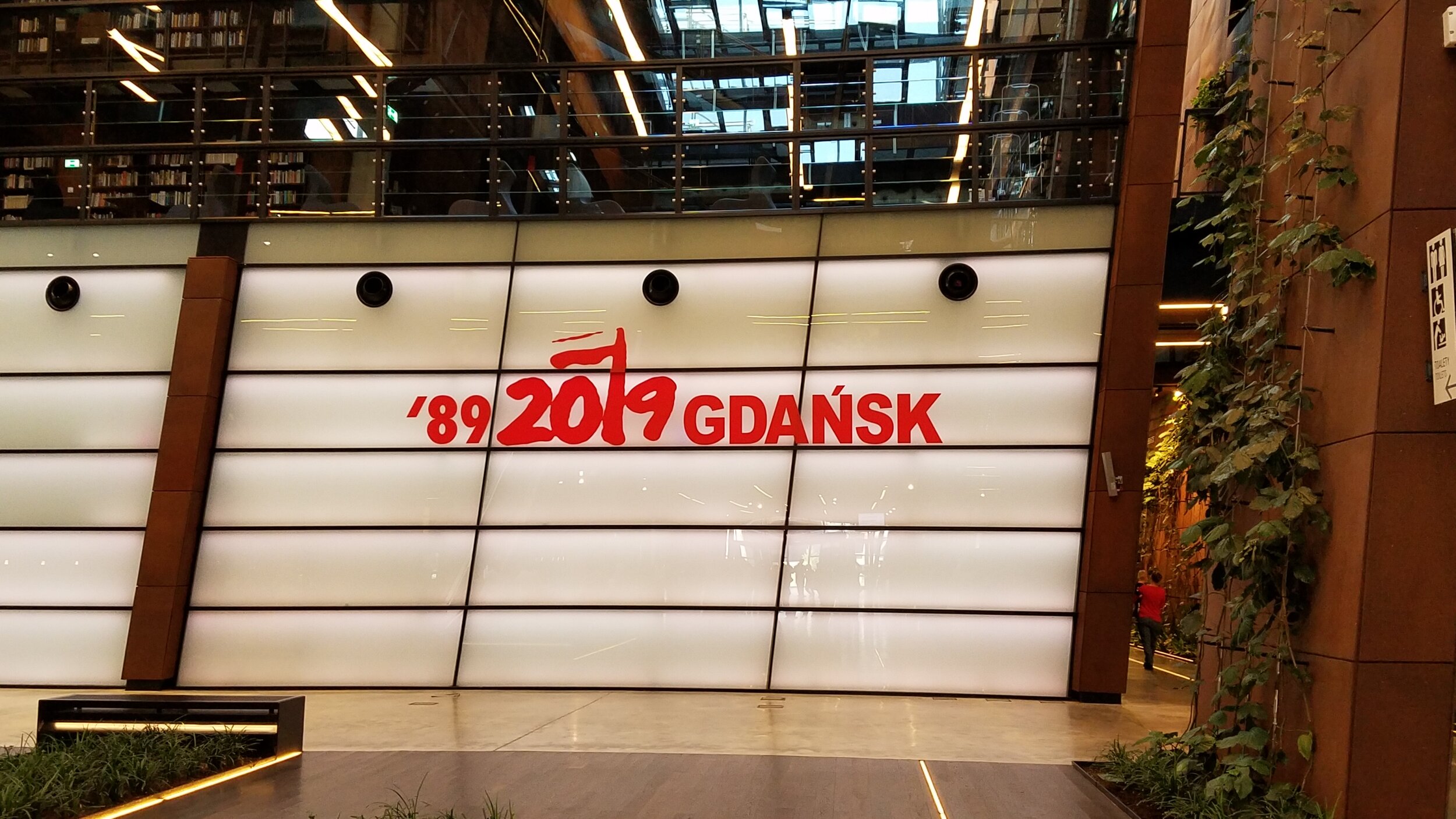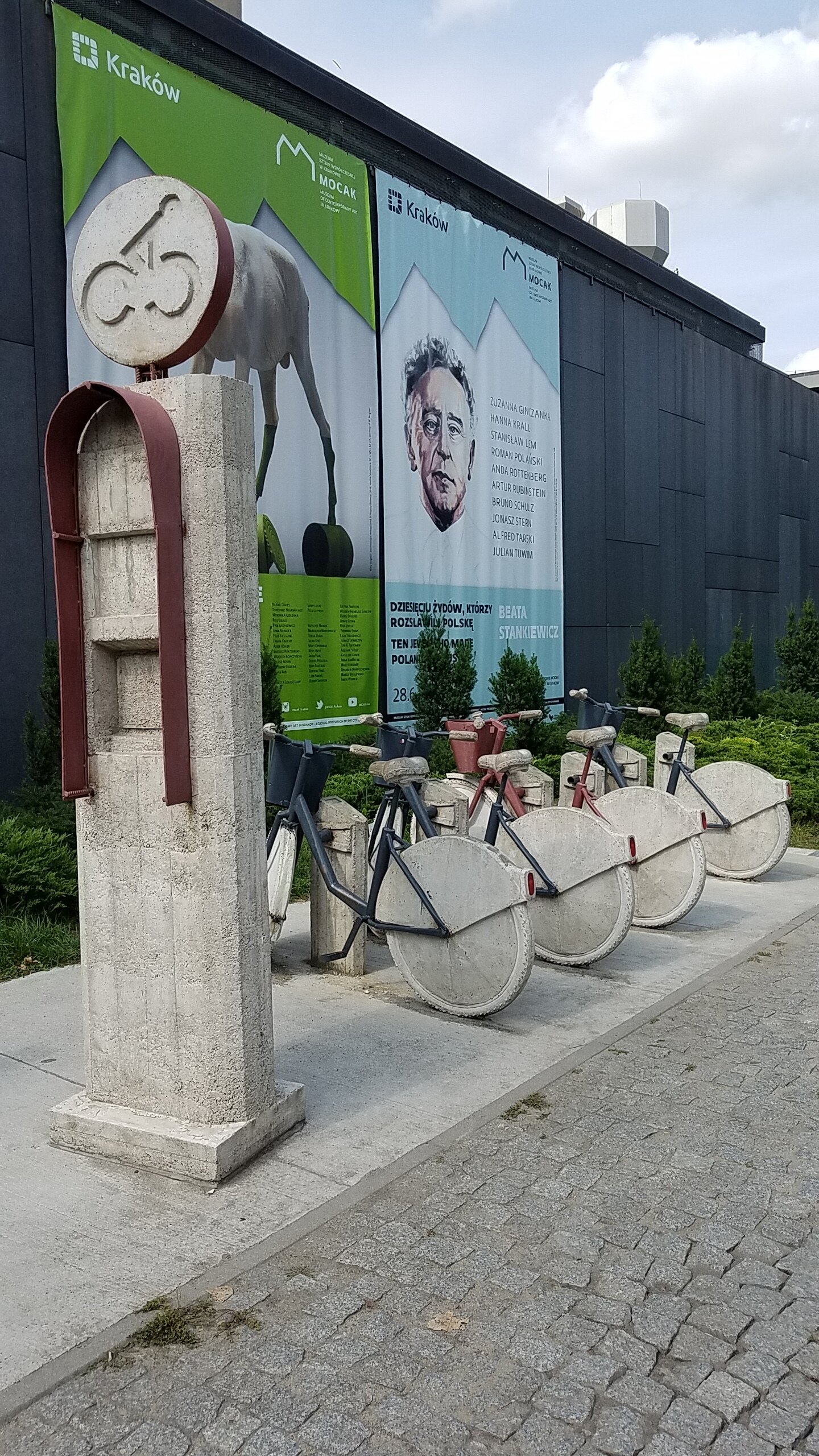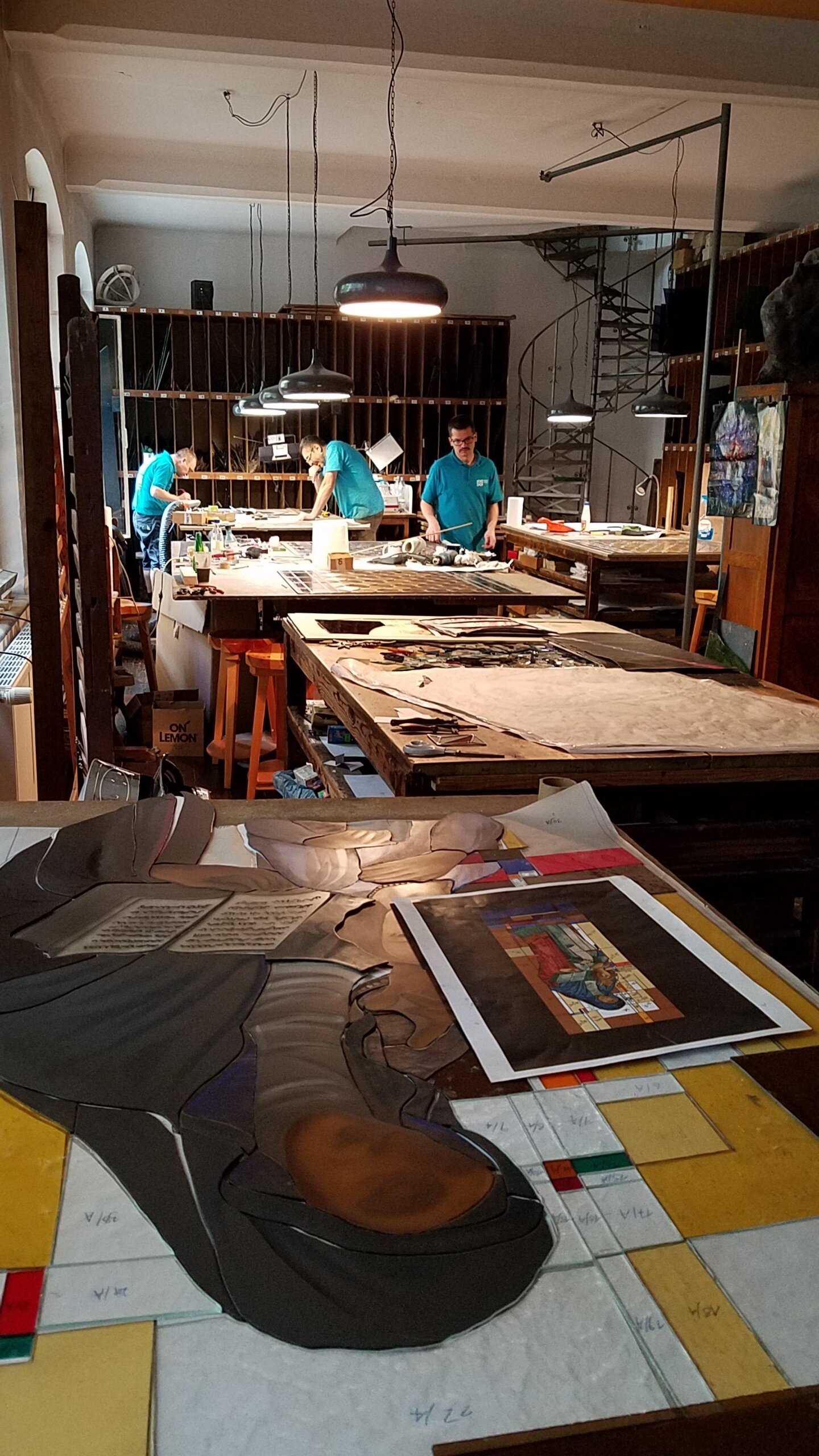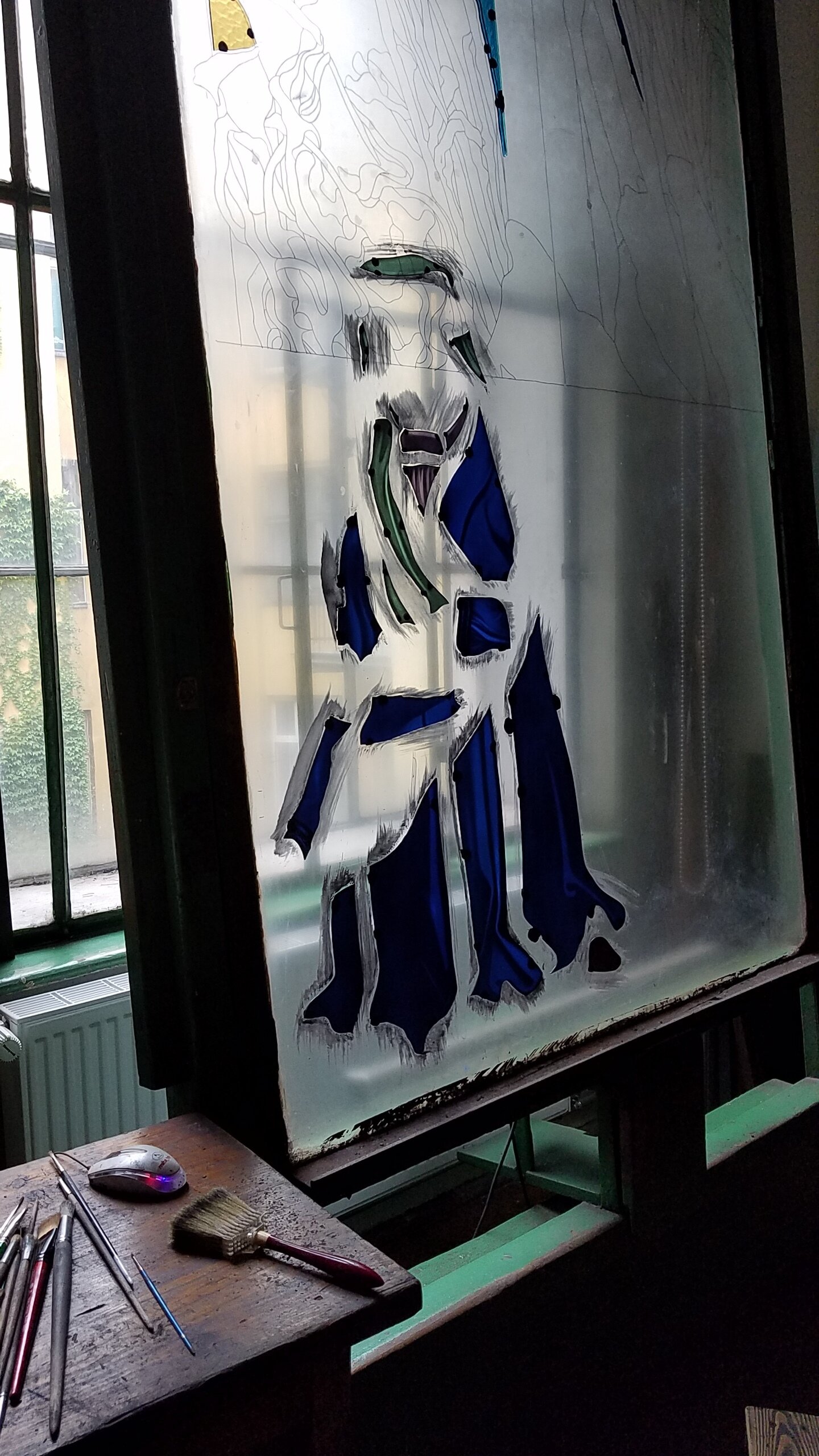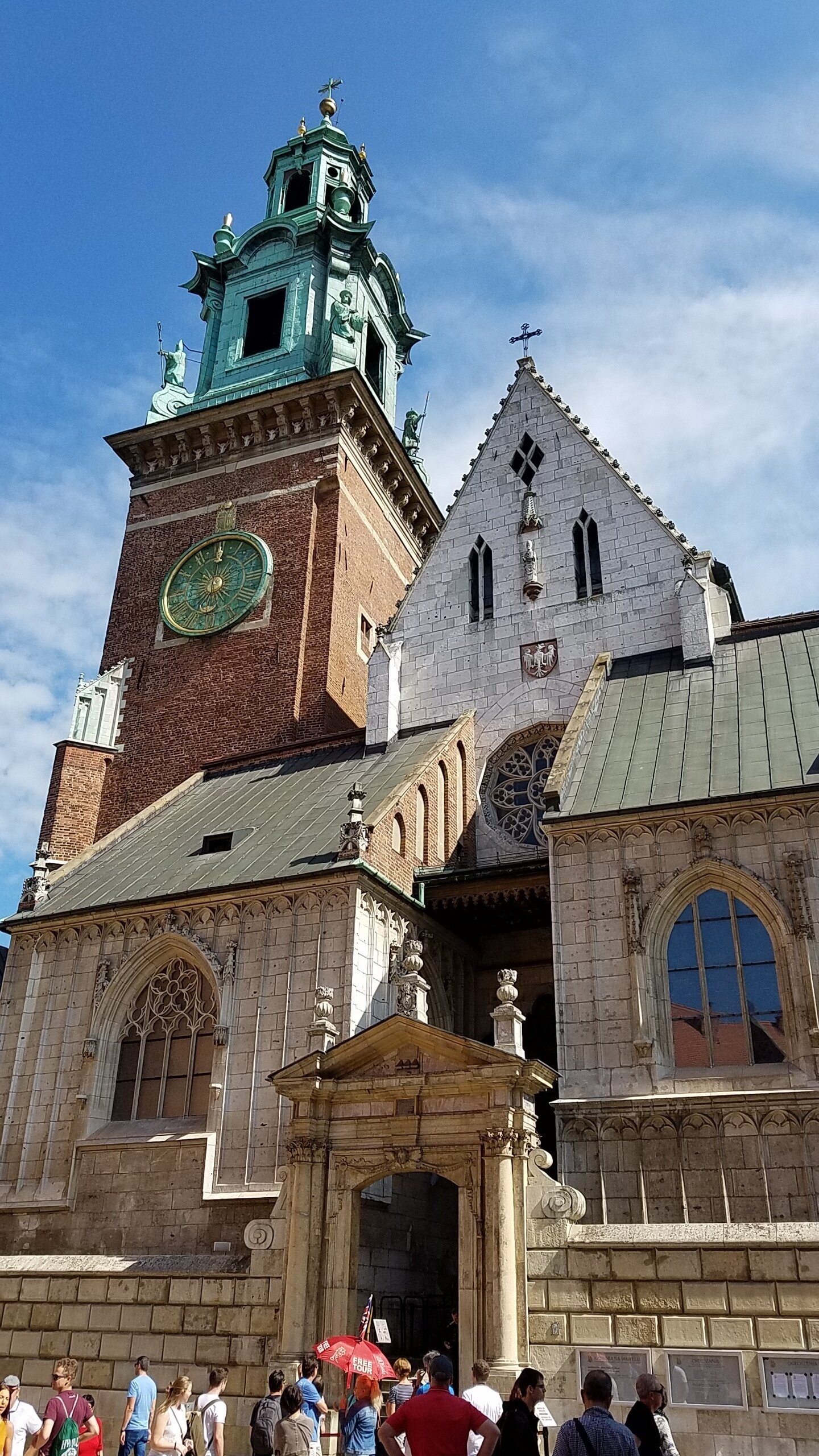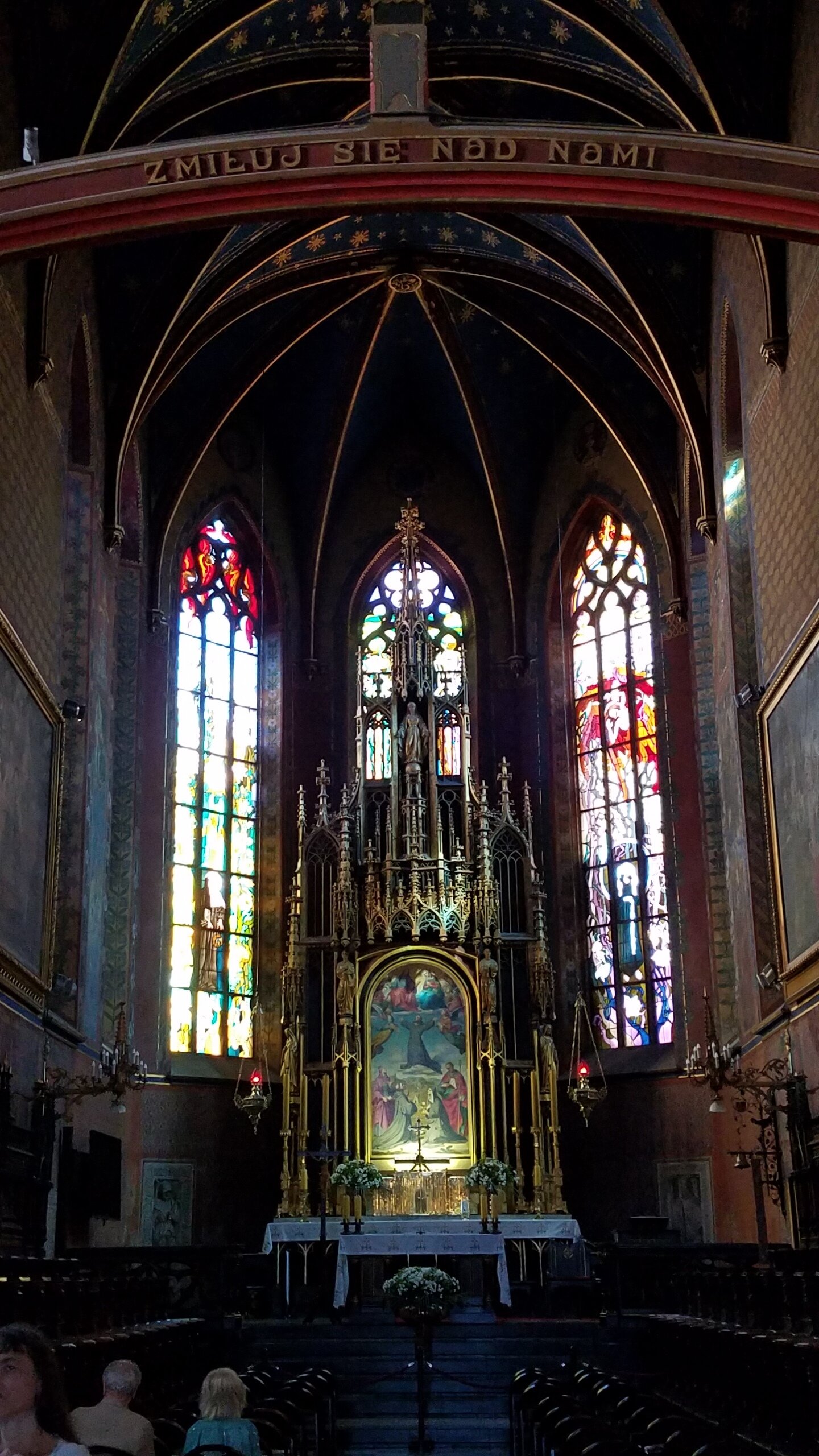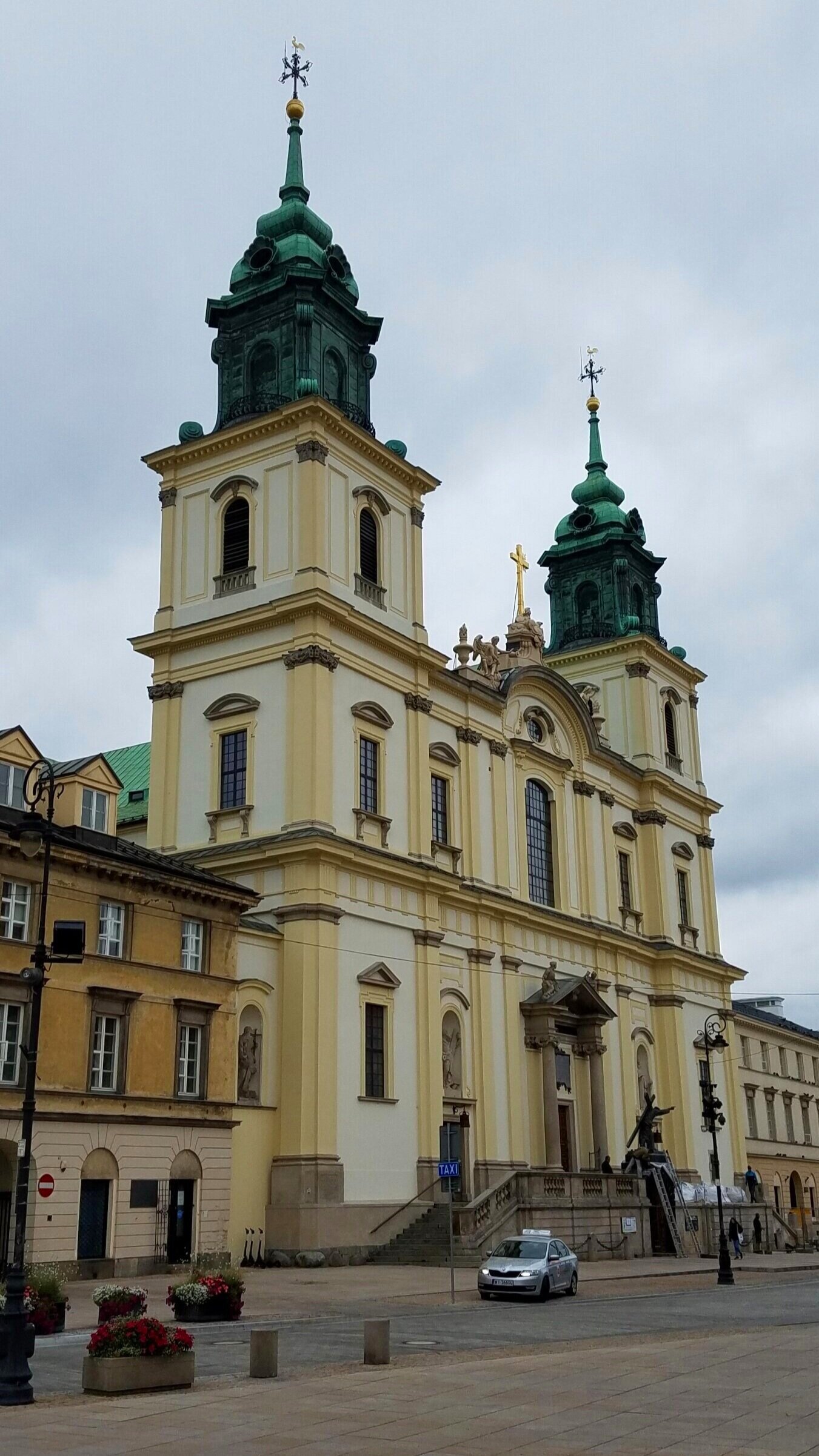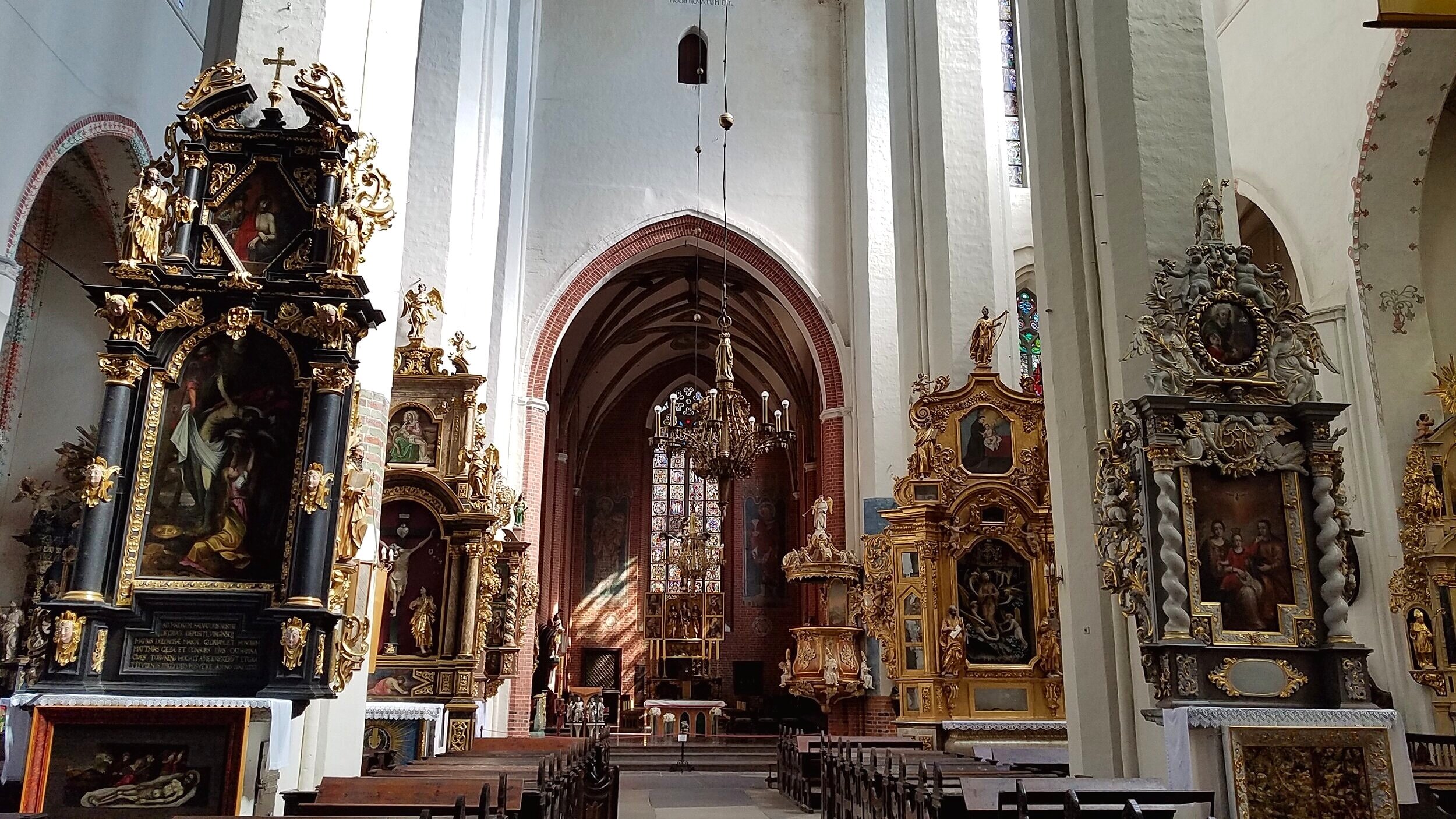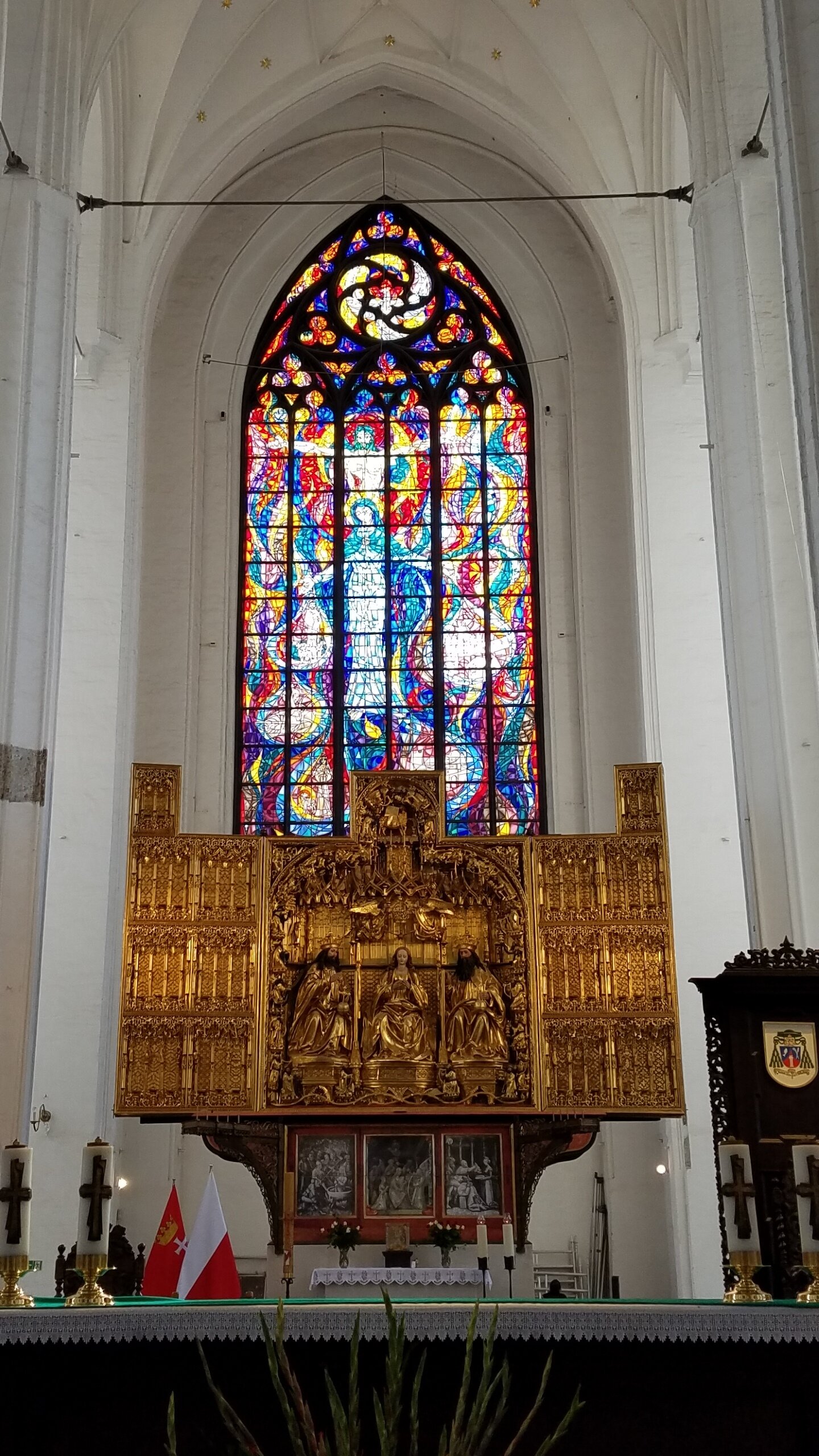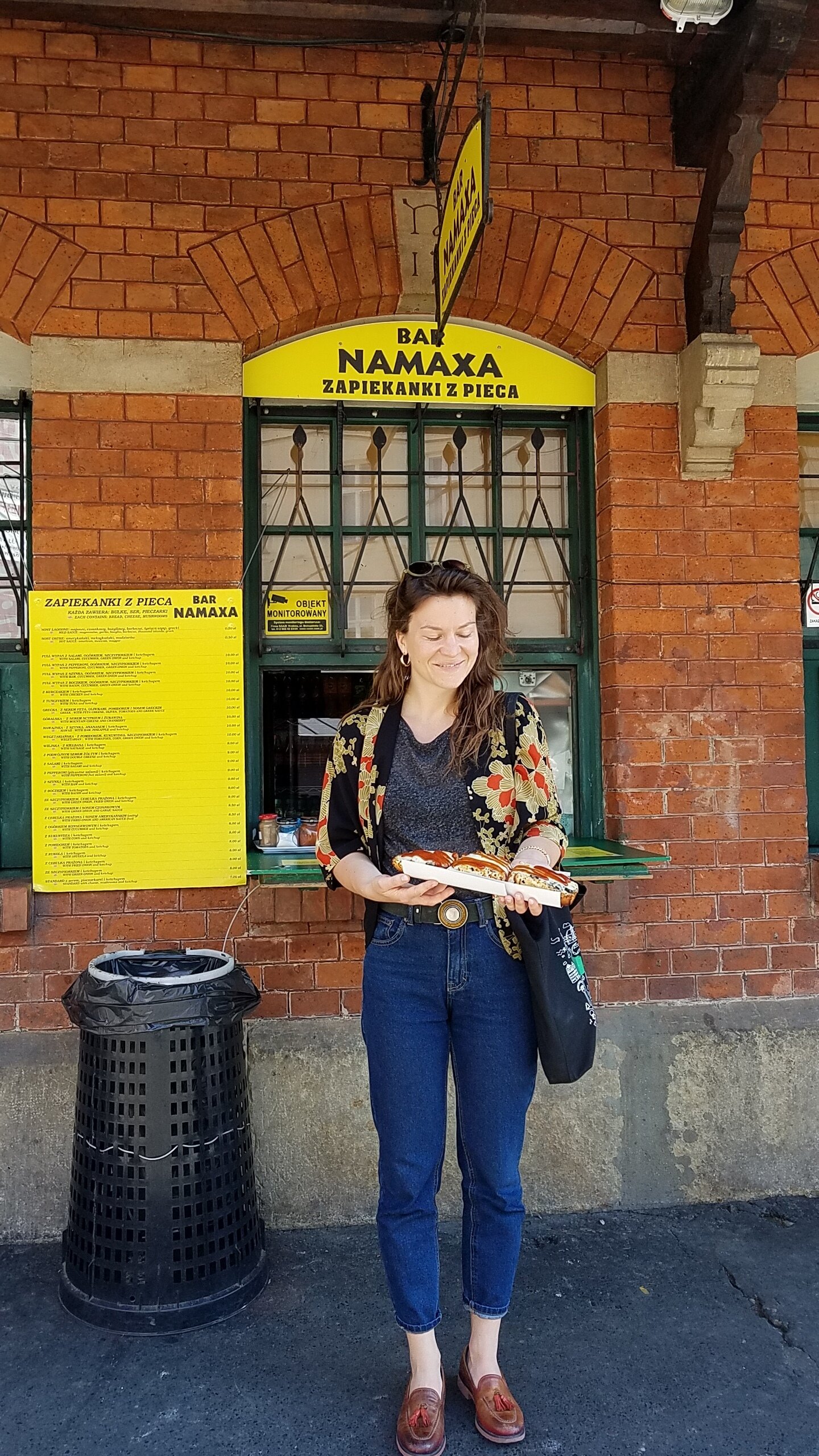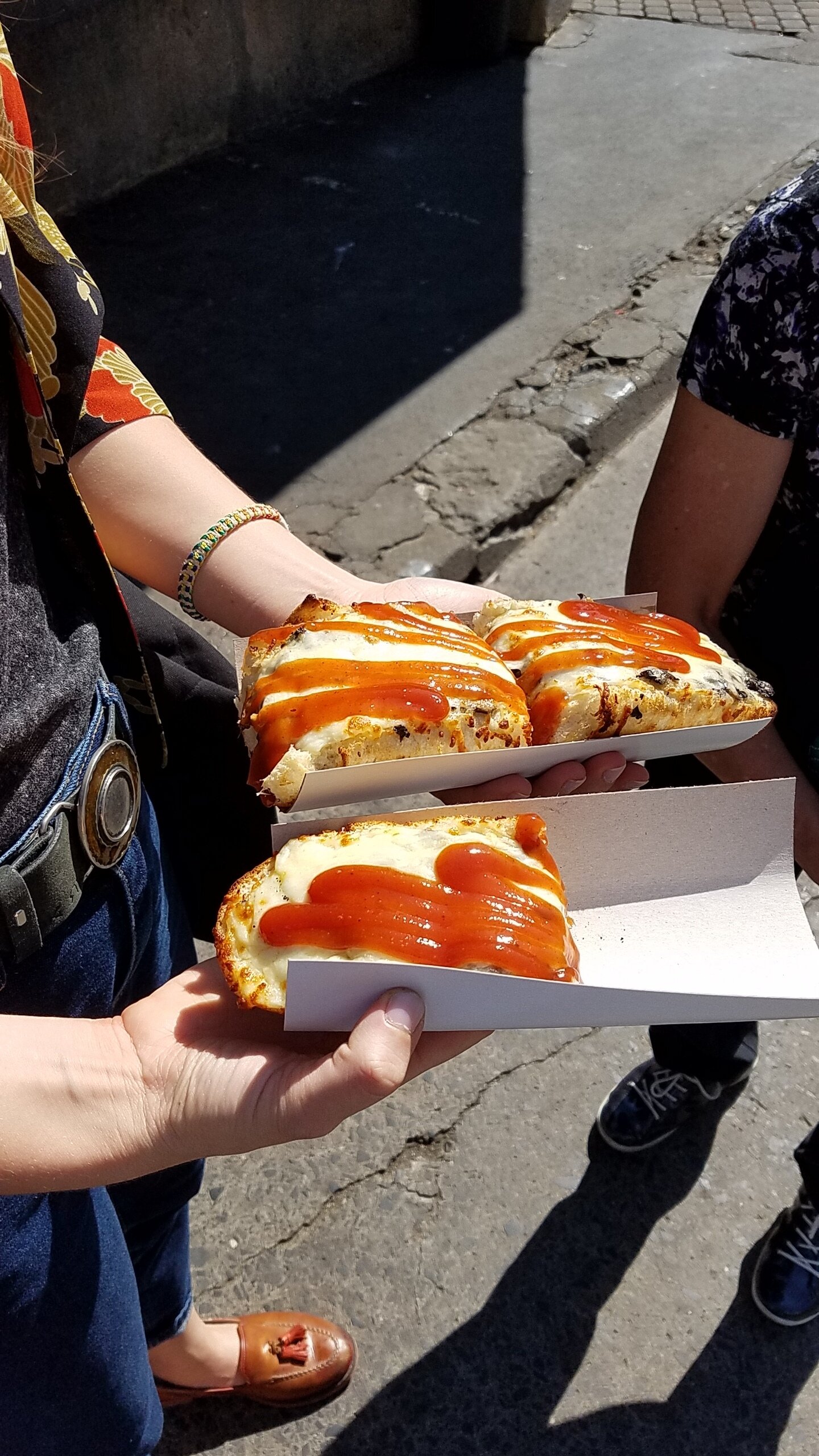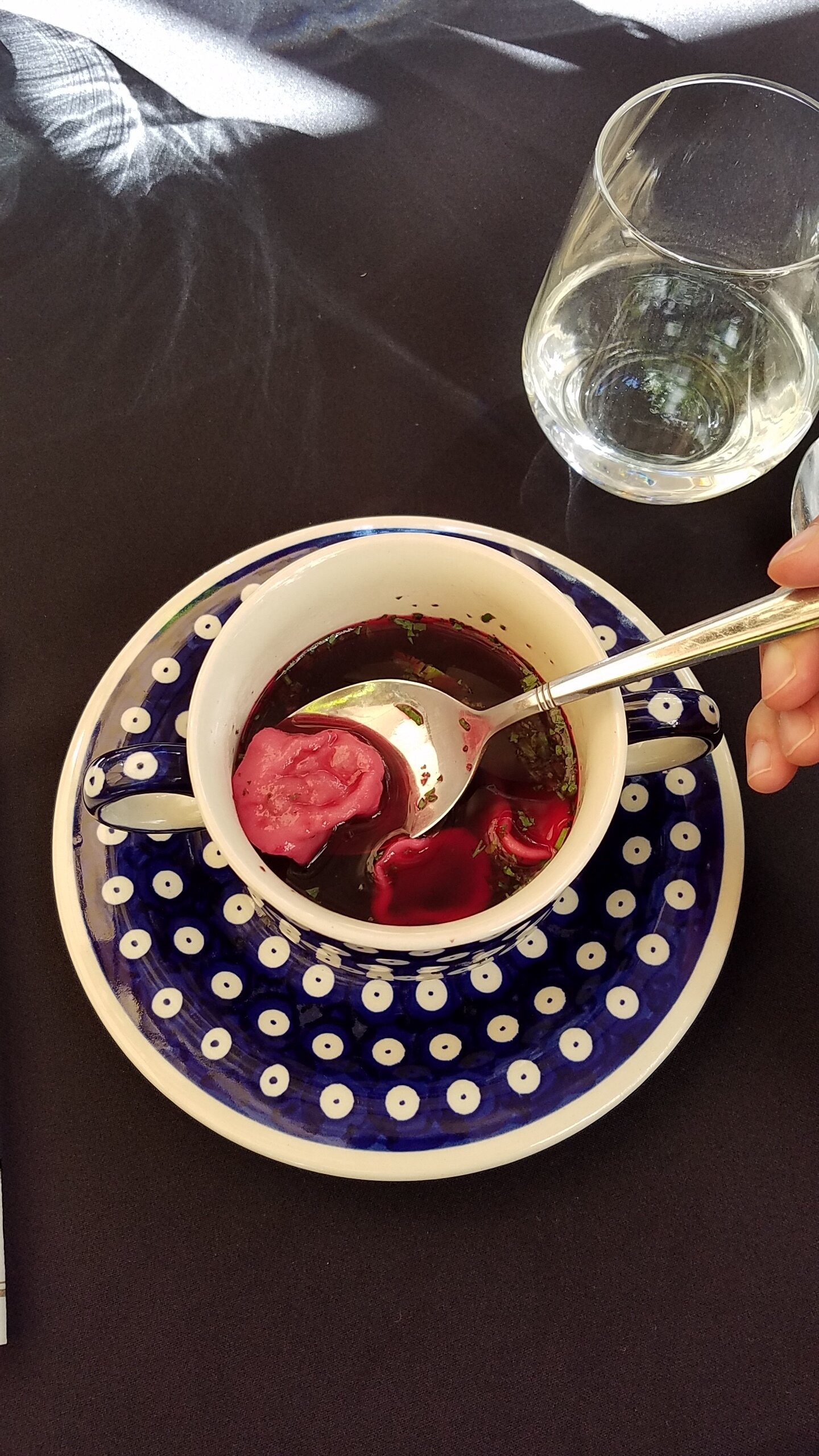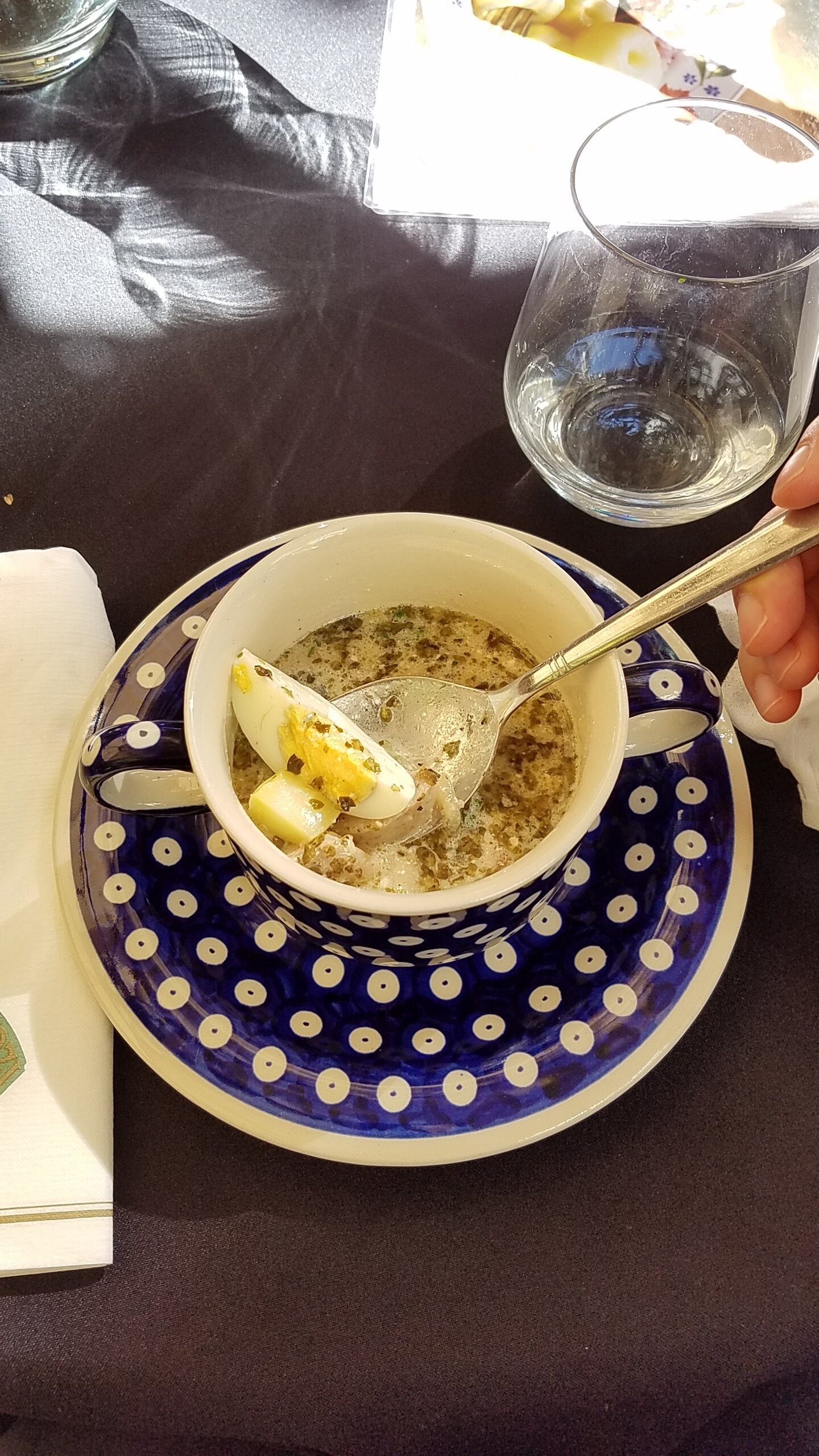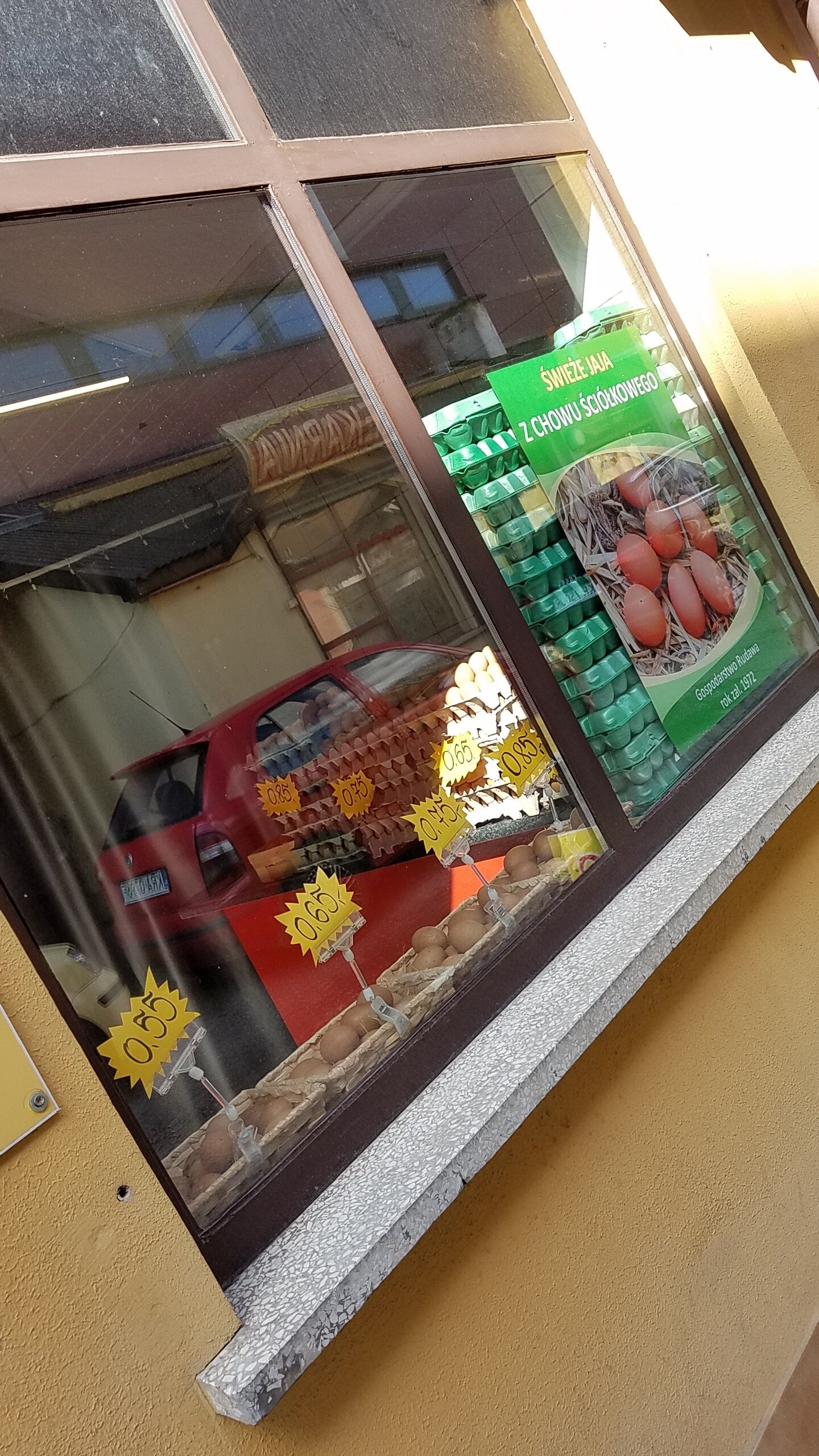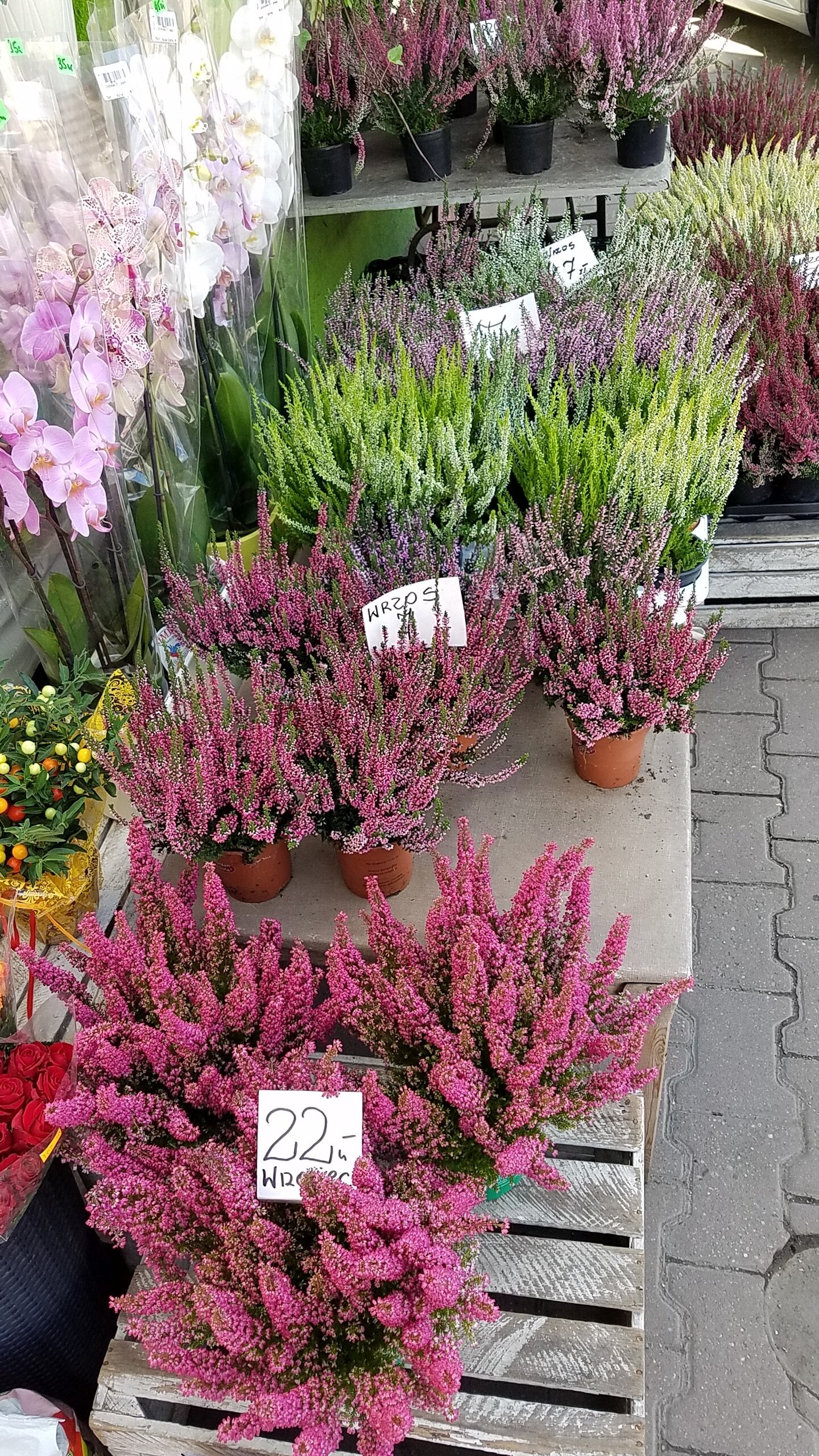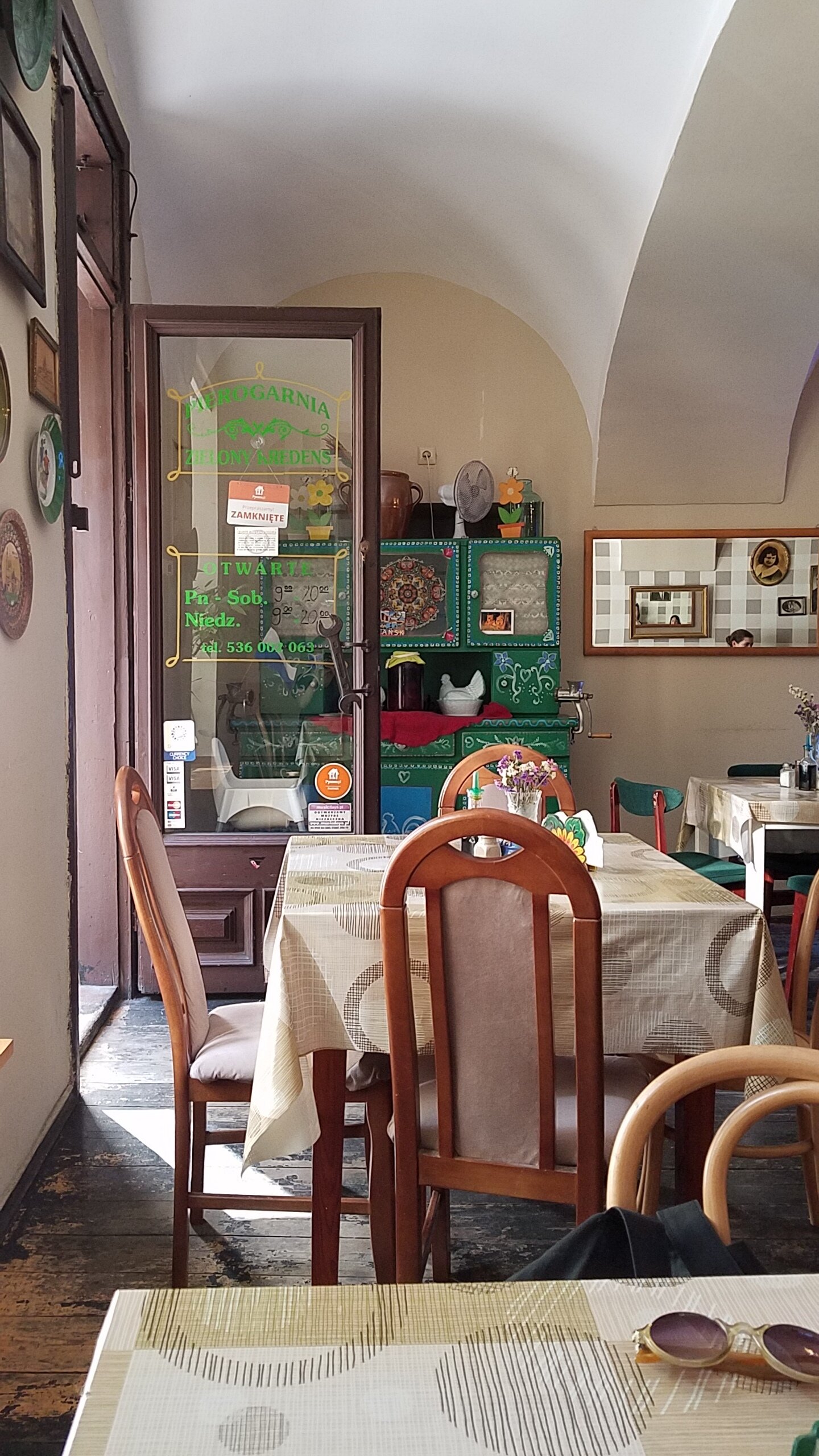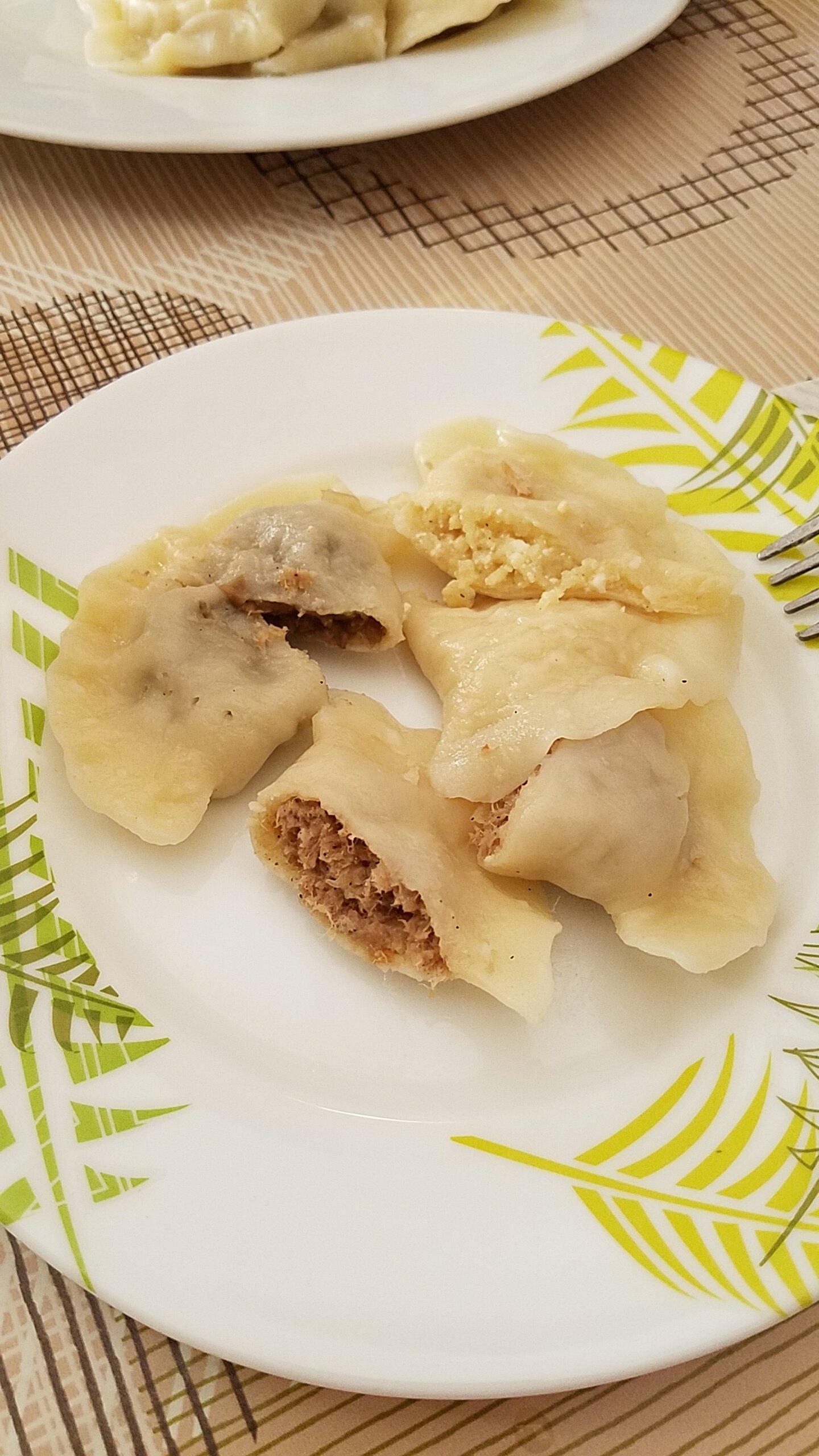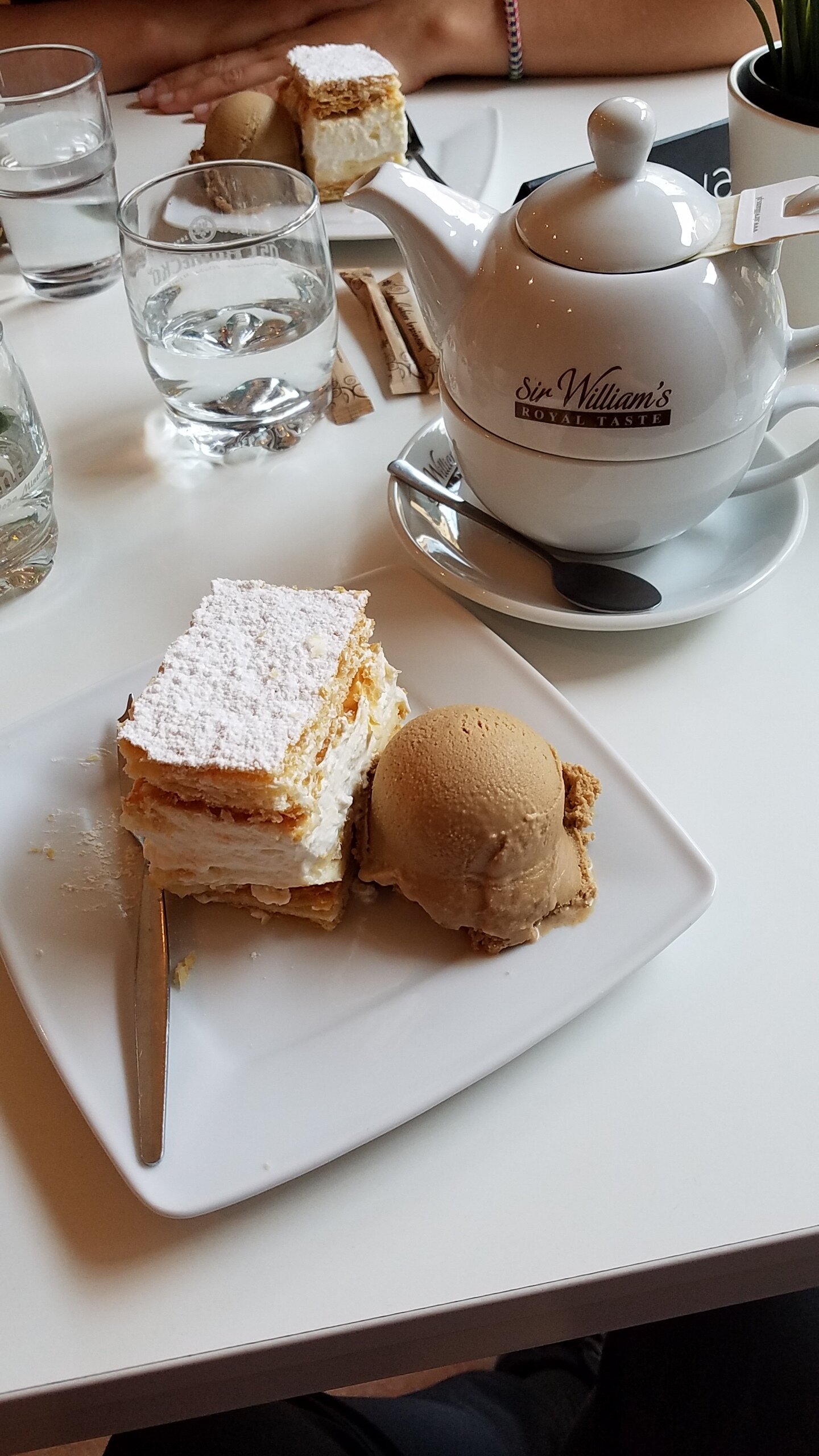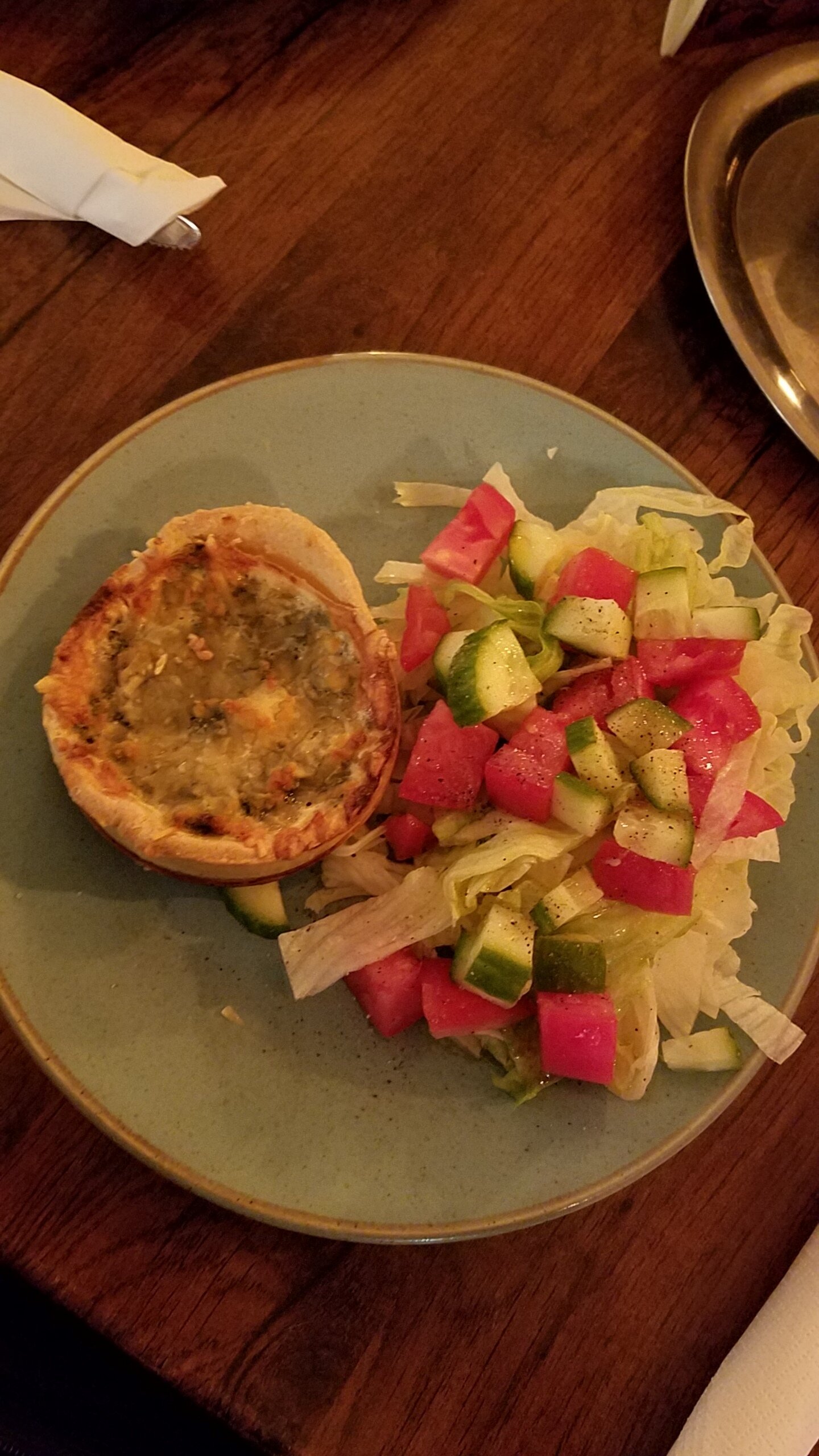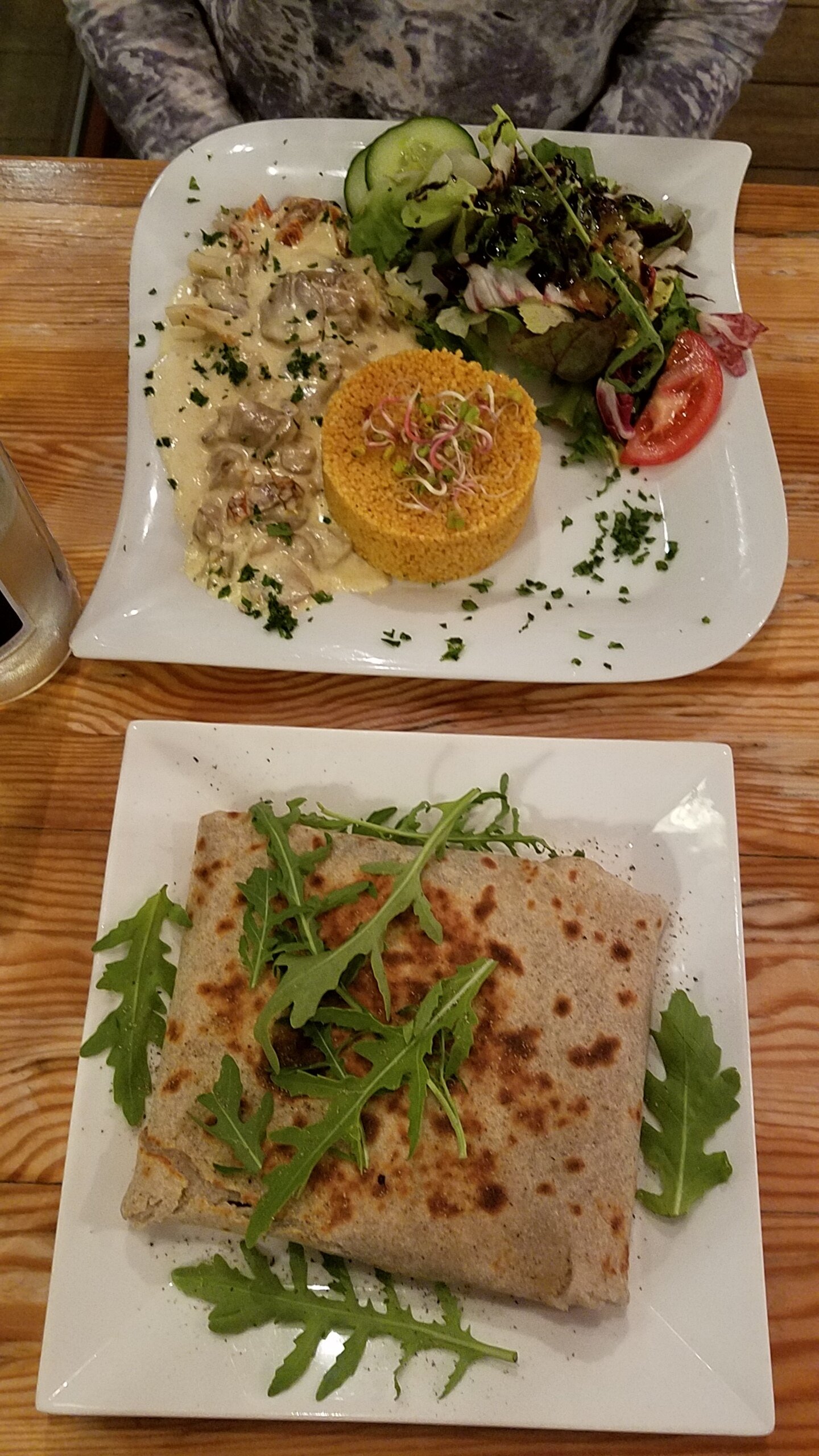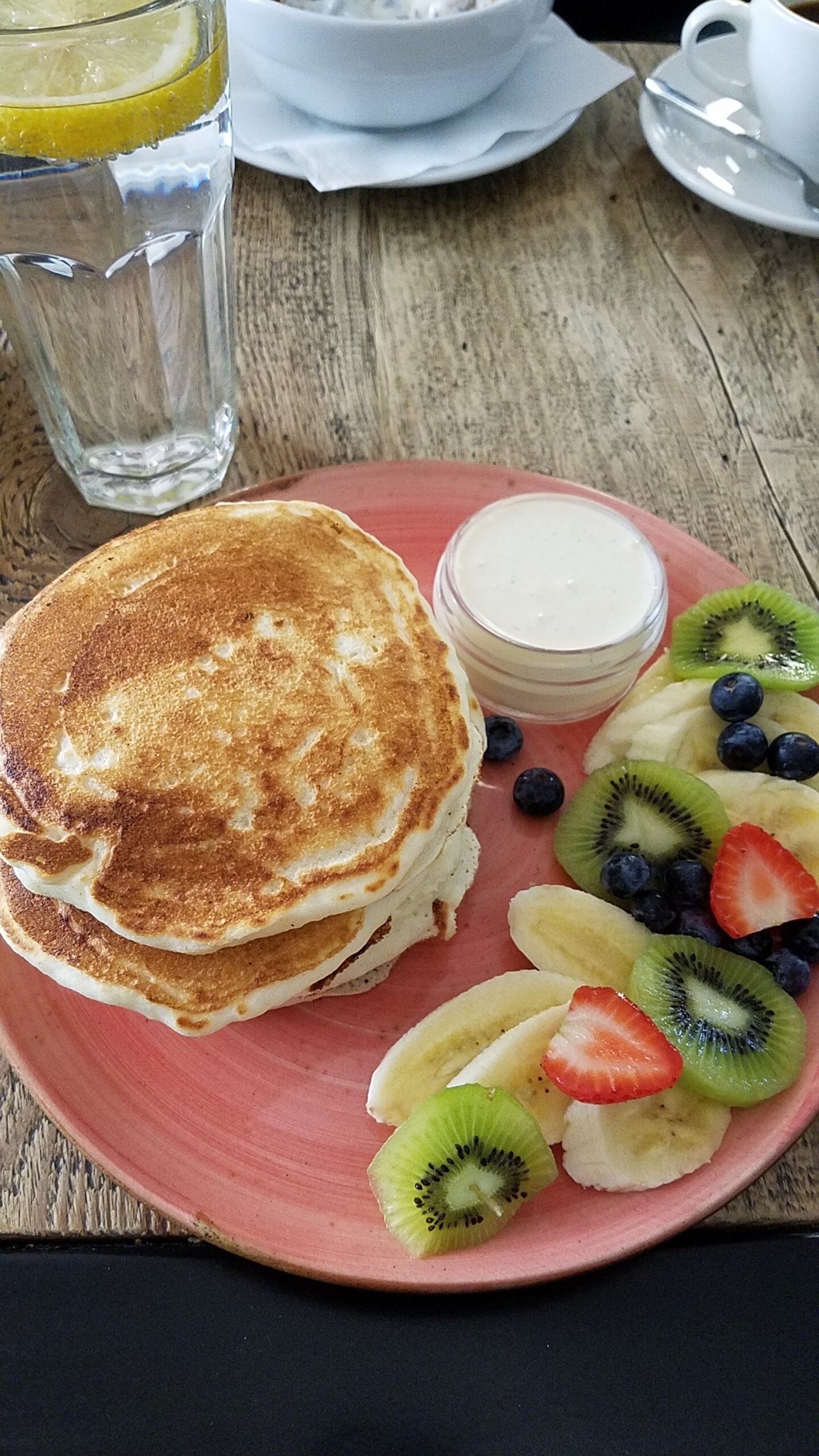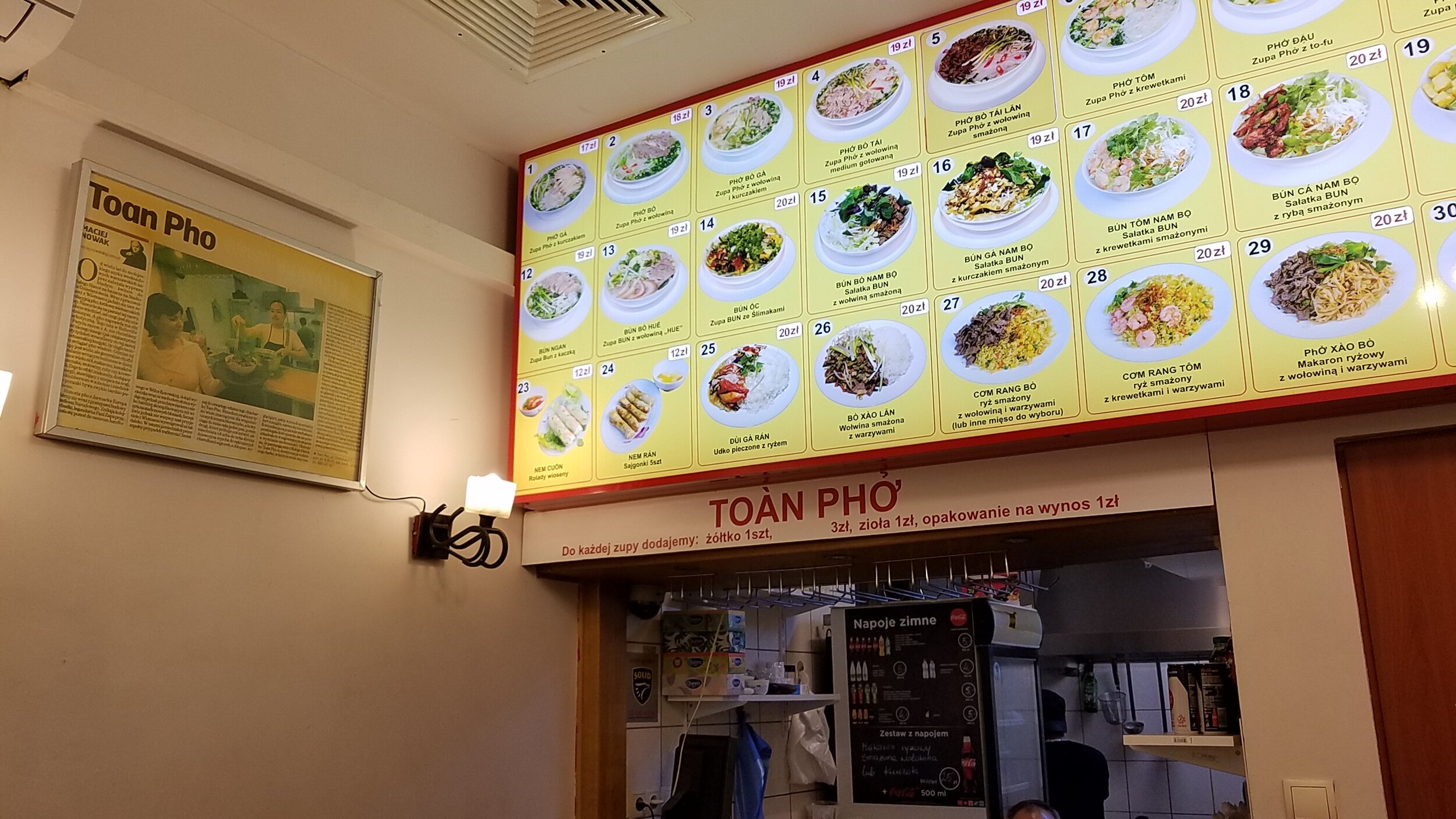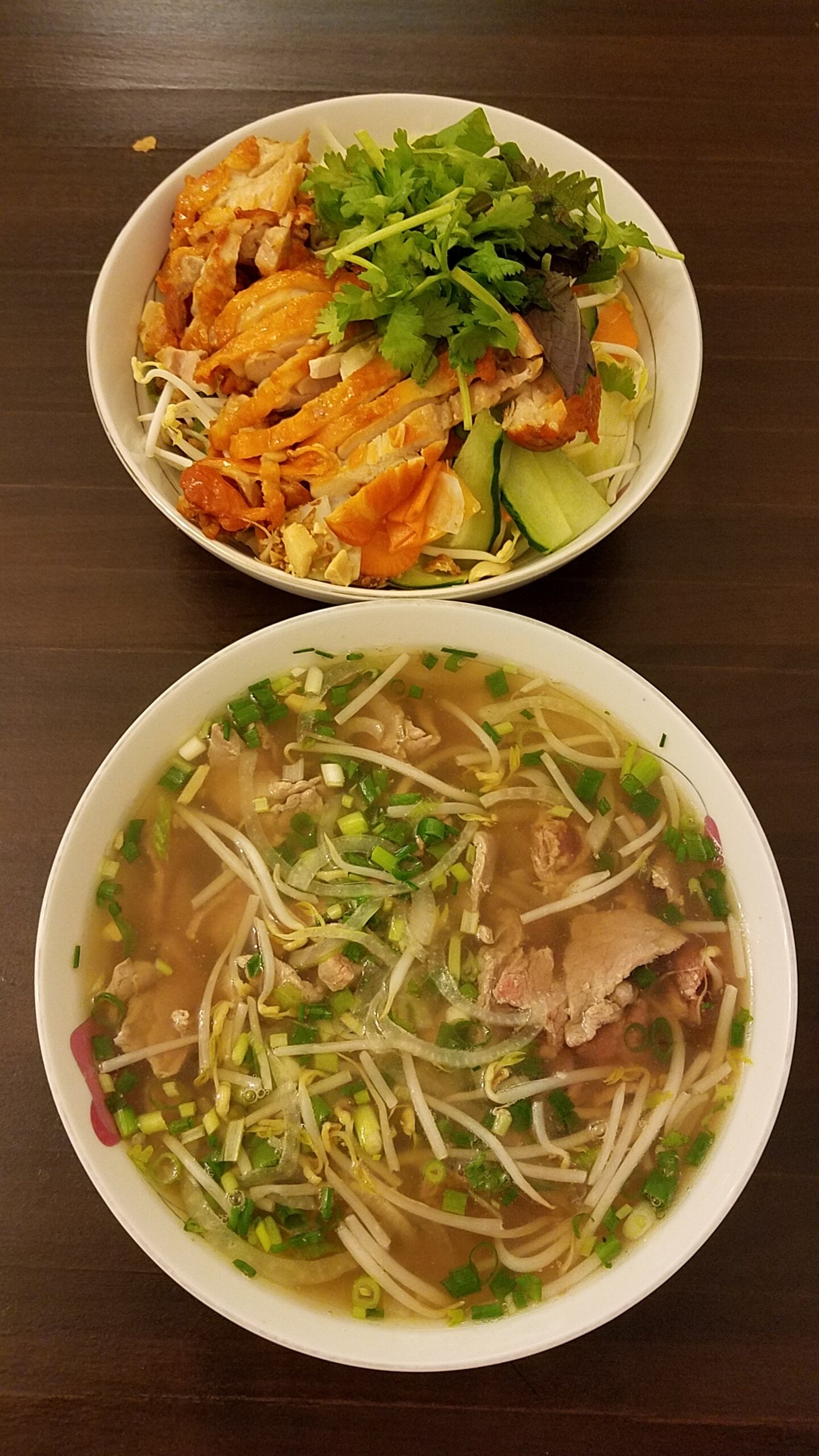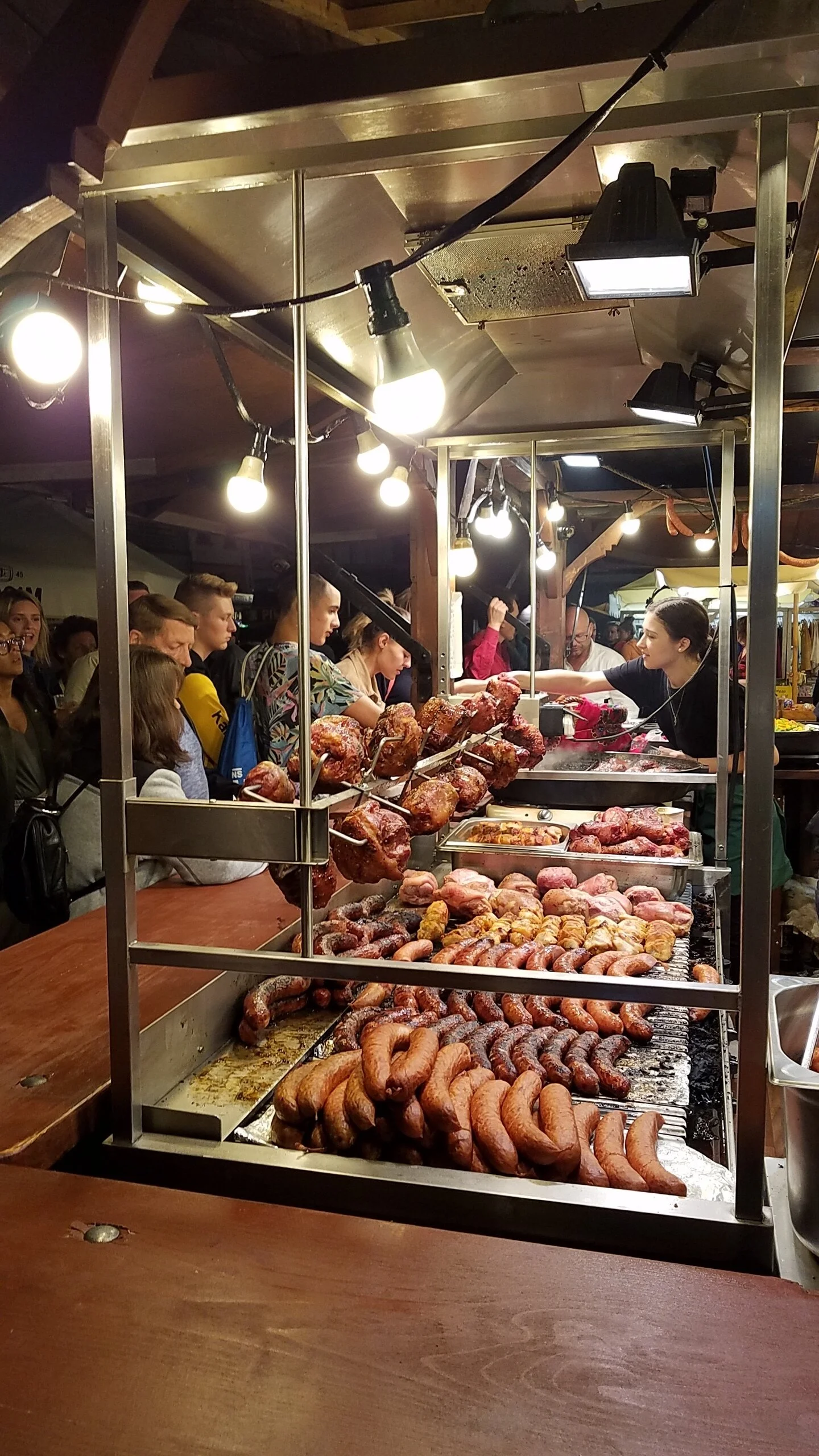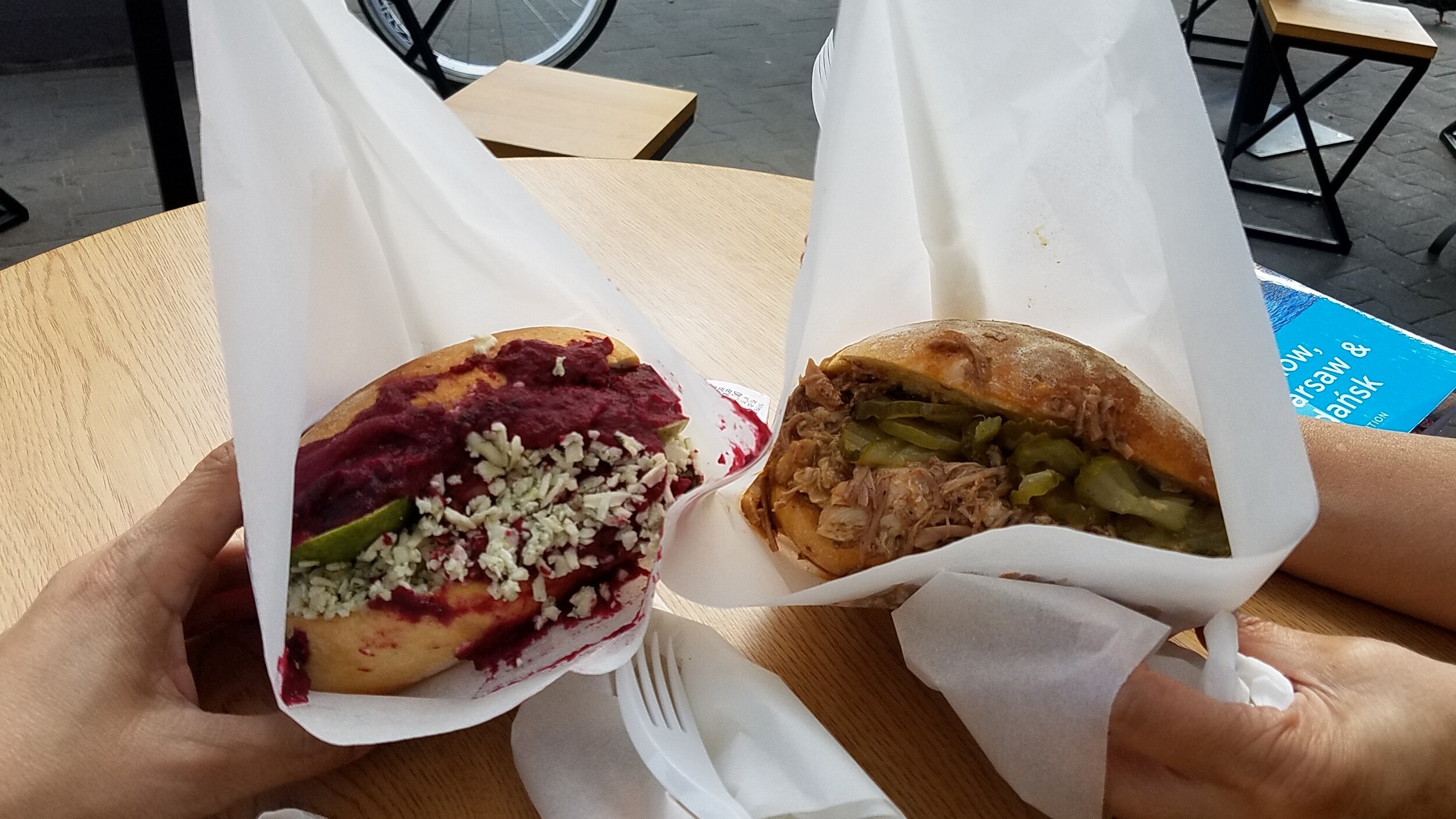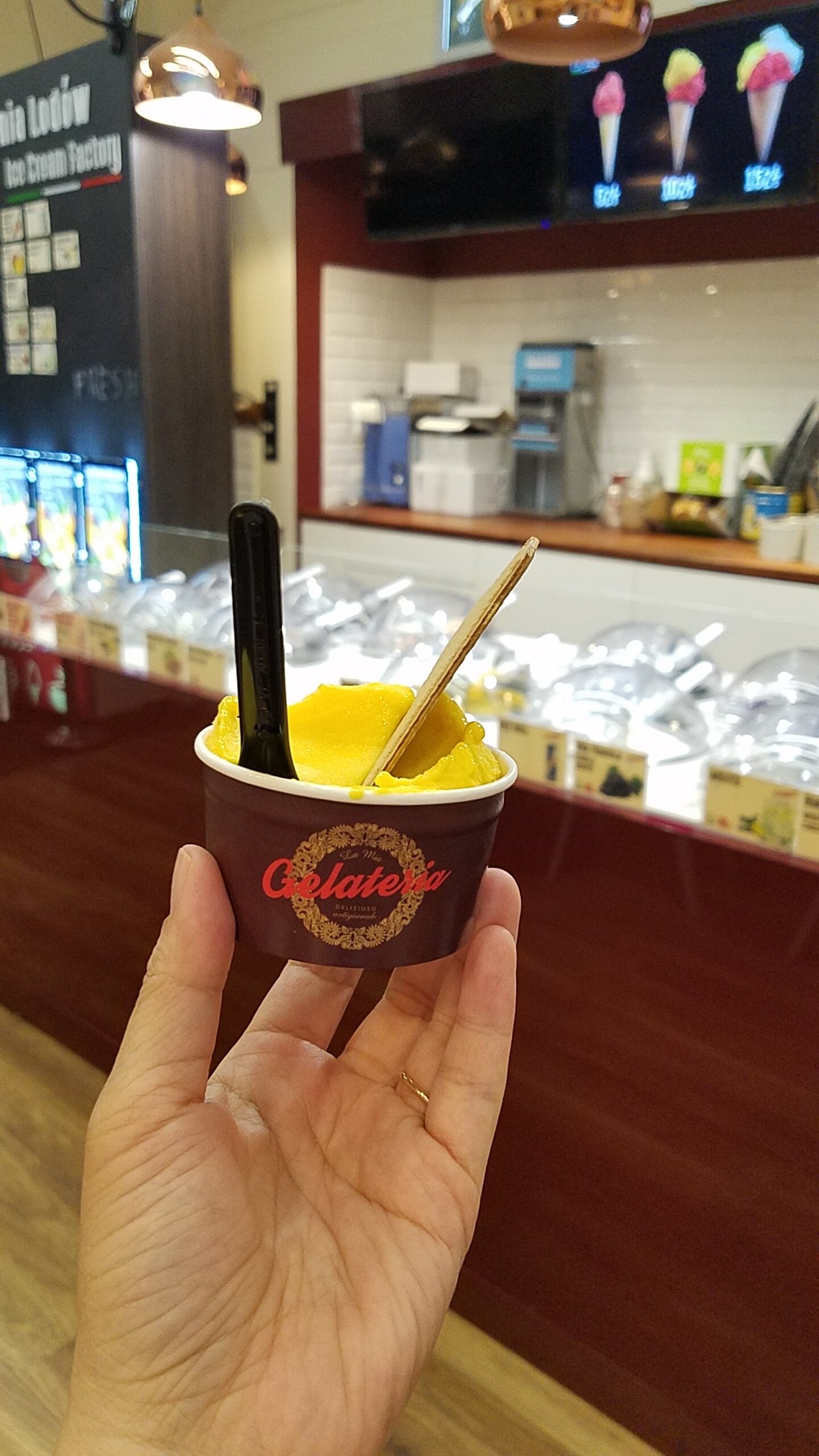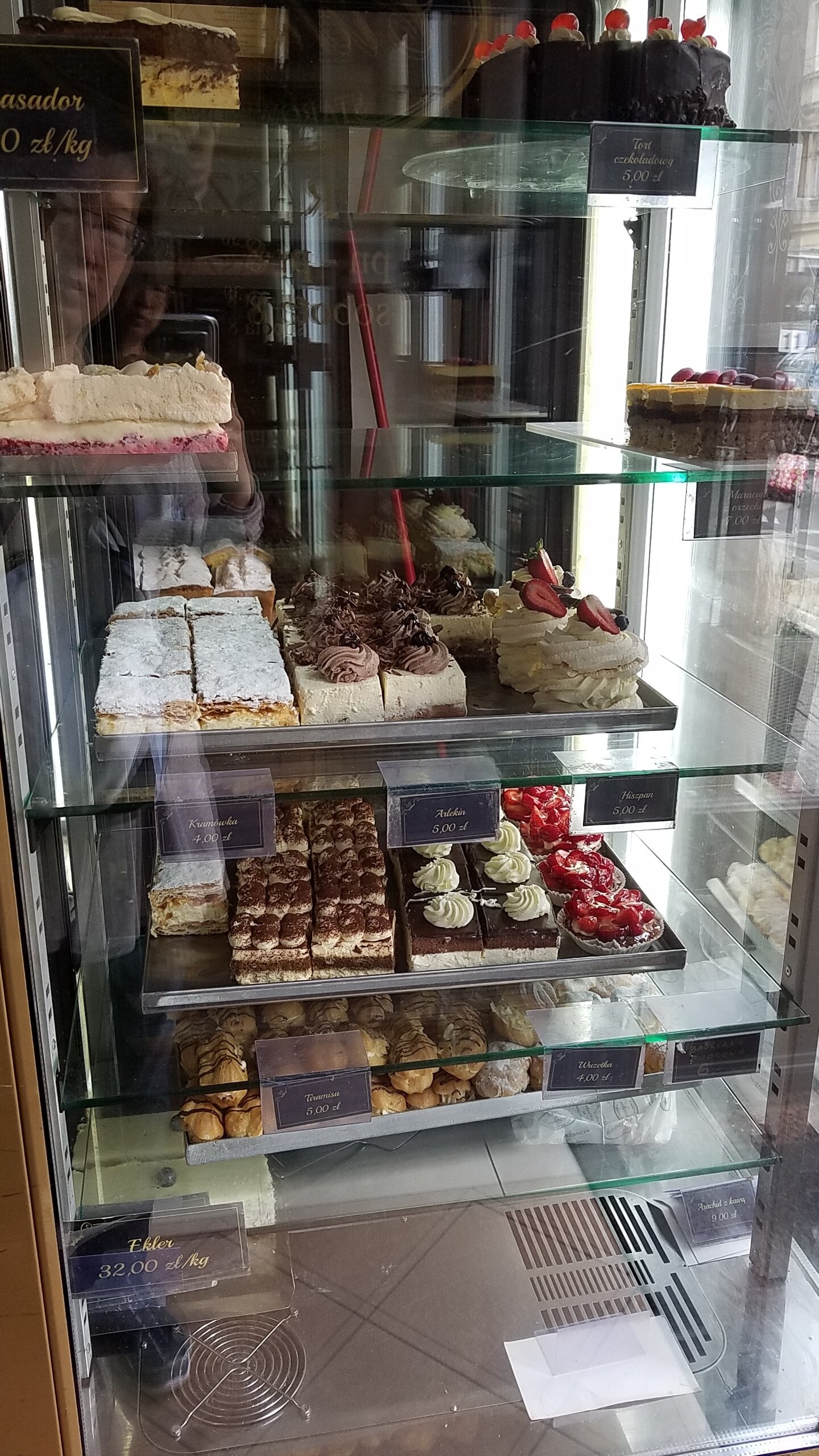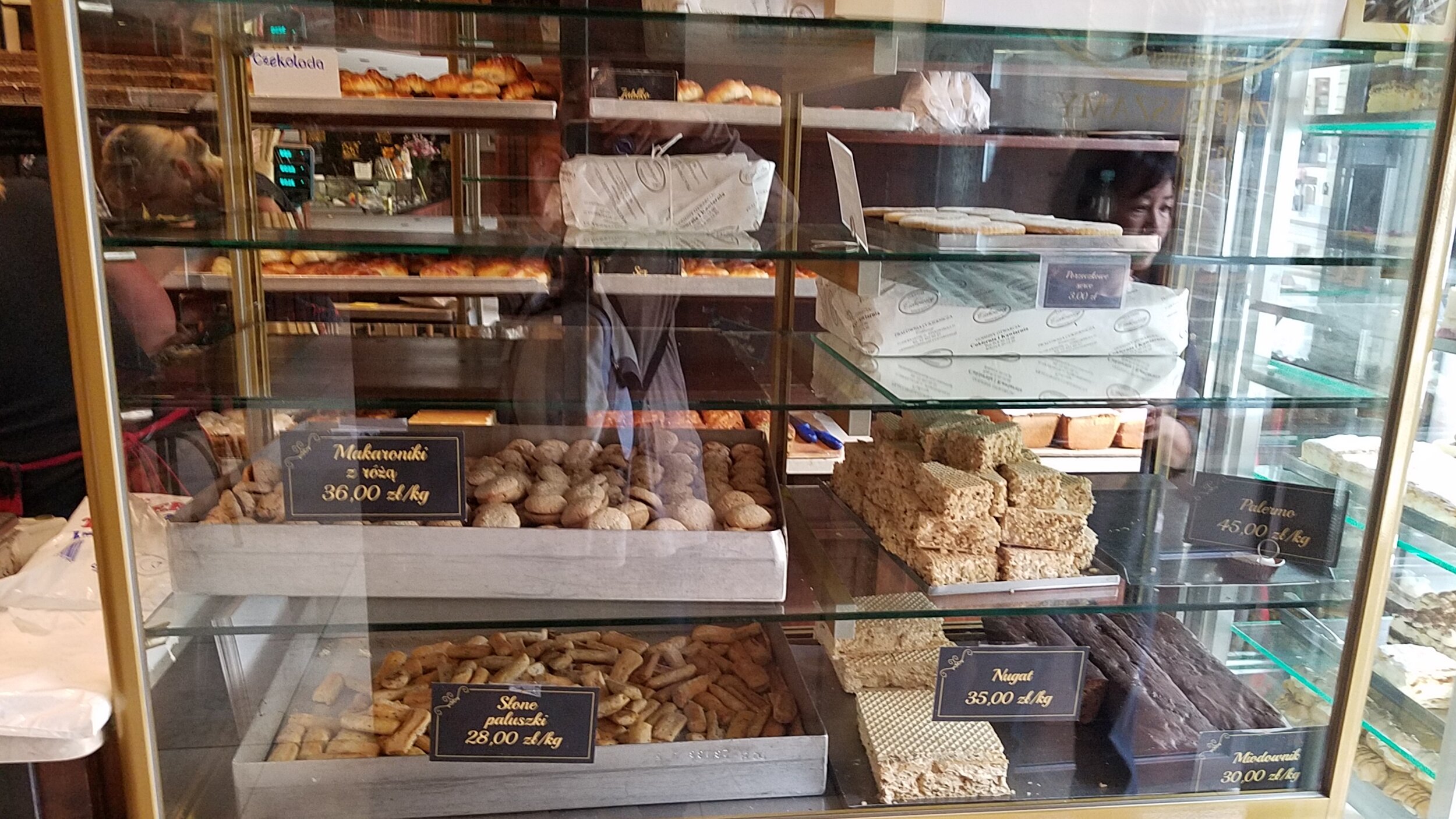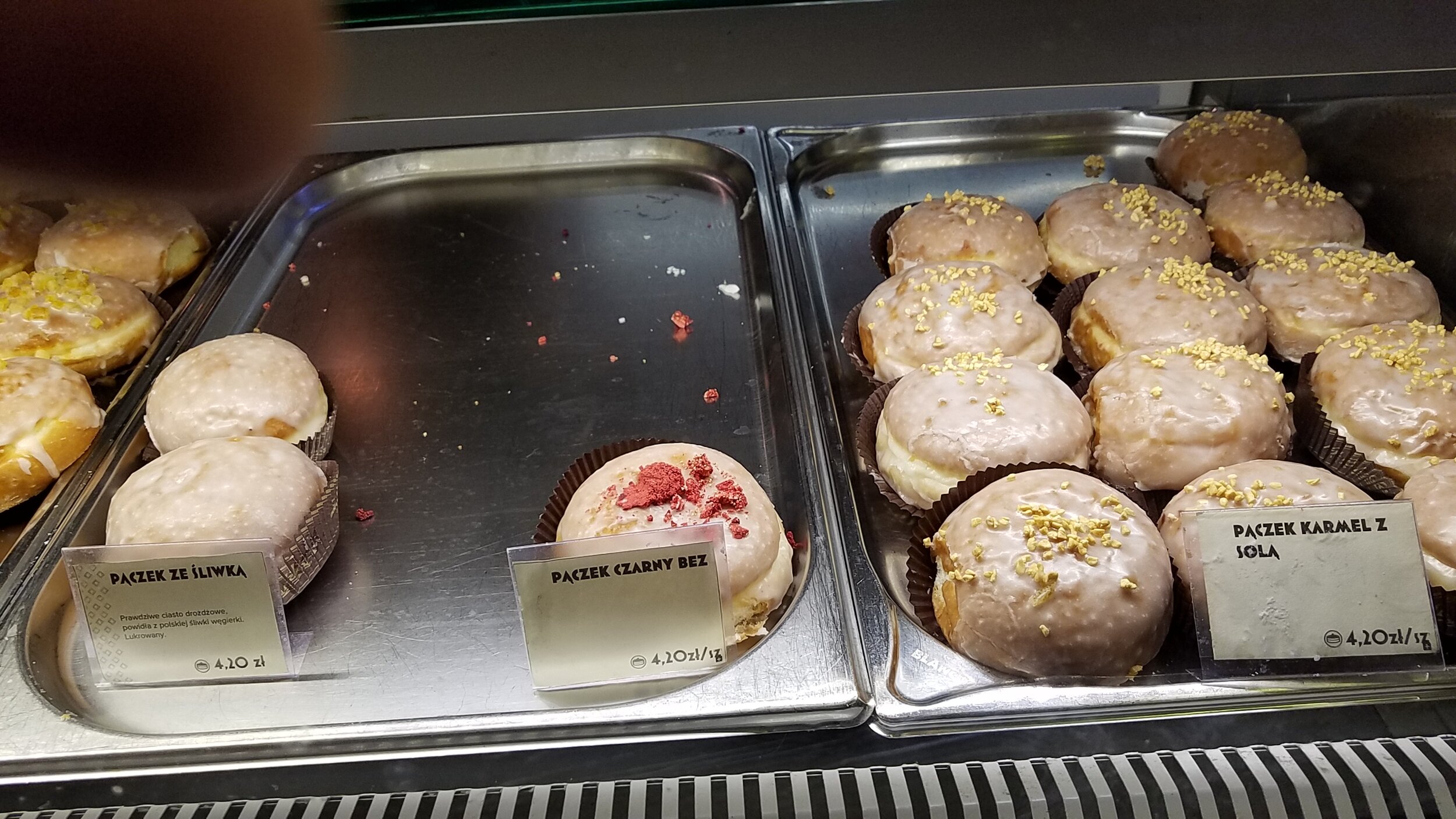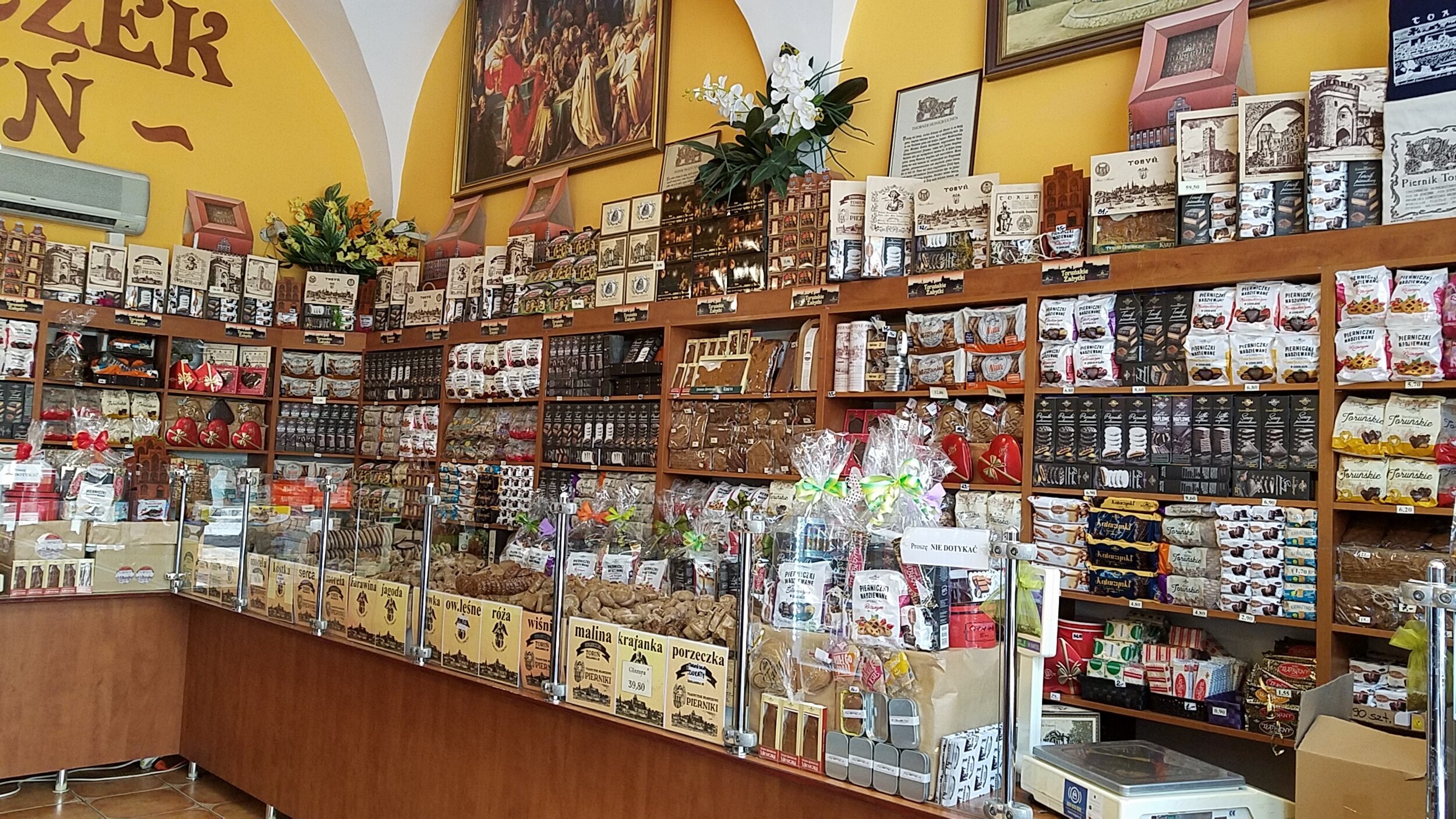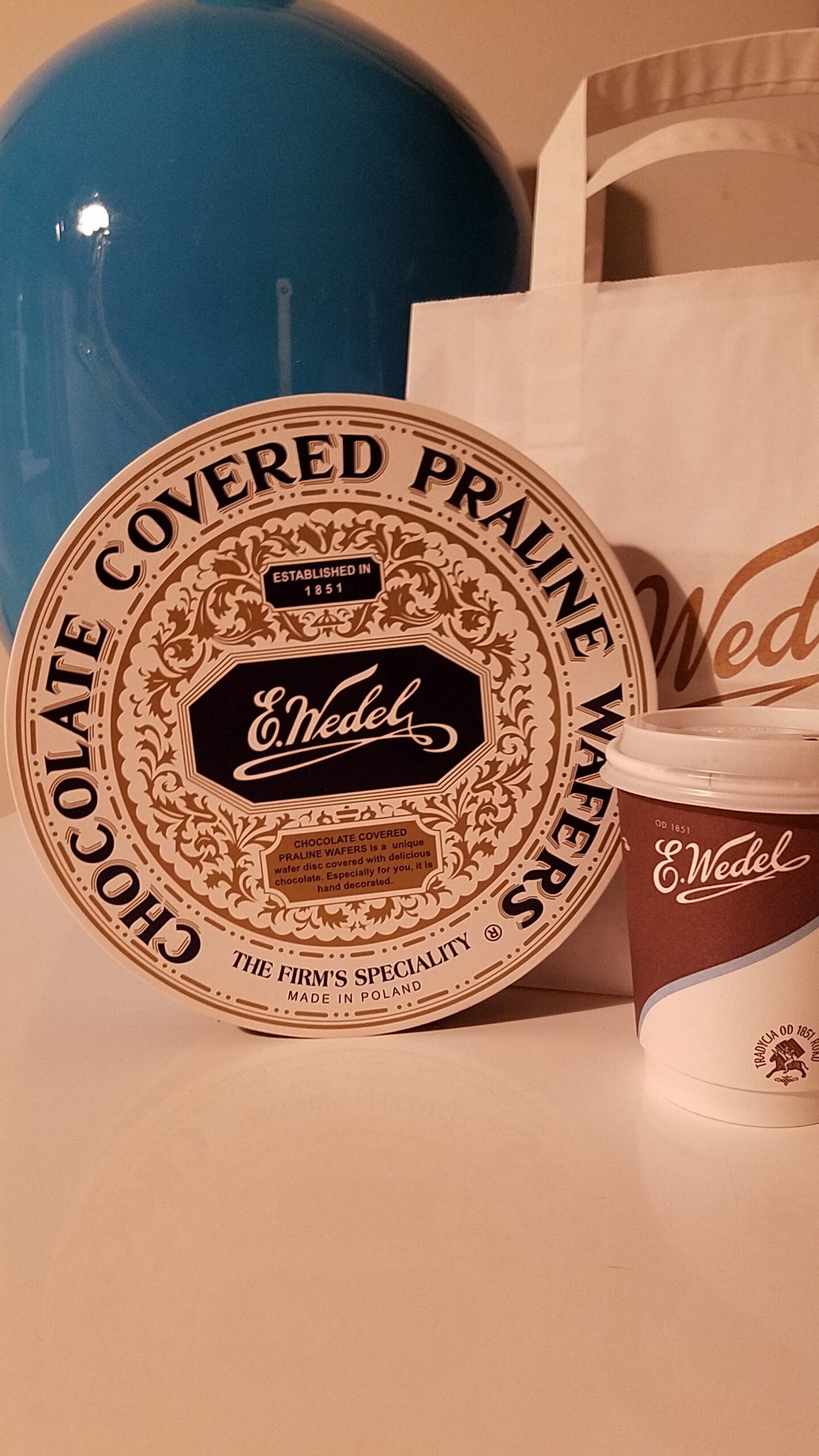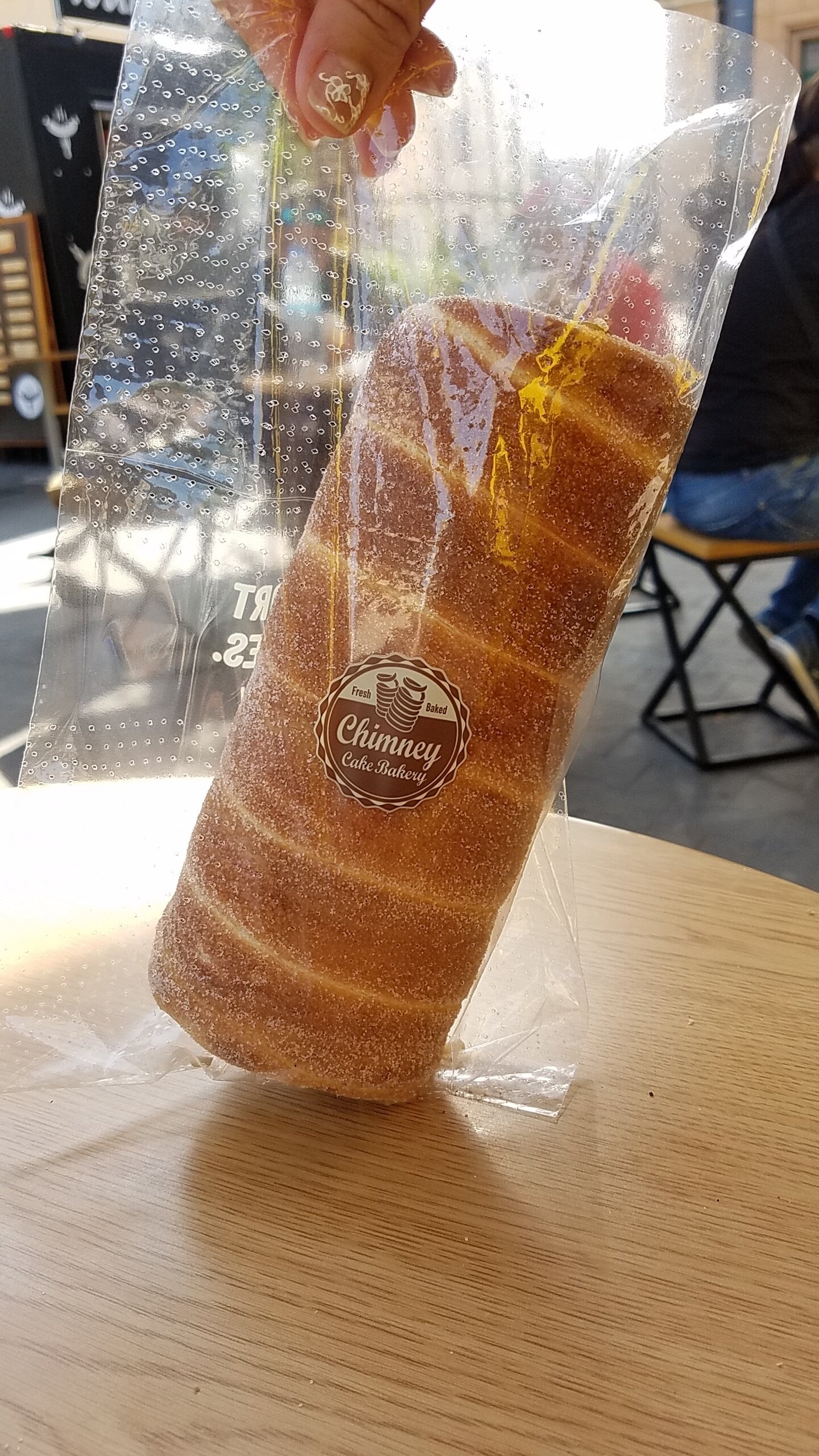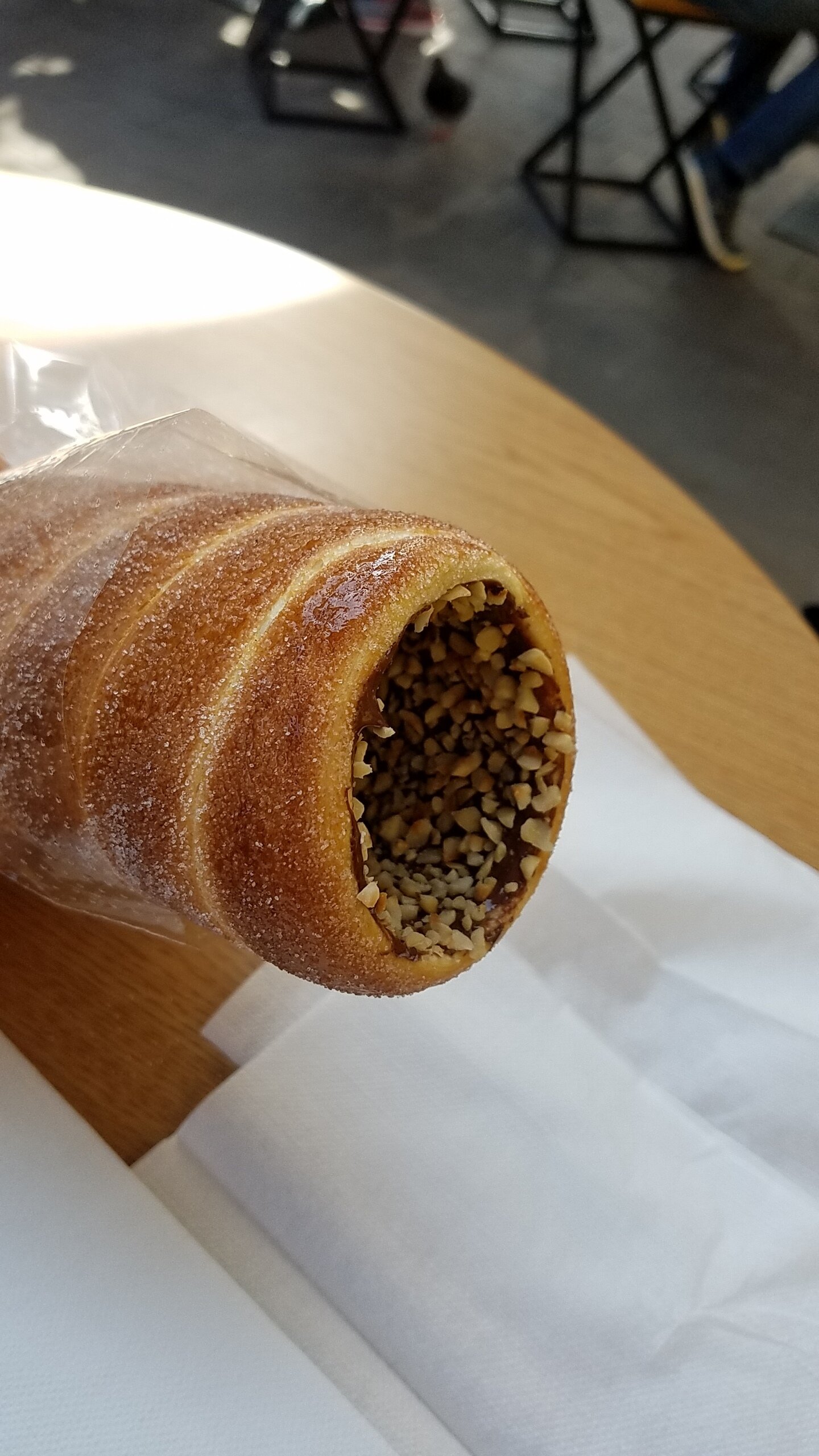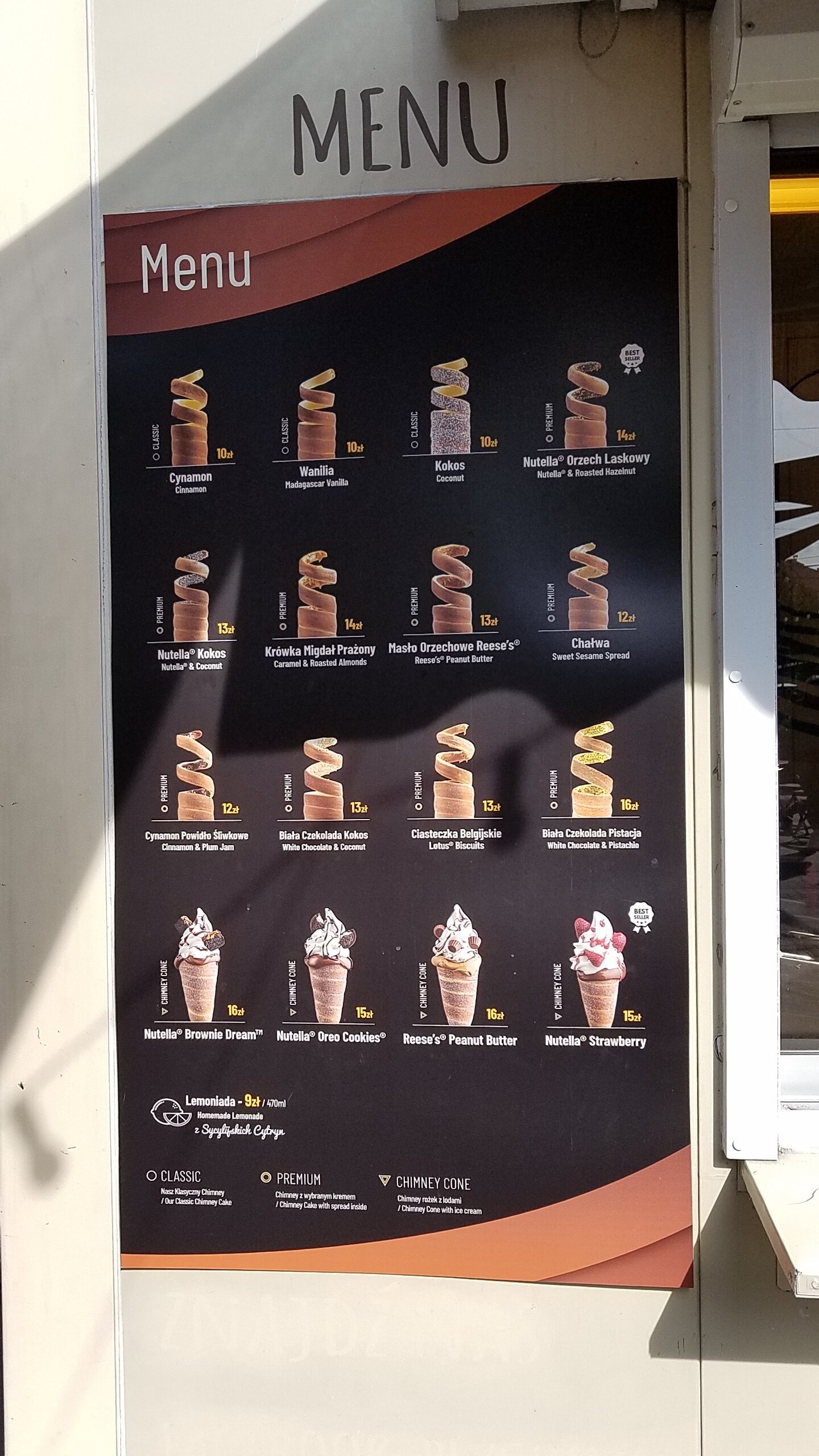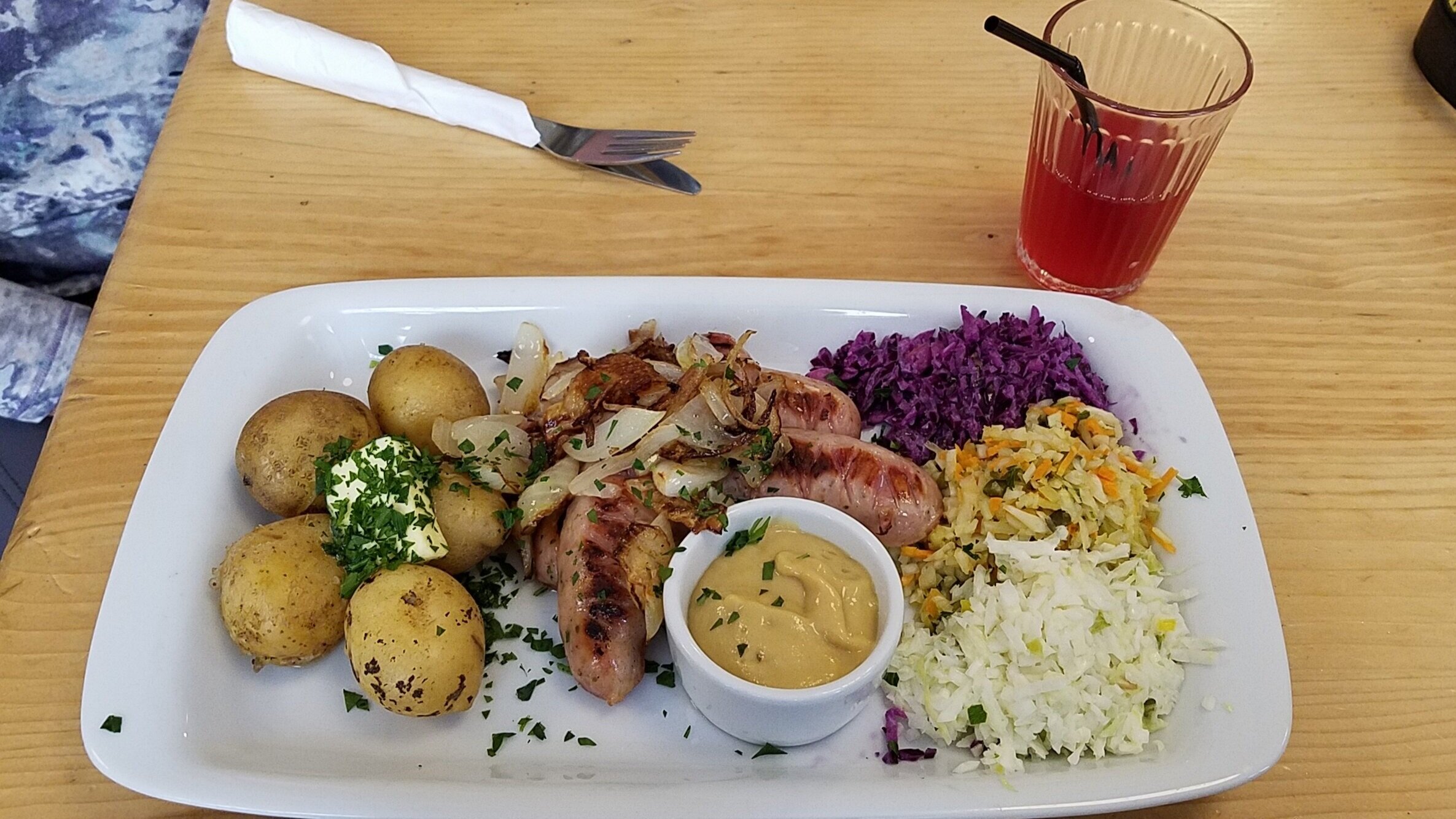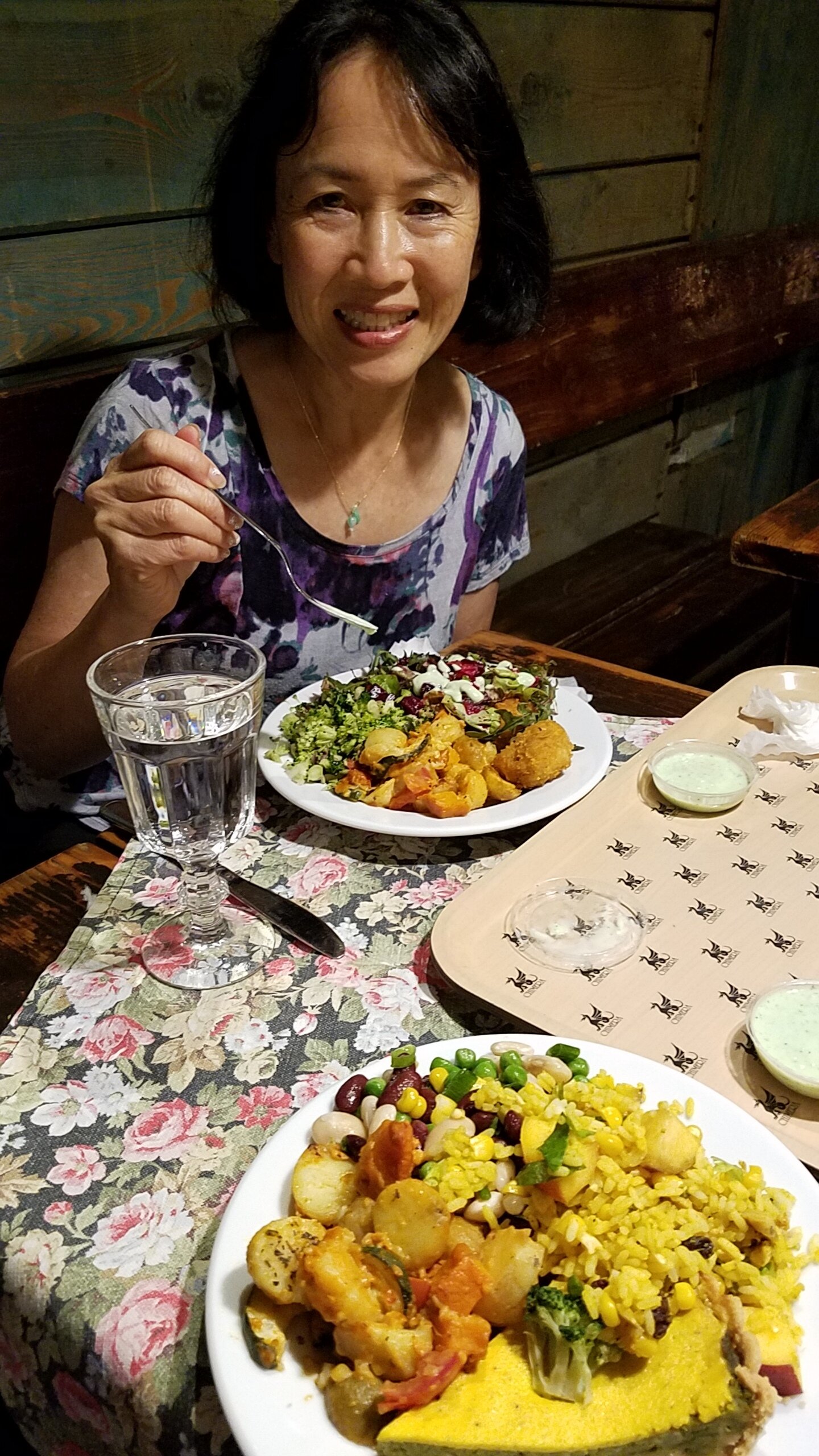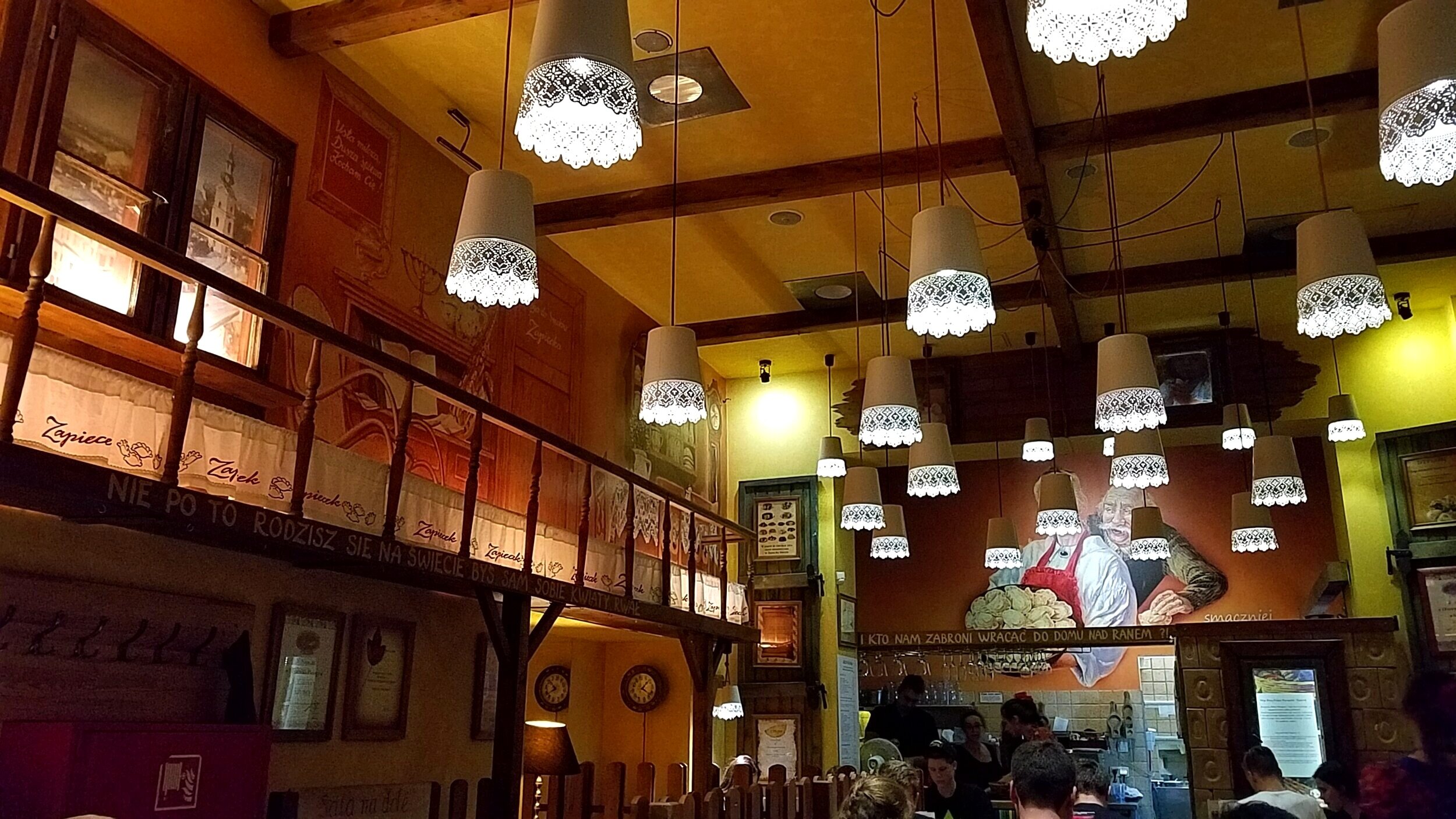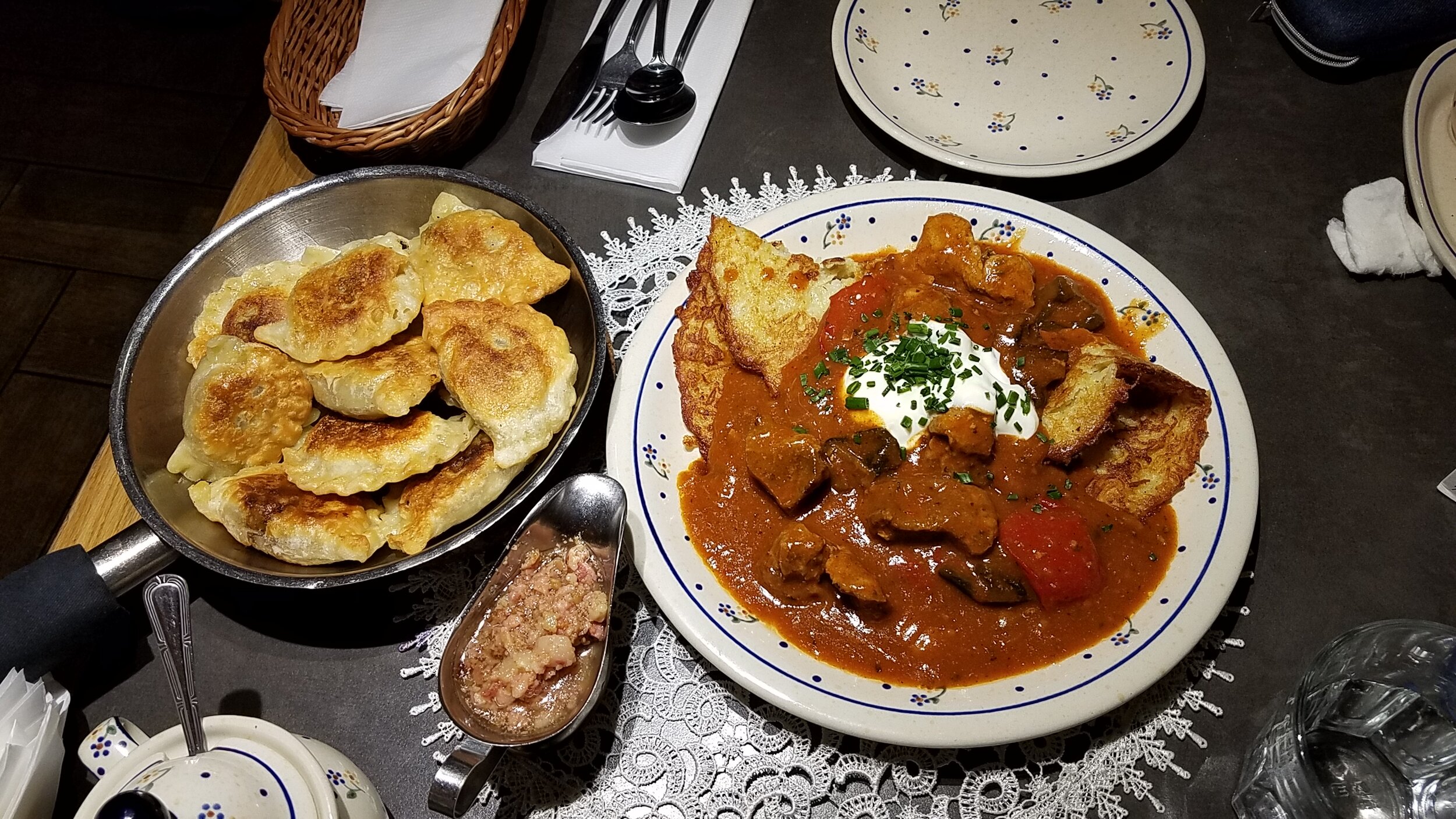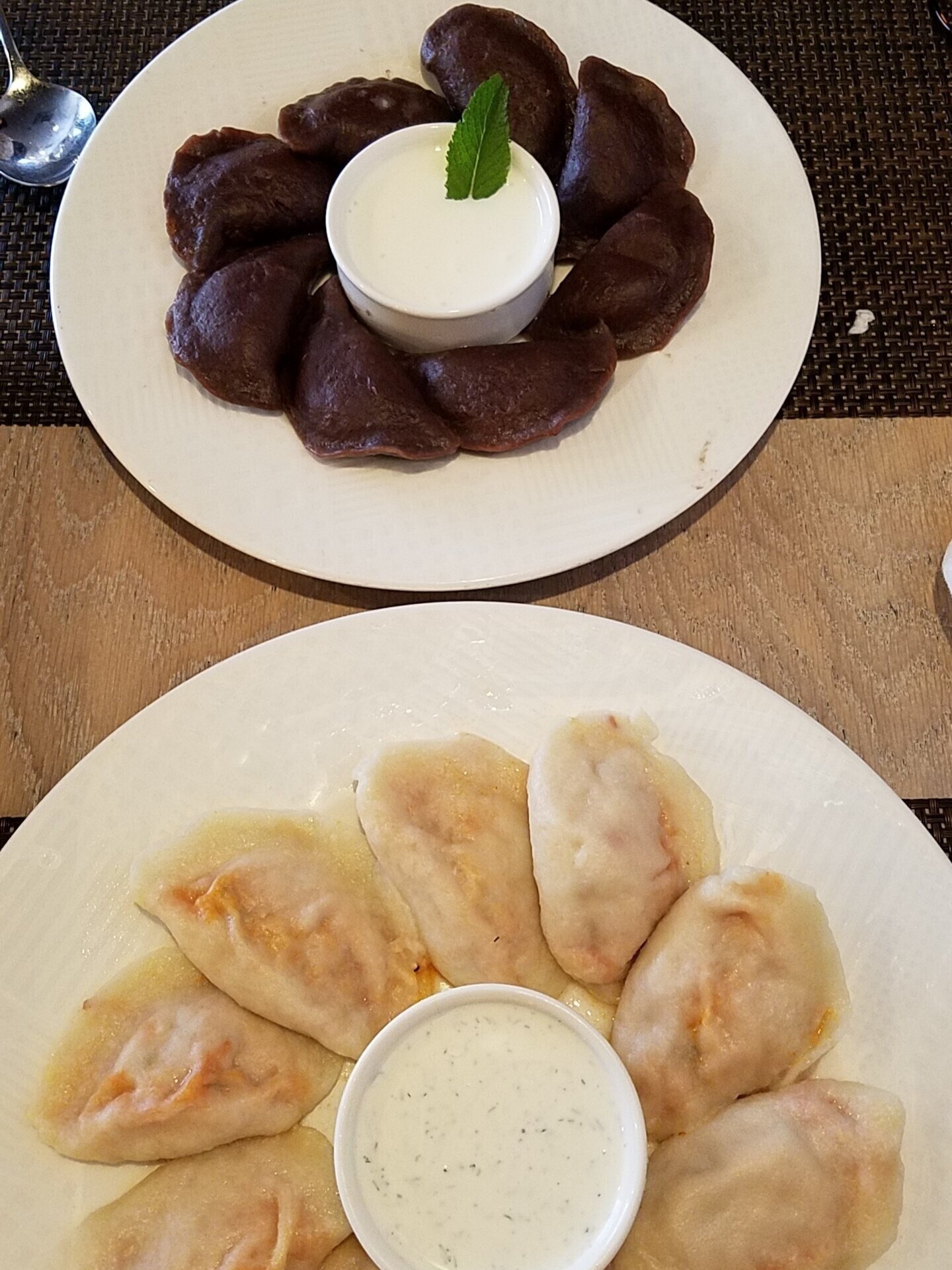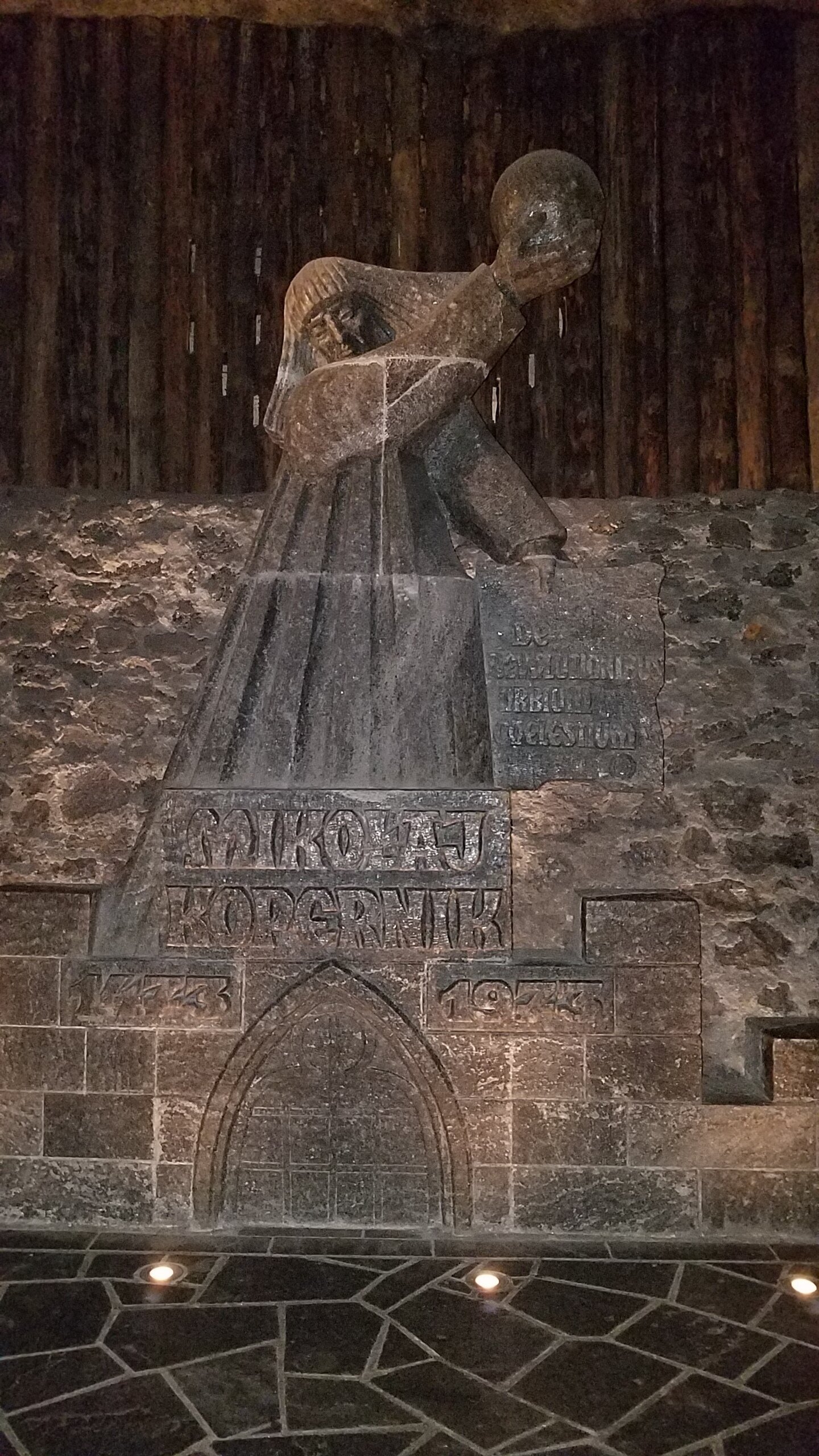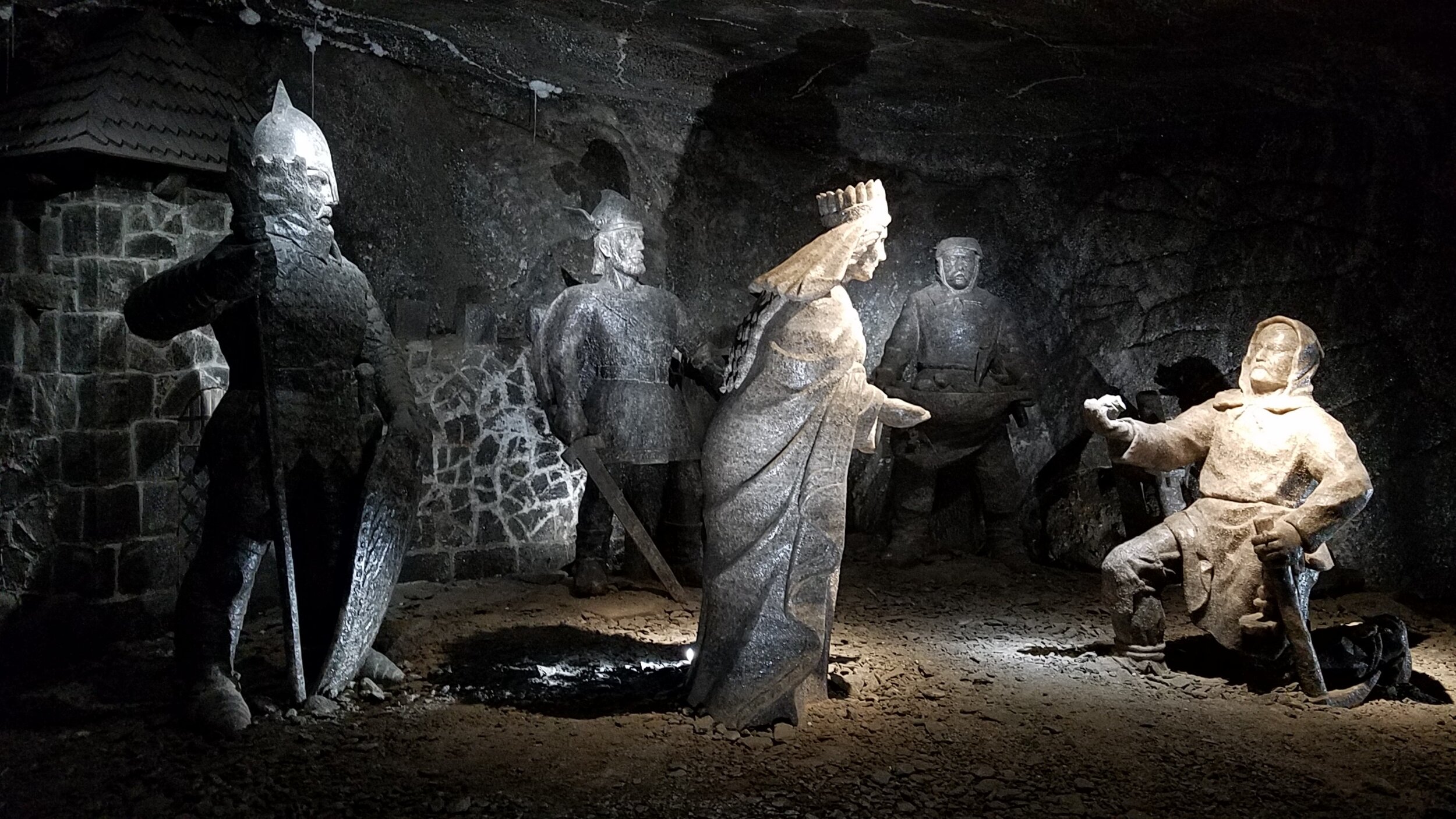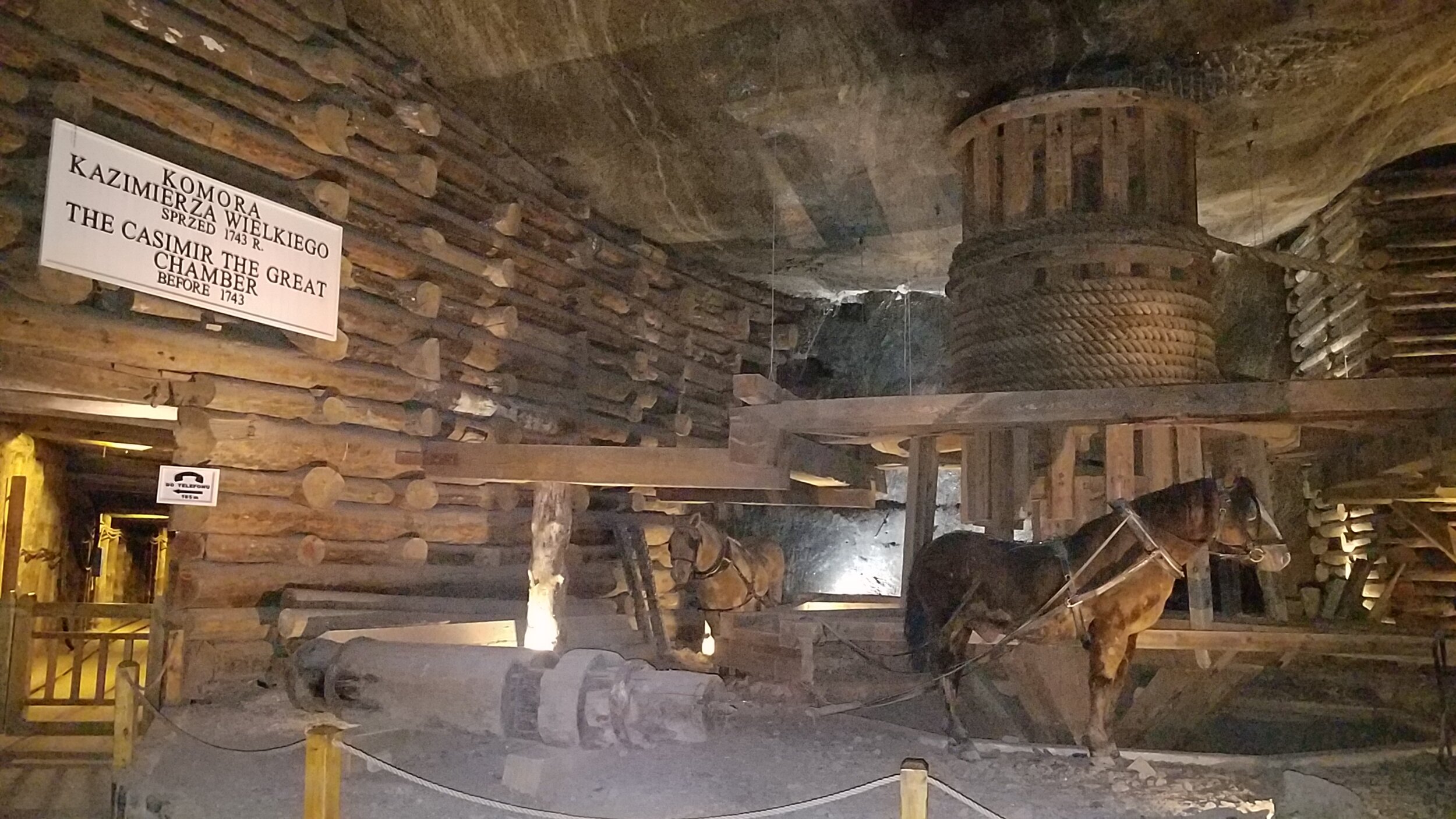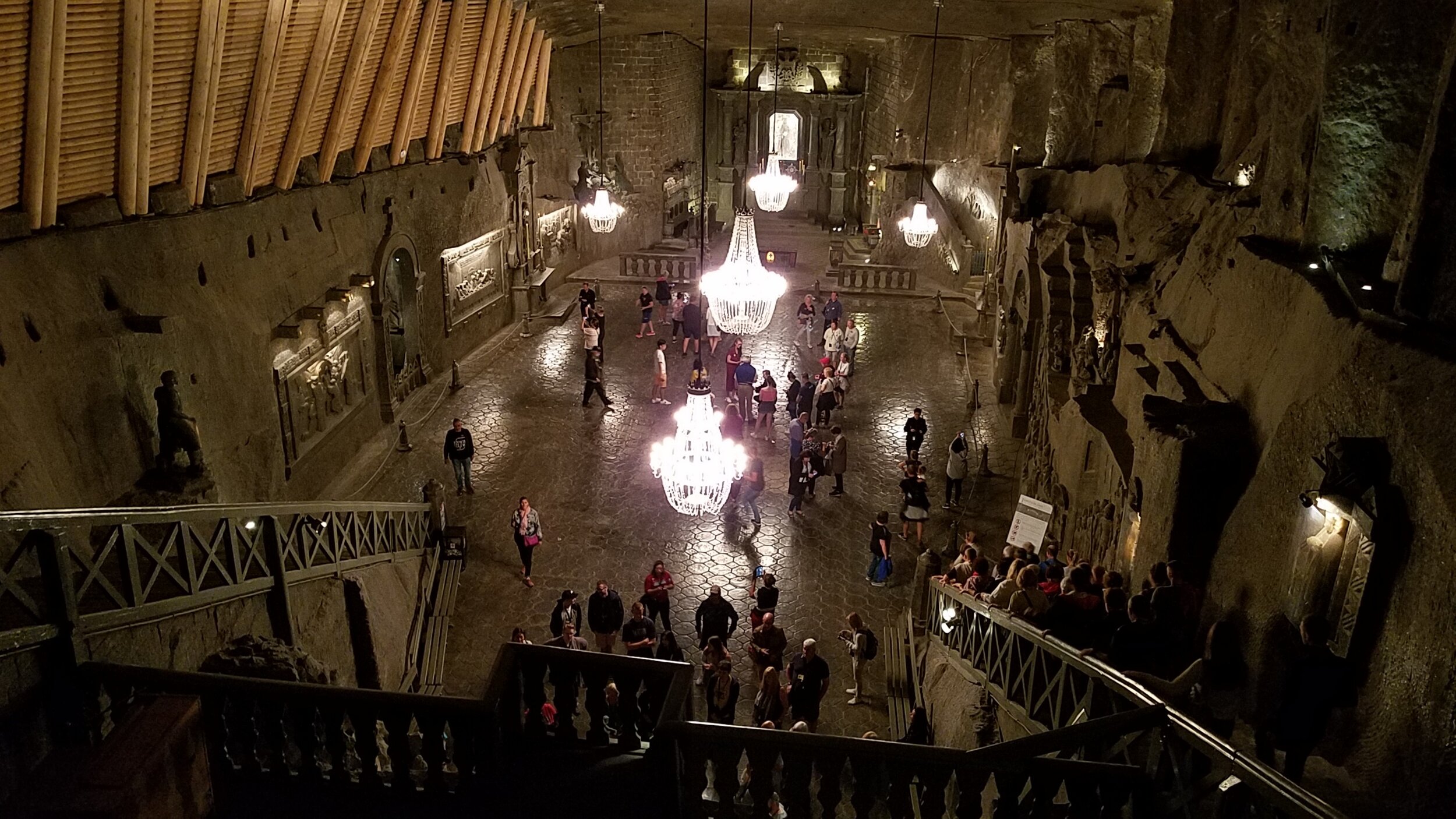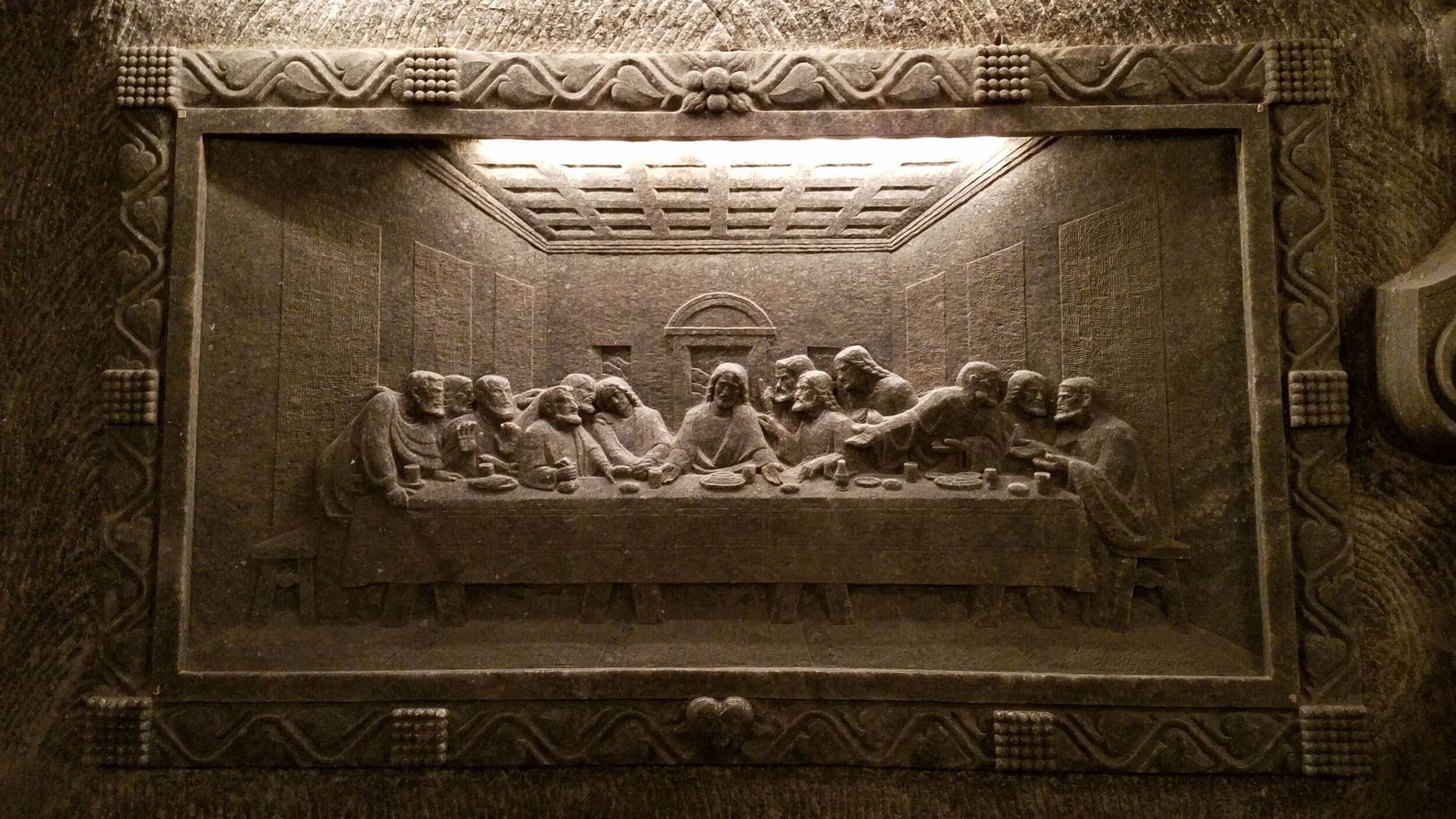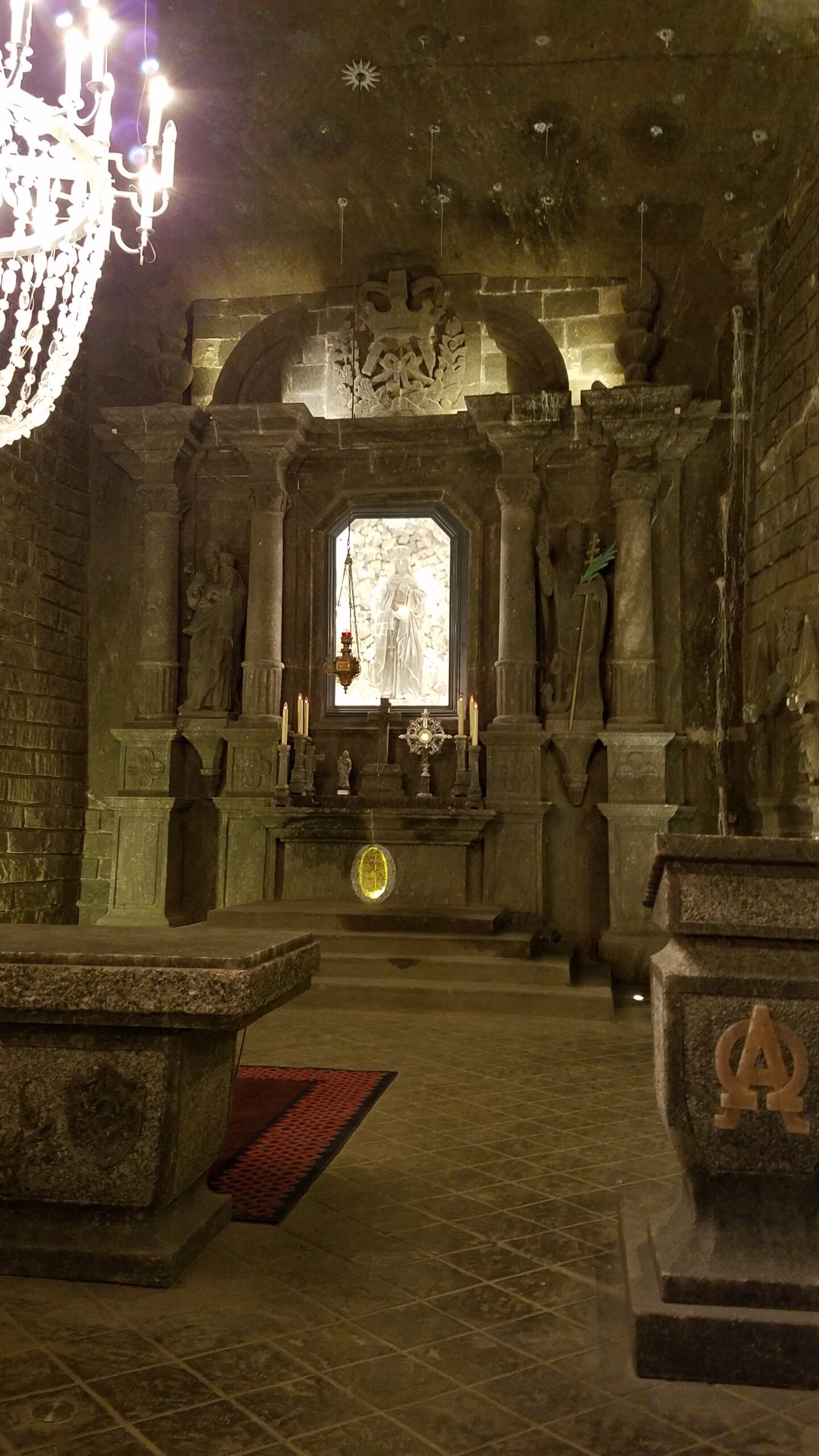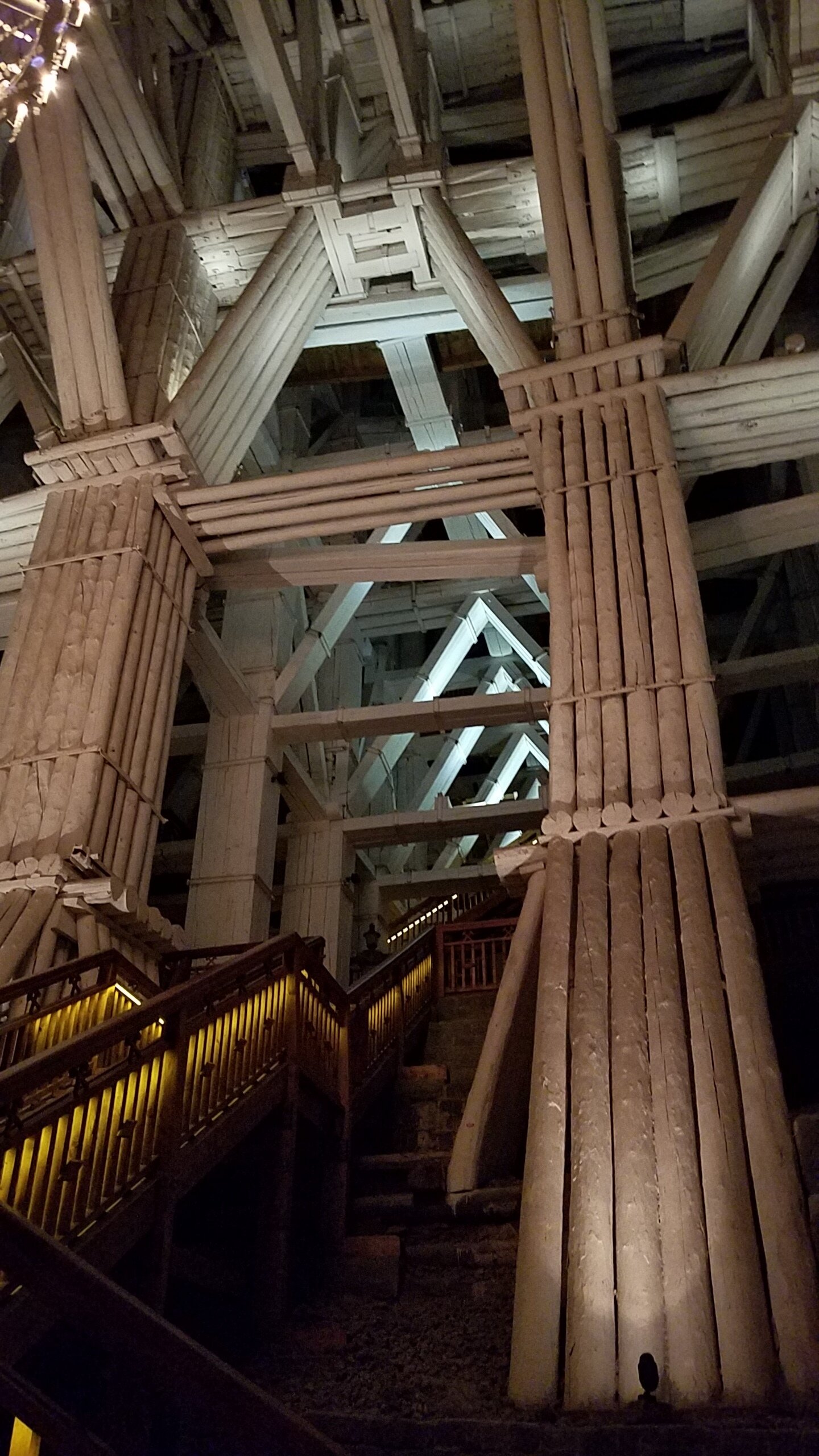The Long Market in Gdansk. Photos by Florence Wan
Where should I go next?
Before I left San Francisco for the G Adventures Moorish Spain tour, I confirmed a two-week window with my travel mate, Karen, to set off on our next adventure in September. We had dates but we didn’t have a destination. So I posed the question to my fellow tour travelers while walking through Cordoba. How about somewhere off the usual tourist path, somewhere less traveled? Central and Eastern Europe were suggested; Poland was enthusiastically recommended by Linda and her husband Alec. A few long-distance texts to Karen who was back in San Francisco (thanks, T-Mobile) and we were in agreement to visit Poland in the fall.
Knowing very little about Poland, I began to research the country the moment I returned home. I grabbed guidebooks from the library and spent hours on the computer. When I couldn’t find an organized tour that did a comprehensive trek of the country during our travel window, I had to build a DIY trip. Thanks to the internet, planning travel and communicating with international providers no longer requires a fax machine, just time and emails. Questions to Polish vendors were answered in excellent English. English is a language option on many websites where we found train schedules, museum hours, restaurant reviews, sightseeing options along with photos and videos highlighting the beauty of the cities and towns on our travel wish list.
I built a 13 day itinerary that started in the south and finished in the north. We flew into Krakow, continued by express train to Warsaw before ending in Gdansk near the Baltic Sea. I added two additional UNESCO World Heritage Sites to the list: Toruń, the birthplace of a famous astronomer, and Malbork, the former northern headquarters of the Teutonic Knights. Our route basically followed the Vistula River as it winds down from the Carpathian Mountains through central Poland to empty into the Bay of Gdansk.
What did I expect from Poland? I’m not sure; I was just excited to go somewhere new and unexpected. What I brought home from Poland were stories of her extended history, images of her glories and pain, glimpses of her future. We easily could have spent several additional days in each city. With even more time we could have made side trips to Poland’s smaller cities, to the countryside, or to the Tatra Mountains. There was so much to see and learn that I had trouble deciding what to write about for this blog. Picturesque. Modern. Medieval. Poignant. Political. Pragmatic. This old, yet new, country left a deep impression. This newbie to Poland is now hoping to return to discover more about this resilient country.
A very brief history lesson
My last history course was AP US History in high school which barely covered World War II. I didn’t take a World History course; now when I travel I wind up taking a crash course in the history of each new destination. Last year I had to catch up on Roman history. This year I read up on the history of Vietnam, Madrid and Andalusia, and Poland.
The Polish nation is over 1000 years old. In 966, Duke Mieszko I adopted Christianity, united the Slavic tribes and founded the Piast dynasty which lasted for over 400 years. In 1385, Jadwiega, the Polish queen married a Lithuanian duke who became the king of Poland, Władysław II Jagiełło, starting the Jagiellonian dynasty. Poland’s Golden Age spans the 14th and 15th centuries. In 1572 the Jagiellonian dynasty dies out, leaving the Polish-Lithuanian Commonwealth to the rule of the nobility who elected the ruler, with a preference of foreign kings. Ultimately these kings did not have the good of Poland in mind, leading to the country’s decline. The last ruler of the Polish-Lithuanian Commonwealth, Stanisław August Poniatowski attempted to pass reforms to strengthen the country but was stymied by internal opposition from the Polish nobility and external political manipulation by Russia. After an a series of three Partitions, Poland disappeared from the map, her territory divided among the empires of Austria, Prussia and Russia. The Second Polish Republic emerged following World War I, only to be overrun and occupied by the Nazis in World War II, then oppressed by Soviet communism. In the 1980’s, the Solidarity trade union galvanizes the anti-communism movement. In 1989, the transition to a democratic government begins with the overwhelming success of the Solidarity party gaining a majority of seats in the first partially-free legislative elections. The Third Polish Republic is born, joining NATO in 1999 and becoming a member of the European Union in 2004 .
My extremely brief review of Poland’s history does not include invasions by the Mongols, Russia, Sweden, Prussia; various wars against the Teutonic Knights, the Ottoman Empire, Russian Tsars; civil war and numerous uprisings. Poland’s history is battle-scarred but her people regrouped, recovered and rebuilt, many times. Much of what we see today has been reconstructed after the devastation of these battles. While the historical heart of Krakow survived World War II nearly intact, Warsaw was systematically demolished by the retreating Nazis while Gdansk was leveled by the Soviet Army on it’s way to Berlin to defeat the Nazis in 1945. We came across memorials to the fallen and to the fighters thorough our tour.
Where we went
Krakow
Krakow is the historical and spiritual capital of the country. The fortress complex on Wawel Hill was home to royalty for hundreds of years until the capital was moved to Warsaw. The city was rebuilt following the Tatar invasion of 1241, giving us the Rynek Glowny, the Main Market Square. At 40,000 square meters or 430,000 square feet, it is the largest square in Europe. In the middle of the vast space stands the Renaissance-styled Sukiennice, the Cloth Hall, a lone reminder of the market activities that used take place in the square. Krakow is also a university town, home to Central Europe’s second oldest university founded in 1364, now called Jagiellonian University. The Austrians took down the city walls, filled in the moat and planted trees to create the Planty, a 2.5 mile long park that encircles the medieval Old Town. Most of the city was spared destruction by the Nazis who wanted to turn Krakow into a capital as the seat of their Generalgouvernement following their invasion in 1939. South of Wawel Hill, Kazimierz was the historic home of Krakow’s large Jewish population, decimated during World War II, now busy with artists and their shops, food trucks, restaurants, music and visitors. We found Krakow to be more compact than we expected, full of energy and charm. And home to a fire-breathing dragon!
Warsaw
Warsaw, the current political and financial capital of Poland and her largest city began as a provincial town, a trading center on the bank of the Vistula. In 1569, the Sejm, Poland’s legislature, began to meet there. In 1596 Warsaw became the capital of the Polish state when Sigismund III Vasa relocated his court from Krakow in the south to the more centrally located Warsaw. The capital city became the hub of politics, commerce, education and culture, despite enduring waves of invasion, war and foreign rule. As the city re-emerged after the destruction of WWII, the historical center was carefully rebuilt following historical paintings and photos. The Soviets added broad boulevards, hulking apartment blocks and blocky government buildings. Follow ulica Nowy Swat as it blends into ulica Krakowskie Przedmieście, strolling under graceful wrought-iron lampposts, past rebuilt neo-classical facades, monuments, churches, the Presidential Palace and the University of Warsaw. The Royal Castle, bombed during WWII, is filled with Polish history and royal glory. Important artifacts and works of art were removed and hidden away when it became evident that the city would be invaded. Colorful leaning townhouses surround the intimate Old Town Square while the mermaid fountain gurgles in the midst of restaurants and artists’ stands. The slightly younger New Town spreads north from the Barbican and remains of the old defensive walls. Home to nearly two million Varsovians, Warsaw is spread out over 250 square miles. Modern skyscraper towers loom over the business district as trams and buses, and two underground metro lines crisscross the city. We had to give ourselves plenty of time to visit sites that were much farther apart that we expected.
Gdansk
Poland’s only seaport and shipbuilding center, Gdansk reached her Golden Age in the 17th century. As a member of the Hanseatic League, a mostly Germanic trade federation, international influences are evident in the city’s architecture and history. Merchants’ mansions would have filled the Main Town. Today, visitors can gawk at the eclectic and fanciful facades which reflect the wealth and personality of their original owners who hired Dutch, Flemish and Italian architects to design their impressive homes. Taxed on the frontage facing the street, the wider the home, the wealthier the family. During the post WWII reconstruction, 70% of the historical center was painstakingly rebuilt; the houses downsized to 70% of the original depth, and the remaining 30% became open space, giving the Main Town a welcoming airiness, despite the crowds. A wander down ulica Długa, the Long Street, and through Długi Targ, the Long Market, is a delight. A statue of Neptune stands proud near the Main Town Hall and its brick clock tower. In Gdansk, the clarion bells ring from the clock tower of the town hall, not from the tower of St. Mary’s Church around the corner.
The homes on short Mariacka Street, between the river and St. Mary’s Church, were rebuilt with their front porches and cellars. Stone carvings decorate the porch borders and expressive gargoyles cap the storm drain pipes. Cafes, bars and amber shops attempt to distract from the cuteness.
Not to be overlooked is the embankment area, the source of Gdansk’s wealth. The hulking medieval wooden crane, used to lift goods and for repairing ships, was powdered by men running in giant hamster wheels. Across the river, on Granary Island, a ferris wheel and a neon “Gdansk” sign welcomes visitors to the reemerging area, as new buildings replace the destroyed granaries.
We walked through the Old Town on our way to the Solidarity Center. Less touristy, more local, less English. I think the beautiful colorful jars I found in the Old Market Hall were filled with pickles and local honey.
The huge crane juts out over the river. The green glass roof of the Museum of the Second World War peeks over the buildings just north of the Main Town.
Toruń and Malbork
The Teutonic Order, hired by a Polish king to defend the kingdom’s borders against Prussia, remained in Poland, establishing a Teutonic state in the areas of modern day northern Poland, Kaliningrad, Lithuania, Latvia and Estonia. Over a century of antagonism culminated in the defeat of the Teutonic Knights in 1410 at the Battle of Grundenwald. The Order left behind an extensive array of castle-fortresses across their former territories, some now ruins, others now museums.
We squeezed in a two hour visit of Toruń, a medieval trading town, on our drive from Warsaw to Gdansk. Brick, lots of brick. Without access to stone or granite, handmade bricks were the main building material in Poland through the Middle Ages. Toruń’s claims to fame: birthplace of the astromomer Mikolaj Kopernik, also known as Copernicus; and its version of piernika, Polish-style gingerbread. The locals tore down the Teutonic castle; only a few walls, arches and the toilet tower remain standing.
For another visit to the Middle Ages, our trip to Malbork required a 30 minute train ride from Gdansk. On the crowded train, we met intrepid traveler Ching, her husband George and their friend May, also making the same side-trip so we had company for the walk from the station to the castle. This massive complex, the largest brick castle in the world, served as the Teutonic Knights’ headquarters for nearly 150 years. It was castle overload as the audioguide lead us through the Middle and the High Castles, the Grand Master’s Palace, and into an amber museum and the armory. Yes, the recording directed us to the latrine tower, set apart from the rest of the castle for obvious reasons.
Museums
Karen and I are both museum mavens, willing to spend hours viewing collections of art and artifacts. Poland does not shy away from preserving her past and her culture in scores of museums. The National Museum not only has large main branches in the three cities we visited, but also shares the nation’s collection of art treasures across smaller branches across the country. Did you know you can get up close, within a few feet, of a Leonardo da Vinci painting without needing to push your way through a crowd? In a darkened room on the 2nd floor of the National Art Museum in Krakow, the Lady with an Ermine smiles her sweet smile while glancing up from the ermine cradled in her arms. The curators thoughtfully provide a reproduction outside the exhibit room for patrons needing the selfie for their own collection.
In other museums, the horrors of war and occupation and struggle are not avoided. We choose not to go to Auschwitz-Birkenau but took our history lessons from the displays and exhibits at Oskar Schindler's Enamel Factory in Krakow; the Museum of the Warsaw Uprising and the POLIN Museum of the History of Polish Jews in Warsaw; and the Museum of the Second World War in Gdansk. The year 2019 not only marked the 80th anniversary of the outbreak of World War II in Poland; Poland also commemorated the 30 years since the fall of Communism and the rebirth of an independent Polish republic. The European Solidarity Center, just behind the old gates of the shipyard, recounts the struggles for freedom, for civil rights and democracy in the anticommunism movements not just in Poland but around the world.
Two smaller niche museums we also enjoyed are in Krakow. On the grounds of the former Schindler Enamel Factory and next door to the historical museum, the Museum of Contemporary Art in Krakow (MOCAK) displays modern works in a large airy, multi-floor building designed to reflect the industrial past of the area. Not even 500 feet from the National Art Museum, a few minutes’ walk outside of the Old Town, we spent an afternoon at The Stained Glass Workshop and Museum watching master artists at work, admiring the collection of historical and contemporary pieces upstairs before trying our hand at the exacting skills required to produce the glass art pieces. The building was designed specifically for the stained glass studio which as been in operation since 1902, the one of the oldest in Poland.
Churches
Through all the invasions and control by foreign rulers, religion was the common thread that kept the Polish people together despite exile, suffering and partition. Today, 90% of the population is Roman Catholic. At nearly every church we visited, local Poles were also in attendance in prayer and contemplation.
One of Poland’s favorite and most famous sons is St. John Paul II. Karol Wojtyła was born in Wadowice, not far from Krakow, and was the archbishop of Krakow before being a called to serve at the Vatican. On his visits to his homeland, his speeches challenged the authoritarian communist regime, providing hope and inspiration to the millions who attended his Masses. While he is buried in Rome, a museum in Wawel Cathedral and exhibits in the Archdiocesan Museum hold collections from his life as pope and archbishop.
Cuisine
For an introduction to Polish cuisine we met Anna in the Kasimierz district for our Eat Polska food tour in Krakow. Our first Polish munchie would look familiar to many of us - zapiekanka, or Polish pizza - is halved french bread covered with cheese and a sweet red sauce, along with assorted toppings if you wish. She introduced us to borscht, beet soup, and zurek, a creamy fermented-rye soup, before visiting a local market and a tiny milk bar for our first taste of periogi. Back in the Old Town, we faced off with a large tray covered with traditional bread, roasted liver and apples, stuffed cabbage rolls, potato & cheese dumplings and roasted beets. This gigantic serving of rustic items is reminiscent of the traditional foods I had in Prague in the Czech Republic. We ended with dessert, ice cream and pope’s cake, in a cafe a few blocks beyond the Planty. It is said that the light cream-filled cake was the favorite of the archbishop who became pope.
After the food tour, we agreed that we couldn’t eat the hearty Polish cuisine for the entirety of the next two weeks; despite being tasty we needed more variety in vegetables and carbohydrates. Fortunately because the cities on our itinerary are international destinations, we could choose from a number of international cuisines. Quiche and salad at a bakery/cafe which displayed meringues which we didn’t have time to taste. Crepe at nearby “Petite France.” Pizza from a wood burning oven and yummy tiramisu at Cyklop. American-style pancakes with fresh fruit, yogurt and granola at Fitagain Coffee & Food. Vietnamese pho and bun at Toan Pho, across the way from a bubble tea shop, both run by Vietnamese immigrants. Burgers, kabobs, sushi, Indian curry were also available. International chains that have made their way to Poland: Asian-vegetarian Loving Hut, Dairy Queen, KFC, Burger King, Pizza Hut, Starbucks, Nero Green, Costa Coffee, Restauracja McDonald's. Food truck pods and food halls are current trends re-purposing open spaces and older buildings, serving a collection of Polish and non Polish dishes for a cross-cultural eating experience.
Of course, we couldn’t completely avoid Polish foods and treats.
Lody, Polish ice cream, not as rich or tasty as Italian gelato, can be found everywhere. Small tasting cones cost $1 USD.
For breakfast and snacks, we ventured into cukiernias. On our third morning, as we hurried from the Old Town to Podgorze to make our entry time at the Schindler Factory Museum, we couldn’t find a coffee shop or restaurant with service at the early hour, but did find a small cukiernia that was open. The glass cases by the window displayed sweets and cakes that would be perfect for afternoon tea. Three older ladies stood behind the counter. Shelves filled with trays of what looked like sheet cakes and breads stood behind them. This was one of those ask then point and gesture situations as we tried to figure out what type of cakes were for sale and how to purchase some. We wound up with pieces of poppy seed cake and apple cake, sold by weight, for our breakfast on the run.
At A. Bilke in Warsaw, Poland’s famous pastry shop, we tried a paczki, a jam-filled doughnut. We weren’t impressed. Maybe we should have sampled a French-influenced pastry.
Also in Warsaw, Emil Wedel’s former house is now a chocolate shop and cafe. Along with pastries and chocolate gifts, they serve hot chocolate, czekolada do picia, melted chocolate in a cup. A choice of white, milk or dark available in small, medium or large sizes. Warm, extremely thick and rich. Dare I say that the small cup that I had that night was better than the mug of chocolate caliente I had in Madrid?
A treat that we both brought home was gingerbread from Poland’s gingerbread headquarters, the medieval town of Toruń. Pierniczki shops were either modern and sparsely decorated, or older with shelves filled with gingerbread in all sizes and flavors. Decorated with icing. Dipped in dark or white chocolate. Filled with jam: strawberry, blueberry, raspberry, lemon, plum, currant, apricot, or rose.
A sweet that caught our eye at the Judah Square food truck park was the chimney cake. Strips of dough are wound around a cylinder or wooden stick, coated with sugar and roasted, preferably over a fire. We had the classic log shape filled with Nutella and chopped nuts for dessert after our burgers.
Our most inexpensive meals were found at the milk bars, bar mleczny. These cafeterias are holdovers from the Communist era when they were state-supported to provide cheap and quick meals. The popular Milkbar Tomasza was around the corner from our Krakow guesthouse near the Main Market Square. Fortunately we arrived before the lunch rush of young workers but still had to share a 10 seat table. Their menu consists mainly of lunch plates, described in English for the tourists that can find the modern but compact space. I was excited for my lunch plate of kielbasa and three salads until my plate came with cabbage served three ways: white cabbage slaw, red cabbage slaw and pickled.
Across the opposite corner of the Rynek Glowny, Chimera Cafeteria allowed us to build a plate of 6 portions for 19 PLN, about $5 USD from a spread of salads; heated meat, fish and vegetarian items; and desserts. According to their website, they offer 40 types of salads and 30 types of warm dishes on the 30 foot long counter. We were treated with live music from a young lady singing familiar western songs in Polish, accompanied by piano. Boogie Woogie Bugle Boy in Polish is still upbeat and fun.
We had our best Polish meal in Warsaw. From the rustic cottage decor and their servers’ costume/uniform, the branch of Zapiecek on al. Jerozolimskie looked to be too cheesy and kitschy to be any good but it was nearby our bed and breakfast. And it’s a chain with seven restaurants throughout Warsaw. Despite the cons, the food was much better than we expected. Goulash with pork over potato pancakes and the fried pierogi were delicious.
I am a dumpling devotee so one of my “must do’s” on this trip was to sample many versions of the Polish dumpling, the pierogi. We found yet more variations of the pierogi in Gdansk. At Pierogarnia Stary Młyn, one can order dumplings boiled, baked or fried, with a choice of accompanying sauces. The baked ones were large, similar to a Chinese curry tart or a British pasty, with the filling encased in thick flaky dough. Considered to be one of the best in the city, Pierogarnia Mandu has a thoroughly modern decor and a queue for its menu of internationally influenced dumplings. Here we finally managed to save room in our tummies for a sweet periogi, Oreo cookies in chocolate dough served with cream sauce. Yes, it was worth the wait.
One more only in Poland site - Wieliczka Salt Mine
We were picked up by the '“Discover Krakow” minibus outside the guesthouse at 8:50am. It was our second morning in Poland and neither of us had slept much the night before. We were glad we purchased the ticket plus transportation package; we really needed the nap during the hour long drive.
Now a UNESCO World Heritage site, the mine produced table salt from the 13th century up through 2007. Today’s miners work to preserve the miles of underground chambers and tunnels and maintain the supporting pine beams. The tour guide leads visitors down 43 flights of stairs, 380 steps, to begin the 2 mile long tour at level one. We walk through tunnels and chambers, carved into the rock salt. The guide describes the mining process and the machinery developed to bring the salt blocks or barrels of crushed salt to the surface. The horses brought down to the mine to work the horse treadmills never saw daylight again. The miners spent hours underground and in their spare time carved out what became four chapels, numerous statues and tableau, and even salt chandeliers. Today church services and special events are held in the underground chapels and halls while elevators whisk visitors up to the surface.
More notes from a memorable journey:
My pronunciation of “Dzień dobry!” (hello) is spot on.
Teenagers around the world have similar clothing and hair styles.
Marveling at the contrast of the historical vs the modern, just across the street from one another.
Appreciating the some of the 300 shades of amber and objects, both functional and decorative, made with the fossilized resin. Amber is not stone! Head out the beaches of the Baltic after a storm to find nuggets washed up on shore.
The kindness of strangers who helped with translation, pointed out the correct way to go, showed me how to find the next train on the two-part schedule when we jumped off the train many stops too early.
